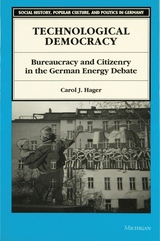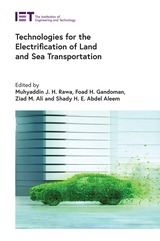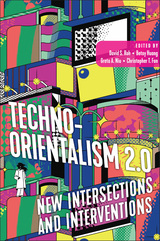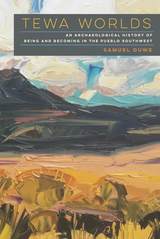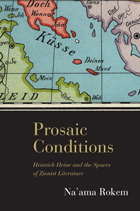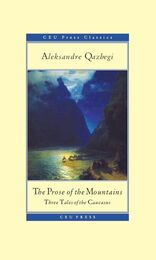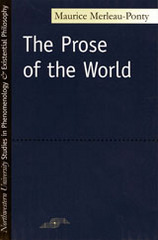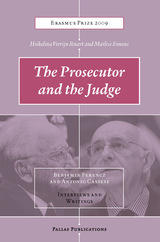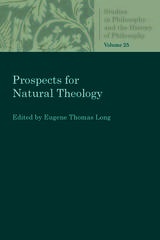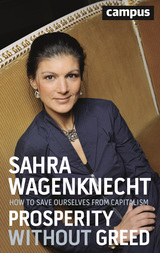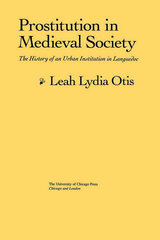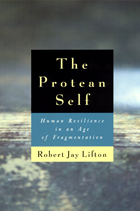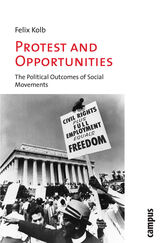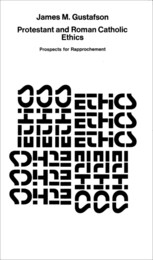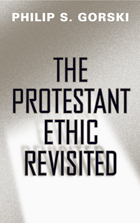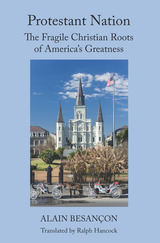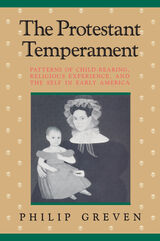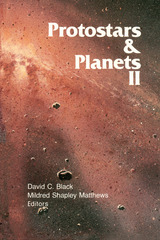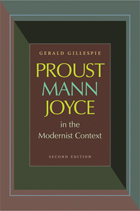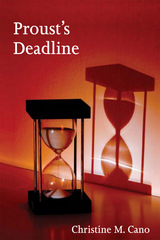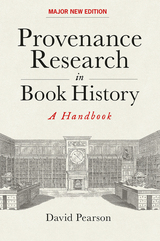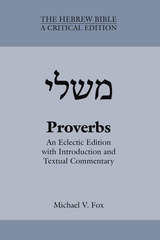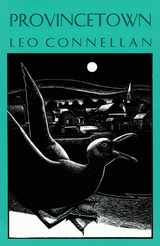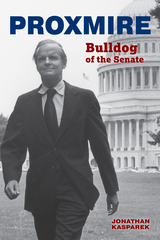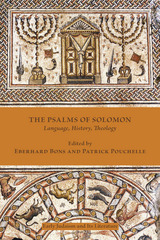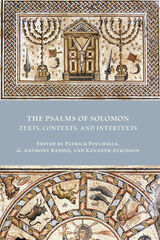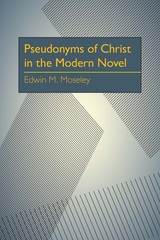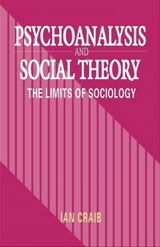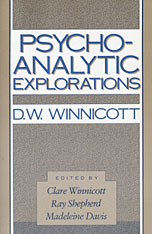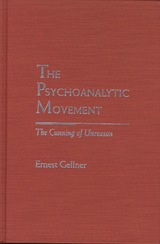Propositional Structure and Illocutionary Force: A Study of the Contribution of Sentence Meaning to Speech Acts
Jerrold J. Katz
Harvard University Press This book offers a new theory of the structure of propositions, which provides a uniform treatment of constative and performative sentences. Jerrold Katz shows that performatives can enter into logically valid arguments, even though, as Austin claimed, they can't be true or false. Katz also argues that “speech act theory” is not a theory at all, but an assortment of observations about heterogeneous aspects of the performance of speech acts. He shows that a better explanation of speech acts is given by a grammatical account of the iIIocutionary potential of sentences and a separate pragmatic account of how this potential is realized in actual speech situtations. Katz provides such a grammatical account, which makes it possible for the first time to explain the iIIocutionary potential of sentences within grammar.
 Propulsion Systems for Hybrid Vehicles
John M. Miller
The Institution of Engineering and Technology, 2004 The automotive industry is waking up to the fact that hybrid electric vehicles could provide an answer to the ever-increasing need for lower-polluting and more fuel-efficient forms of personal transport. This is the first book to give comprehensive coverage of all aspects of the hybrid vehicle design, from its power plant and energy storage systems, to supporting chassis subsystems necessary for realising hybrid modes of operation. Key topics covered include hybrid propulsion system architectures, propulsion system sizing, electric traction system sizing and design, loss mechanisms, system simulation and vehicle certification. Offering in-depth coverage of hybrid propulsion topics, energy storage systems and modelling, and supporting electrical systems, this book will be an invaluable resource for practising engineers and managers involved in all aspects of hybrid vehicle development, modelling, simulation and testing. It will also be of interest to postgraduate students in the field.
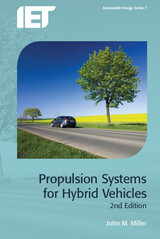 Propulsion Systems for Hybrid Vehicles
John M. Miller
The Institution of Engineering and Technology, 2010 Worldwide, the automotive industry is being challenged to make dramatic improvements in vehicle fuel economy. In Europe there are CO2 emissions penalties prorated by the degree to which vehicles exceed mandated CO2 levels. In the United States, vehicle fuel economy targets set by Congress in 2007 for 20 per cent fuel economy improvement by 2020 are now being accelerated by the Obama administration to 35.5 mpg by 2016 for a passenger car. Taking effect in 2012, the new rules set more aggressive fuel economy measures that will require significant gains in engine and driveline efficiency, better performance cabin climate control and the introduction of electric hybridization. This 2nd Edition of Propulsion Systems for Hybrid Vehicles addresses the electrification innovations that will be required, ranging from low end brake energy recuperators, idle-stop systems and mild hybrids on to strong hybrids of the power split architecture in both single mode and two mode and introducing new topics in plug-in hybrid and battery electrics. Important topics of the 1st Edition are retained and expanded and some outdated material has been replaced with new information.
Prosaic Conditions: Heinrich Heine and the Spaces of Zionist Literature
Na'ama Rokem
Northwestern University Press, 2013 In her penetrating new study, Na’ama Rokem observes that prose writing—more than poetry, drama, or other genres—came to signify a historic rift that resulted in loss and disenchantment. In Prosaic Conditions, Rokem treats prose as a signifying practice—that is, a practice that creates meaning. During the nineteenth and twentieth centuries, prose emerges in competition with other existing practices, specifically, the practice of performance. Using Zionist literature as a test case, Rokem examines the ways in which Zionist authors put prose to use, both as a concept and as a literary mode. Writing prose enables these authors to grapple with historical, political, and spatial transformations and to understand the interrelatedness of all of these changes.
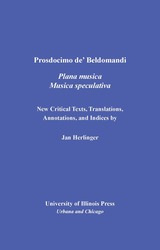 Prosdocimo de' Beldomandi's Musica Plana and Musica Speculativa
Prosdocimo de Beldomandi. Translated by Jan Herlinger.
University of Illinois Press, 2007 Available in English for the first time, Prosdocimo's Tractatus plane musice (1412) and Tractatus musice speculative (1425) are exemplary texts for understanding the high sophistication of music theory in the early fifteenth century. Known for considering music as a science based on demonstrable mathematical principles, Prosdocimo praises Marchetto for his theory of plainchant but criticizes his influential Lucidarium for its heterodox mathematics. In dismissing Marchetto as a “mere performer,” Prosdocimo takes up matters as broad as the nature and definition of music and as precise as counterpoint, tuning, and ecclesiastical modes. The treatises also reveal much about Prosdocimo’s understanding of plainchant; his work with Euclid's Elementa; and his familiarity with the music theory of Boethius, Macrobius, and Johannes de Muris. A foremost authority on Italian music theory of the Middle Ages and early Renaissance, Jan Herlinger consults manuscripts from Bologna, Cremona, and Lucca in preparing these valuable first critical editions.
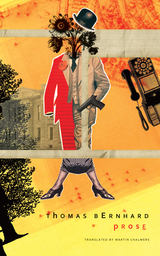 Prose
Thomas Bernhard
Seagull Books, 2010 “His manner of speaking, like that of all the subordinated, excluded, was awkward, like a body full of wounds, into which at any time anyone can strew salt, yet so insistent, that it is painful to listen to him,” from The Carpenter The Austrian playwright, novelist, and poet Thomas Bernhard (1931–89) is acknowledged as among the major writers of our time. The seven stories in this collection capture Bernhard’s distinct darkly comic voice and vision—often compared to Kafka and Musil—commenting on a corrupted world. First published in German in 1967, these stories were written at the same time as Bernhard’s early novels Frost, Gargoyles, and The Lime Works, and they display the same obsessions, restlessness, and disarming mastery of language. Martin Chalmer’s outstanding translation, which renders the work in English for the first time, captures the essential personality of the work. The narrators of these stories lack the strength to do anything but listen and then write, the reader in turn becoming a captive listener, deciphering the traps laid by memory—and the mere words, the neverending words with which we try to pin it down. Words that are always close to driving the narrator crazy, but yet, as Bernhard writes “not completely crazy.” “Bernhard's glorious talent for bleak existential monologues is second only to Beckett's, and seems to have sprung up fully mature in his mesmerizing debut.”—From Publishers Weekly, on Frost “The feeling grows that Thomas Bernhard is the most original, concentrated novelist writing in German. His connections . . . with the great constellation of Kafka, Musil, and Broch become ever clearer.” —George Steiner, Times Literary Supplement, on Gargoyles
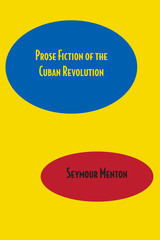 Prose Fiction of the Cuban Revolution
By Seymour Menton
University of Texas Press, 1975 Recipient of the Hubert Herring Memorial Award from the Pacific Coast Council on Latin American Studies for the best unpublished manuscript of 1973, Prose Fiction of the Cuban Revolution is an in-depth study of works by Cubans, Cuban exiles, and other Latin American writers. Combining historical and critical approaches, Seymour Menton classifies and analyzes over two hundred novels and volumes of short stories, revealing the extent to which Cuban literature reflects the reality of the Revolution. Menton establishes four periods—1959–1960, 1961–1965,1966–1970, and 1971–1973—that reflect the changing policies of the revolutionary government toward the arts. Using these periods as a chronological guideline, he defines four distinct literary generations, records the facts about their works, establishes coordinates, and formulates a system of literary and historical classification. He then makes an aesthetic analysis of the best of Cuban fiction, emphasizing the novels of major writers, including Alejo Carpentier's El siglo de las luces, and José Lezama Lima's Paradiso. He also discusses the works of a large number of lesser-known writers, which must be considered in arriving at an accurate historical tableau. Menton's exploration of the short story combines a thematic and stylistic analysis of nineteen anthologies with a close study of six authors: Guillermo Cabrera Infante, Calvert Casey, Humberto Arenal, Antonio Benítez, Jesús Díaz Rodríguez, and Norberto Fuentes. Several chapters are devoted to the increasing number of novels and short stories written by Cuban exiles as well as to the eighteen novels and one short story written about the Revolution by non-Cubans, such as Julio Cortázar, Carlos Martínez Moreno, Luisa Josefina Hernández, and Pedro Juan Soto. In studying literary works to reveal the intrinsic consciousness of a historical period, Menton presents not only his own views but also those of Cuban literary critics. In addition, he clarifies the various changes in the official attitude toward literature and the arts in Cuba, using the revolutionary processes of several other countries as comparative examples.
 The Prose of Life: Russian Women Writers from Khrushchev to Putin
Benjamin M. Sutcliffe
University of Wisconsin Press, 2009 Both before and after the collapse of the Soviet Union, everyday life and the domestic sphere served as an ideological battleground, simultaneously threatening Stalinist control and challenging traditional Russian gender norms that had been shaken by the Second World War. The Prose of Life examines how six female authors employed images of daily life to depict women’s experience in Russian culture from the 1960s to the present. Byt, a term connoting both the everyday and its many petty problems, is an enduring yet neglected theme in Russian literature: its very ordinariness causes many critics to ignore it. Benjamin Sutcliffe’s study is the first sustained examination of how and why everyday life as a literary and philosophical category catalyzed the development of post-Stalinist Russian women’s prose, particularly since the collapse of the Soviet Union.
A focus on the representation of everyday life in women’s prose reveals that a first generation of female writers (Natal’ia Baranskaia, Irina Grekova) both legitimated and limited their successors (Liudmila Petrushevskaia, Tat’iana Tolstaia, Liudmila Ulitskaia, and Svetlana Vasilenko) in their choice of literary topics. The Prose of Life traces the development, and intriguing ruptures, of recent Russian women’s prose, becoming a must-read for readers interested in Russian literature and gender studies. 2009 Outstanding Academic Title, Choice Magazine
The Prose of the Mountains: Three Tales of the Caucasus
Aleksandre Qazbegi
Central European University Press, 2015 The Prose of the Mountains contains three tales of the Caucasus by Aleksandre Qazbegi, one of the most prescient and gifted chroniclers of the Georgian encounter with colonial modernity. His stories offer an invaluable counterpoint to the predominantly Russian narratives that have hitherto shaped scholarly accounts of the nineteenth-century Caucasus. “Memoirs of a Shepherd” poignantly chronicles the young author’s decision to pass seven years of his life as a shepherd with Georgian mountaineers. “Eliso” (the name of a Chechen girl) offers one of the most searing accounts on record of the forced migration of this people from their homeland to Ottoman lands. Set in the sixteenth century, “Khevis Beri Gocha” (the name of a Georgian village chief) classically chronicles a tragic misunderstanding between a severe father and his loving son.
The Prose of the World
Maurice Merleau-Ponty
Northwestern University Press, 1973 The work that Maurice Merleau-Ponty planned to call The Prose of the World, or Introduction to the Prose of the World, was unfinished at the time of his death. The book was to constitute the first section of a two-part work whose aim was to offer, as an extension of his Phenomenology of Perception, a theory of truth. This edition's editor, Claude Lefort, has interpreted and transcribed the surviving typescript, reproducing Merleau-Ponty's own notes and adding documentation and commentary.
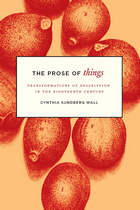 The Prose of Things: Transformations of Description in the Eighteenth Century
Cynthia Sundberg Wall
University of Chicago Press, 2006 Virginia Woolf once commented that the central image in Robinson Crusoe is an object—a large earthenware pot. Woolf and other critics pointed out that early modern prose is full of things but bare of setting and description. Explaining how the empty, unvisualized spaces of such writings were transformed into the elaborate landscapes and richly upholstered interiors of the Victorian novel, Cynthia Sundberg Wall argues that the shift involved not just literary representation but an evolution in cultural perception.
In The Prose of Things, Wall analyzes literary works in the contexts of natural science, consumer culture, and philosophical change to show how and why the perception and representation of space in the eighteenth-century novel and other prose narratives became so textually visible. Wall examines maps, scientific publications, country house guides, and auction catalogs to highlight the thickening descriptions of domestic interiors. Considering the prose works of John Bunyan, Samuel Pepys, Aphra Behn, Daniel Defoe, Samuel Richardson, David Hume, Ann Radcliffe, and Sir Walter Scott, The Prose of Things is the first full account of the historic shift in the art of describing.
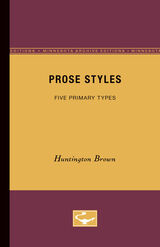 Prose Styles: Five Primary Types
Huntington Brown
University of Minnesota Press, 1966
Prose Styles was first published in 1966.How can one distinguish in any text between features answering to the timeless function of its type and those accountable to passing tendencies of periods, fashions, schools, and individual writers? This study is addressed to that general question, and, while it is not a writer’s manual in any sense, it should prove enlightening and helpful to anyone with a genuine interest in style.The author identifies, with concreteness as to detail and illustration, the styles of five broad types of non-metrical communication in spoken or written discourse that have been conspicuous in the culture or life of the western world from remote times. He names these styles the deliberative, the expository, the tumbling, the prophetic, and the indenture. In discussing each, he explains how each set of features is the virtually inevitable articulation of the purpose of a type of transaction the conditions of which have remained constant from age to age. He demonstrates, for example, that there are striking elementary affinities between such otherwise dissimilar works as the Sermon on the Mount and Lamb’s “Dissertation upon Roast Pig,” or between Beowulf and a modern-day newspaper sports column.Dudley Fitts comments: “This is a popular book for the literate public: no ‘easy,’ not ‘superficial,’ but clearly not recondite.”The book will be especially interesting to professional writers, as well as to students and teachers of literature.This is Volume 1, Minnesota Monographs in the Humanities, of which Gerhard H. Weiss is the series editor.
 Prosecuting Apartheid-Era Crimes?: A South African Dialogue on Justice
Tyler Giannini
Harvard University Press In December 2005, South Africa’s National Prosecuting Authority (NPA) promulgated a controversial policy on the prosecution of apartheid-era crimes, sparking renewed debate about such prosecutions and their role in the transition to democracy since 1994. The book presents a diverse collection of perspectives on prosecutions in South Africa, including a foreword by playwright and actor John Kani. Other reflections from former Truth and Reconciliation Commission (TRC) commissioners, survivors of apartheid, civil society members, and government officials outline the serious questions facing South Africa as it deals with prosecutions today.
The book traces the history of the prosecutions in South Africa including their relationship to the TRC and a recent legal challenge that asserts the NPA policy is an unconstitutional re-run of the TRC amnesty process. Throughout, the book highlights the important themes related to any post-conflict prosecution scheme including rule-of-law concerns, questions of evenhandedness and moral relativism, competing priorities and resource allocation, the limits of a court-centered approach to justice, and the potential transformative power of prosecutions.
The Prosecutor and the Judge: Benjamin Ferencz and Antonio Cassese, Interviews and Writings
Heikelina Verrijn Stuart and Marlise Simons
Amsterdam University Press, 2010 The prestigious Praemium Erasmianum 2009 was awarded to Benjamin Ferencz and Antonio Cassese, who embody the history of international criminal law from Nuremberg to The Hague. The Prosecutor and the Judge is a meeting with these two remarkable men through in depth interviews by Heikelina Verrijn Stuart and Marlise Simons about their work and ideas, about the war crimes trials, human cruelty, the self-interest of states; about remorse in the courtroom, about restitution and compensation for victims and about the strength and the limitations of the international courts.
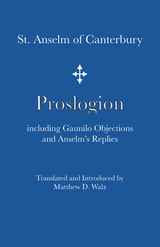 Proslogion: including Gaunilo Objections and Anselm's Replies
St. Anselm of Canterbury
St. Augustine's Press, 2013 Written for his brother Benedictine monks around 1077, Anselm’s Proslogion is perhaps the best-known partially-read book of the Middle Ages. Many readers are familiar only with Anselm’s well-known argument for God’s existence in Chapters 2–4, which is often called the “ontological argument,” a misleading appellation coined centuries later by Immanuel Kant. In this argument Anselm begins with the thought of “something than which nothing greater is able to be thought,” and subsequently he leads the reader to see that such a reality necessarily exists and cannot be thought not to be. This argument – which is, to be sure, crucial to the work constitutes – but a small portion of the whole. Preceding it is a profound but oft-overlooked opening chapter in which Anselm contemplates his all-too-human condition and disposes the reader to receive aptly his argument for God’s existence in the next three chapters. And following this argument are 20 chapters in which Anselm artfully unfolds the depth and breadth of God’s true existence as that than which nothing greater is able to be thought, showing God to be (among other things) able-to-sense, pity-hearted, just, good, and uncircumscribed. Indeed, if the reader is willing to give himself over to the work as whole, he will be compelled, under Anselm’s deft guidance, to “endeavor to straighten up his mind toward contemplating God,” which is how Anselm describes his own role in the work in his prefatory remarks. This edition provides a faithful yet readable English rendering of the whole Proslogion, the objections raised to Anselm’s argument by his contemporary Gaunilo, and Anselm’s replies to those objections. (After responding to Gaunilo, Anselm himself requested that these objections and replies be included in subsequent editions of the Proslogion.) This edition also includes an introduction that contextualizes the Proslogion within the monastic, pre-Scholastic age in which it first made its appearance. In addition, by means of notes and commentary, this edition articulates how to contextualize Anselm’s famous argument in the Proslogion as a whole and in light of his replies to Gaunilo, how to appreciate the artistry whereby Anselm knit the Proslogion together into a coherent and concise unity, and how the work may be taught effectively to interested students. These features set this affordable English edition of the Proslogion apart from those currently available, which too often fail to capture accurately the beauty of Anselm’s prose, which often treat the work through the lens of either later Scholasticism or contemporary analytic philosophy of religion, and which take little note of the craftsmanship whereby Anselm constructed this masterfully integrated work that is remembered too often for too few of its 24 chapters. Matthew Walz has taught in the interdisciplinary program at Thomas Aquinas College in California, and since 2008 he has been a professor in the Philosophy Department of the University of Dallas.
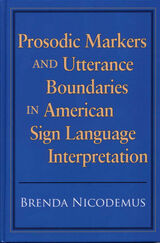 Prosodic Markers and Utterance Boundaries in American Sign Language Interpretation
Brenda Nicodemus
Gallaudet University Press, 2009 The Fifth Volume in the Studies in Interpretation Series
In interpreting, professionals must be able to convey to their clients the rhythm, stress, and length of phrases used by the communicating parties to indicate their respective emotional states. Such subtleties, which can signal sarcasm and irony or whether a statement is a question or a command, are defined in linguistics as prosody. Brenda Nicodemus’s new volume, the fifth in the Studies in Interpretation series, discusses the prosodic features of spoken and signed languages, and reports the findings of her groundbreaking research on prosodic markers in ASL interpretation.
In her study, Nicodemus videotaped five highly skilled interpreters as they interpreted a spoken English lecture into ASL. Fifty Deaf individuals viewed the videotaped interpretations and indicated perceived boundaries in the interpreted discourse. These identified points were then examined for the presence of prosodic markers that might be responsible for the perception of a boundary. Prosodic Markers and Utterance Boundaries reports on the characteristics of the ASL markers, including their frequency, number, duration, and timing. Among other findings, the results show that interpreters produce an average of seven prosodic markers at each boundary point. The markers are produced both sequentially and simultaneously and under conditions of highly precise timing. Further, the results suggest that the type of prosodic markers used by interpreters are both systematic and stylistic.
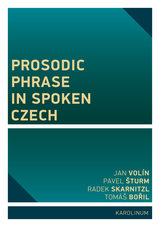 Prosodic Phrase in Spoken Czech
Jan Volín, Pavel Šturm, Radek Skarnitzl, and Tomáš Boril
Karolinum Press, 2025 Concise and accessible, this monograph fills a gap in Czech language study with its compelling look into the prosodic phrase.
The prosodic phrase is a crucial element in the sound structure of the Czech language, though oft overlooked. The properties of prosodic phrases, such as stress, intonation, and tonal pattern, show typical characteristics of prose. Prosodic Phrase in Spoken Czech provides a source for this missing information in an approachable format for all manner of readers. The core of the study draws on authentic speech material—storytelling, news reading, and poetry recitation—where prosodic phrases are analyzed in terms of their phonetic structure, acoustic characteristics, and associated syntactic features. Supported by the presentation of original perception experiments, this monograph delves into the perceptual significance of prosodic phrasing. Beyond offering intriguing insights into this core aspect of prosodic structure, it serves as a valuable resource for designing future experiments in natural language processing.
 Prospect Of Cities
John Friedmann
University of Minnesota Press, 2002 A major figure offers a sweeping evaluation of the place of the city in the global future.
In essays as engaging as they are informative, a leading figure in urban planning and geography broadly surveys the complex terrain of global urbanization. Unique in its scope and its prospective view of city-regions as substantially autonomous "quasi city-states," this book offers an unprecedented look at the global urban future, focusing on models of development, transnational migration, citizenship, representation, and the good city as a utopian construct.
Beginning with an overview of global urbanization patterns-particularly the entropic forces that exacerbate poverty, increase violence, and discourage democratic life in peripheral areas-The Prospect of Cities goes on to address specific contemporary issues. These range in subject and scale from the impact of transnational migration on global cities whose populations are at least 30 percent of foreign origin to the critical importance of everyday life, as it is experienced on the streets and in neighborhoods, for a full understanding of urban planning. The final chapter traces the author's evolution as one of the world's foremost theorists of city-regional development and planning, deepening the perspective mapped out over the course of the volume and providing new insight into the study of the urban landscape in a global environment.
Whether arguing for a new approach to sustainable development, finding the moral focus of nonterritorial citizenship, or mounting a spirited, pragmatic defense of utopian thinking in urban planning, John Friedmann offers an informed, workable, and hopeful prospect for the cities of our time and of the future.
John Friedmann is professor emeritus of the University of California at Los Angeles, where he was the founding chair of the Department of Urban Planning. He is also an honorary professor at the University of British Columbia. His recent books include Empowerment: The Politics of Alternative Development (1992) and, as coeditor, Cities for Citizens: Planning and the Rise of Civil Society in a Global Age (1998).
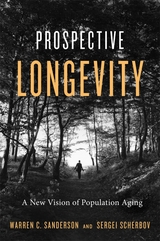 Prospective Longevity: A New Vision of Population Aging
Warren C. Sanderson and Sergei Scherbov
Harvard University Press, 2019 From two leading experts, a revolutionary new way to think about and measure aging.
Aging is a complex phenomenon. We usually think of chronological age as a benchmark, but it is actually a backward way of defining lifespan. It tells us how long we’ve lived so far, but what about the rest of our lives?
In this pathbreaking book, Warren C. Sanderson and Sergei Scherbov provide a new way to measure individual and population aging. Instead of counting how many years we’ve lived, we should think about the number of years we have left, our “prospective age.” Two people who share the same chronological age probably have different prospective ages, because one will outlive the other. Combining their forward-thinking measure of our remaining years with other health metrics, Sanderson and Scherbov show how we can generate better demographic estimates, which inform better policies. Measuring prospective age helps make sense of observed patterns of survival, reorients understanding of health in old age, and clarifies the burden of old-age dependency. The metric also brings valuable data to debates over equitable intergenerational pensions.
Sanderson and Scherbov’s pioneering model has already been adopted by the United Nations. Prospective Longevity offers us all an opportunity to rethink aging, so that we can make the right choices for our societal and economic health.
Prospects for Natural Theology
Eugene Thomas Long
Catholic University of America Press, 2018 Natural theology, which suffered significantly in the eighteenth century as a result of the criticisms of David Hume and Immanuel Kant, appeared to be a terminal patient in the mid-twentieth century in the 1960s, however philosophers and theologians began
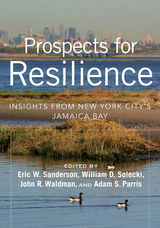 Prospects for Resilience: Insights from New York City's Jamaica Bay
Eric W. Sanderson, William D. Solecki, John R. Waldman, and Adam S. Parris
Island Press, 2016 Given the realities of climate change and sea-level rise, coastal cities around the world are struggling with questions of resilience. Resilience, at its core, is about desirable states of the urban social-ecological system and understanding how to sustain those states in an uncertain and tumultuous future. How do physical conditions, ecological processes, social objectives, human politics, and history shape the prospects for resilience? Most books set out “the answer.” This book sets out a process of grappling with holistic resilience from multiple perspectives, drawing on the insights and experiences of more than fifty scholars and practitioners working together to make Jamaica Bay in New York City an example for the world.
Prospects for Resilience establishes a framework for understanding resilience practice in urban watersheds. Using Jamaica Bay—the largest contiguous natural area in New York, home to millions of New Yorkers, and a hub of global air travel with John F. Kennedy International Airport—the authors demonstrate how various components of social-ecological systems interact, ranging from climatic factors to plant populations to human demographics. They also highlight essential tools for creating resilient watersheds, including monitoring and identifying system indicators; computer modeling; green infrastructure; and decision science methods. Finally, they look at the role and importance of a “boundary organization” like the new Science and Resilience Institute at Jamaica Bay in coordinating and facilitating resilience work, and consider significant research questions and prospects for the future of urban watersheds.
Prospects for Resilience sets forth an essential foundation of information and advice for researchers, urban planners, students and others who need to create more resilient cities that work with, not against, nature.
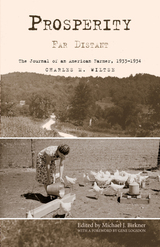 Prosperity Far Distant: The Journal of an American Farmer, 1933–1934
Charles M. Wiltse
Ohio University Press, 2012 Fresh from receiving a doctorate from Cornell University in 1933, but unable to find work, Charles M. Wiltse joined his parents on the small farm they had recently purchased in southern Ohio. There, the Wiltses scratched out a living selling eggs, corn, and other farm goods at prices that were barely enough to keep the farm intact. In wry and often affecting prose, Wiltse recorded a year in the life of this quintessentially American place during the Great Depression. He describes the family’s daily routine, occasional light moments, and their ongoing frustrations, small and large—from a neighbor’s hog that continually broke into the cornfields to the ongoing struggle with their finances. Franklin Roosevelt’s New Deal had little to offer small farmers, and despite repeated requests, the family could not secure loans from local banks to help them through the hard economic times. Wiltse spoke the bitter truth when he told his diary, “We are not a lucky family.” In this he represented millions of others caught in the maw of a national disaster. The diary is introduced and edited by Michael J. Birkner, Wiltse’s former colleague at the Papers of Daniel Webster Project at Dartmouth College, and coeditor, with Wiltse, of the final volume of Webster’s correspondence.
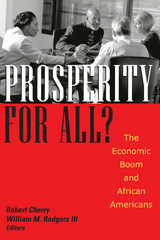 Prosperity For All?: The Economic Boom and African Americans
Robert Cherry
Russell Sage Foundation, 2000 With the nation enjoying a remarkable long and robust economic expansion, AfricanAmerican employment has risen to an all-time high. Does this good news refute the notion of a permanently disadvantaged black underclass, or has one type of disadvantage been replaced by another? Some economists fear that many newly employed minority workers will remain stuck in low-wage jobs, barred from better-paying, high skill jobs by their lack of educational opportunities and entrenched racial discrimination. Prosperity for All? draws upon the research and insights of respected economists to address these important issues. Prosperity for All? reveals that while African Americans benefit in many ways from a strong job market, serious problems remain. Research presented in this book shows that the ratio of black to white unemployment has actually increased over recent expansions. Even though African American men are currently less likely to leave the workforce, the number of those who do not find work at all has grown substantially, indicating that joblessness is now concentrated among the most alienated members of the population. Other chapters offer striking evidence that racial inequality is still pervasive. Among men, black high school dropouts have more difficulty finding work than their Latino or white counterparts. Likewise, the glass ceiling that limits minority access to higher paying promotions persists even in a strong economy. Prosperity for All? ascribes black disadvantage in the labor force to employer discrimination, particularly when there is strong competition for jobs. As one study illustrates, economic upswings do not appear to change racial preferences among employers, who remain less willing to hire African Americans for more skilled low-wage jobs. Prosperity for All? offers a timely investigation into the impact of strong labor markets on low-skill African-American workers, with important insights into the issues engendered by the weakening of federal assistance, job training, and affirmative action programs.
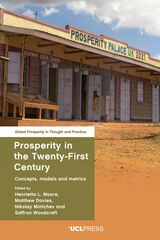 Prosperity in the Twenty-First Century: Concepts, Models and Metrics
Edited by Henrietta L. Moore, Matthew Davies, Nikolay Mintchev, and Saffron Woodcraft
University College London, 2023 A powerful vision for reimagining prosperity for the twenty-first century.
Prosperity in the Twenty-First Century sets out a new vision for prosperity in the twenty-first century and how it can be achieved for all. The volume challenges orthodox understandings of economic models but goes beyond contemporary debates to show how social innovation drives economic value. Drawing on substantive research in the UK, Lebanon, and Kenya, it develops new concepts, frameworks, models, and metrics for prosperity across a wide range of contexts, emphasizing commonalities and differences. Departing from general propositions about post-growth to delineate pathways to prosperity, the volume emphasizes that visions of the good life are diverse and require empirical work co-designed with local communities and stakeholders to drive change. It will be essential reading for policymakers who are stuck, local government officers who need new tools, activists who wonder what is next, academics in need of refreshment, and students and people of all ages who want a way forward.
Prosperity, Region, and Institutions in Maritime China: The South Fukien Pattern, 946-1368
Billy K. L. So
Harvard University Press, 2000 Prosperity signifies success in economic performance. Economic performance always takes place in a spatial context. And institutions matter in economic performance. These three interwoven themes underlie this inquiry into the regional economy of southern Fukien province during the Sung and Yuan dynasties, when the area was one of the most prosperous regions in China. Through a meticulous reading of the sources, the author seeks to understand the meaning of prosperity in the premodern Chinese context and argues that we have to understand economic performance as a process occurring in space and influenced by institutions, which affect economic actors particularly through the means of transaction costs.
Prosperity without Greed: How to Save Ourselves from Capitalism
Sahra Wagenknecht
Campus Verlag, 2016 It is time to leave capitalism behind. In Prosperity without Greed, Sahra Wagenknecht shows that we live in a system of economic feudalism that has nothing to do with a free market economy, where the innovations we require to solve myriad important societal problems are not forthcoming. How can it be, Wagenknecht asks, that technological developments financed by the taxpayer end up enriching private companies even if those companies’ activities violate public interests? Through clear analysis and concrete proposals, Wagenknecht suggestss new forms of ownership and sketches the outlines of an innovative and just economy that instead promotes and rewards talent, real performance, and start-ups with groundbreaking ideas.
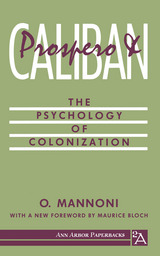 Prospero and Caliban: The Psychology of Colonization
O. Mannoni
University of Michigan Press, 1990 In his now classic volume Prospero and Caliban, Octave Mannoni gives his firsthand account of a 1948 revolt in Madagascar that led to one of the bloodiest episodes of colonial repression on the African continent. It is in Prospero and Caliban that Mannoni constructs the notion of the “dependency complex,” for which his book has since been remembered and widely discussed in both psychoanalytical and anthropological writing. Prospero and Caliban was one of the first books to challenge traditional approaches to the study of native American societies by Western colonizers and anthropologists; and Mannoni is recognized today for his close association with and influence on the French psychoanalyst Lacan.
Noted anthropologist Maurice Bloch has written a powerful and critical new foreword to the English translation, which allows the reader to view Mannoni’s unique work in its historical and intellectual context.
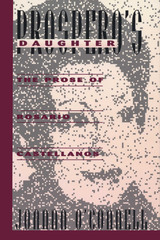 Prospero's Daughter: The Prose of Rosario Castellanos
By Joanna O'Connell
University of Texas Press, 1995 A member of Mexico's privileged upper class, yet still subordinated because of her gender, Rosario Castellanos became one of Latin America's most influential feminist social critics. Joanna O'Connell here offers the first book-length study of all Castellanos' prose writings, focusing specifically on how Castellanos' experiences as a Mexican woman led her to an ethic of solidarity with the oppressed peoples of her home state of Chiapas. O'Connell provides an original and detailed analysis of Castellanos' first venture into feminist cultural analysis in her essay Sobre cultura feminina (1950) and traces her moral and intellectual trajectory as feminist and social critic. An overview of Mexican indigenismo establishes the context for individual chapters on Castellanos' narratives of ethnic conflict (the novels Balún Canán and Oficio de tinieblas and the short stories of Ciudad Real). In further chapters O'Connell reads Los convidados de agosto,Album de familia, and Castellanos' four collections of essays as developments of her feminist social analysis.
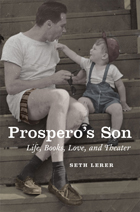 Prospero's Son: Life, Books, Love, and Theater
Seth Lerer
University of Chicago Press, 2013 “This book is the record of a struggle between two temperaments, two consciousnesses and almost two epochs.” That’s how Edmund Gosse opened Father and Son, the classic 1907 book about his relationship with his father. Seth Lerer’s Prospero’s Son is, as fits our latter days, altogether more complicated, layered, and multivalent, but at its heart is that same problem: the fraught relationship between fathers and sons. At the same time, Lerer’s memoir is about the power of books and theater, the excitement of stories in a young man’s life, and the transformative magic of words and performance. A flamboyantly performative father, a teacher and lifelong actor, comes to terms with his life as a gay man. A bookish boy becomes a professor of literature and an acclaimed expert on the very children’s books that set him on his path in the first place. And when that boy grows up, he learns how hard it is to be a father and how much books can, and cannot, instruct him. Throughout these intertwined accounts of changing selves, Lerer returns again and again to stories—the ways they teach us about discovery, deliverance, forgetting, and remembering. “A child is a man in small letter,” wrote Bishop John Earle in the seventeenth century. “His father hath writ him as his own little story.” With Prospero’s Son, Seth Lerer acknowledges the author of his story while simultaneously reminding us that we all confront the blank page of life on our own, as authors of our lives.
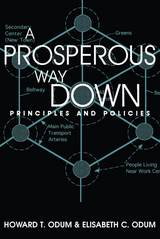 A Prosperous Way Down: Principles and Policies
Howard T. Odum
University Press of Colorado, 2008 A Prosperous Way Down (2001), the last book by Howard T. and Elisabeth C. Odum, has shaped politics and planning as nations, states, and localities begin the search for ways to adapt to a future with vastly increased competition for energy. A Prosperous Way Down considers ways in which a future with less fossil fuel could be peaceful and prosperous. Although history records the collapse of countless civilizations, some societies and ecosystems have managed to descend in orderly stages, reducing demands and selecting and saving what is most important. The authors make recommendations for a more equitable and cooperative world society, with specific suggestions based on their evaluations of trends in global population, wealth distribution, energy sources, conservation, urban development, capitalism and international trade, information technology, and education. Available for the first time in paperback, this thoughtful, provocative book forces us to confront assumptions about our world 's future and provides both a steadying hand and a call to action with its pragmatic analysis of a global transition.
 Prostate Cancer: Making Survival Decisions
Sylvan Meyer and Seymour C. Nash, M.D., F.A.C.S.
University of Chicago Press, 1994 Written by a surviving prostate cancer patient and his urologist, Prostate Cancer: Making Survival Decisions provides not just a physician's overview of the disease, but the compassion, understanding, and frankness of a man who's lived through the experience. From the first symptoms to early diagnosis to life after treatment, journalist Sylvan Meyer details every facet of the disease from the patient's point of view. Along with a clear, complete guide to the latest treatments, techniques, and findings, Meyer outlines the tough decisions the patient will face; describes what it's like to go through all the tests, the treatment, and the recovery; and provides an understanding of how the patient himself can affect the outcome.
Thoroughly researched and imbued with great sensitivity, Prostate Cancer: Making Survival Decisions is the most informative and illuminating book about prostate cancer available. Not just an indispensable tool for those who have been diagnosed or are at risk, this is an important guide for anyone who seeks a better understanding of this enigmatic disease and the controversies surrounding it.
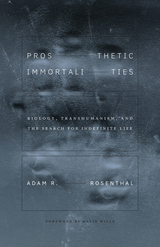 Prosthetic Immortalities: Biology, Transhumanism, and the Search for Indefinite Life
Adam R Rosenthal
University of Minnesota Press, 2024 Examining the links between today’s ideas of radical life extension and age-old notions of immortality
From Plato’s notion of generation to Derrida’s concept of survival to such modern phenomena as anti-aging treatments, cryogenics, cloning, and whole-brain uploads, Adam Rosenthal’s Prosthetic Immortalities shows how the dream of indefinite life has always been a technological one: a matter of prosthesis. He argues that every biological instance of perpetual life, from one-celled organisms to rejuvenating jellyfish to Henrietta Lacks’s “immortal” cancer cells, always results in the transformation of the original being. There can, therefore, be no certainty of immortality. Yet, because finite mortal life is already marked by difference, division, and change, as Rosenthal concludes: “the problem of immortality will not cease to haunt us.” Prosthetic Immortalities examines the persistence of humans’ aspirations of deathlessness, showing that the link between immortalization and prostheticization is not unique to a single period but is, rather, a ubiquitous element of the discourse of immortality, encompassing both modern technoscientific efforts and religious discourses of an afterlife. Rosenthal asks to what extent the emergence of a virtual, posited, immortal presence follows from the tenets of empirical science—and not simply from the discourse of biology but also, and more radically still, from biological organization itself. Rosenthal ultimately argues that the discovery of biological immortals—lifeforms that naturally have indefinitely long lifespans, such as cancer cells and bacteria—present novel conceptual difficulties for traditional philosophical approaches to mortality and selfhood, asking whether it is life itself that first births immortalizing prostheses.
 Prosthetic Memories: Postcolonial Feminisms in a More-Than-Human World
Hyaesin Yoon
Duke University Press, 2025 In Prosthetic Memories, Hyaesin Yoon examines the entanglements of humans, animals, and technologies across South Korea and the United States at the turn of the twenty-first century. Interrogating a variety of body-technology interfaces, Yoon outlines an emergent mode of prosthetic memory in which human memory is extended into both machines and animals. Prosthetic memory overflows and provides an alternative to familiar human perception, Western scientific reason, and other senses of knowledge in ways that can foster networks of solidarity, care, and empathy between human and nonhuman subjects. Among other sites and subjects, Yoon examines tongue surgery to correct English pronunciation in Korea, Asian American poetry that engages the human-machine divide, transnational dog cloning, and stem cell research, each of which activates potent postcolonial feminist mnemonics and alliances. In so doing, Yoon narrates the countermemories of racialized, gendered, diasporic, queer, and marginalized human and nonhuman others that work against the violent and isolating biopolitical and neoliberal forces in contemporary society.
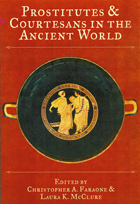 Prostitutes and Courtesans in the Ancient World
Edited by Christopher A. Faraone and Laura K. McClure
University of Wisconsin Press, 2006 Prostitutes and Courtesans in the Ancient World explores the implications of sex-for-pay across a broad span of time, from ancient Mesopotamia to the early Christian period. In ancient times, although they were socially marginal, prostitutes connected with almost every aspect of daily life. They sat in brothels and walked the streets; they paid taxes and set up dedications in religious sanctuaries; they appeared as characters—sometimes admirable, sometimes despicable—on the comic stage and in the law courts; they lived lavishly, consorting with famous poets and politicians; and they participated in otherwise all-male banquets and drinking parties, where they aroused jealousy among their anxious lovers. The chapters in this volume examine a wide variety of genres and sources, from legal and religious tracts to the genres of lyric poetry, love elegy, and comic drama to the graffiti scrawled on the walls of ancient Pompeii. These essays reflect the variety and vitality of the debates engendered by the last three decades of research by confronting the ambiguous terms for prostitution in ancient languages, the difficulty of distinguishing the prostitute from the woman who is merely promiscuous or adulterous, the question of whether sacred or temple prostitution actually existed in the ancient Near East and Greece, and the political and social implications of literary representations of prostitutes and courtesans.
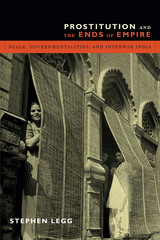 Prostitution and the Ends of Empire: Scale, Governmentalities, and Interwar India
Stephen Legg
Duke University Press, 2014 Officially confined to red-light districts, brothels in British India were tolerated until the 1920s. Yet, by this time, prostitution reform campaigns led by Indian, imperial, and international bodies were combining the social scientific insights of sexology and hygiene with the moral condemnations of sexual slavery and human trafficking. These reformers identified the brothel as exacerbating rather than containing "corrupting prostitutes" and the threat of venereal diseases, and therefore encouraged the suppression of brothels rather than their urban segregation. In this book, Stephen Legg tracks the complex spatial politics surrounding brothels in the interwar period at multiple scales, including the local, regional, national, imperial, and global. Campaigns and state policies against brothels did not just operate at different scales but made scales themselves, forging new urban, provincial, colonial, and international formations. In so doing, they also remade the boundary between the state and the social, through which the prostitute was, Legg concludes, "civilly abandoned."
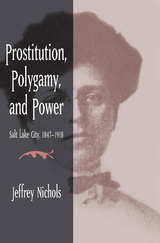 Prostitution, Polygamy, and Power: Salt Lake City, 1847-1918
Jeffrey Nichols
University of Illinois Press, 2002 Prostitution, Polygamy, and Power reveals insights into the complex history of prostitution in Salt Lake City. After the transcontinental railroad opened Utah to large-scale emigration and market capitalism, hundreds of women in Salt Lake City began to sell sex for a living, and a few earned small fortunes. Businessmen and politicians developed a financial stake in prostitution, which was regulated by both Mormon and gentile officials. Jeffrey Nichols examines how prostitution became a focal point in the moral contest between Mormons and gentiles and aided in the construction of gender systems, moral standards, and the city's physical and economic landscapes. Gentiles likened polygamy to prostitution and accused polygamous Mormons of violating Christian norms of family structure and sexual behavior. Defending their church and its ideals, Mormons blamed gentiles for introducing the sinful business of prostitution into their honorable city. Nichols traces the interplay of prostitution and reform from the 1890s, when the Church of Jesus Christ of Latter-day Saints began to move away from polygamy, to World War I, when Mormon and gentile moral codes converged at the expense of prostitutes. He also considers how the conflict over polygamy distinguished Salt Lake City from other cities struggling to abolish prostitution in the Progressive Era.
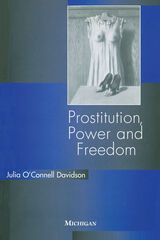 Prostitution, Power and Freedom
Julia O'Connell Davidson
University of Michigan Press, 1998
Prostitution, Power and Freedom brings new insights to the ongoing debate among scholars, activists, and others on the controversial subject of prostitution. Sociologist Julia O'Connell Davidson's concise, accessibly-written study is based on wide research from various corners of the world. The study employs a range of theoretical analyses and argues against simplistic explanations of the prostitution phenomenon, showing it to be a complex relationship where economics, power relations, gender, age, class, and "choice" intersect.
The author has conducted an impressive amount of research in nine countries, including conversations with male and female sex tourists, adult and child prostitutes, procurers, and clients. Through her research, O'Connell Davidson demonstrates the complexity of prostitution, arguing that it is not simply an effect of male oppression and violence or insatiable sexual needs, nor is it an unproblematic economic encounter. The book provides a sophisticated explanation of the economic and political inequalities underlying prostitution, but also shows that while prostitution necessarily implies certain freedoms for the clients, the amount of freedom experienced by individual prostititutes varies greatly.
This highly accessible book will be of great interest to those in gender and women's studies, sexuality and cultural studies, the sociology of work and organizations, and social policy. General readers will also appreciate having new ways of thinking about this age-old social phenomenon.
Julia O'Connell Davidson is Lecturer in Sociology, University of Leicester.
Protagonists of Urban Order from the Middle Ages to the Present: Actions, Ideas, Concepts
Irena Benyovsky Latin
Amsterdam University Press, 2025 European cities and towns are considered places with a particular order established by their inhabitants. This volume centres on the authorities, groups, and individuals who formed the rules for common life in urban communities. It considers the protagonists of urban order between the Middle Ages and modernity: those who were responsible for the common welfare, those who produced change, and those who caused disorder. The authors focus on the practices that shaped the order of urban communities and in particular on situations in which this order was transformed socially and spatially. By looking at urban order through this lens, the volume sheds light on the complex interplay of interests that can bring about change.
The Protean Self: Human Resilience in an Age of Fragmentation
Robert Jay Lifton
University of Chicago Press, 1999 "We are becoming fluid and many-sided. Without quite realizing it, we have been evolving a sense of self appropriate to the restlessness and flux of our time. This mode of being differs radically from that of the past, and enables us to engage in continuous exploration and personal experiment. I have named it the 'protean self,' after Proteus, the Greek sea god of many forms."—from The Protean Self
Protect Yourself at All Times: An Inside Look at Another Year in Boxing
Thomas Hauser
University of Arkansas Press, 2018 “Hauser is a treasure. Whatever he writes is worth reading. Boxing is blessed that he has focused so much of his career on the sweet science.”
—Booklist
Each year, readers, writers, and critics alike anticipate Thomas Hauser’s newest collection of articles about the contemporary boxing scene, where his award-winning investigative journalism is on display. The annual retrospective of the previous year in boxing is always a notable moment in the sport that no one knows better than Hauser.
Protect Yourself at All Times offers a behind-the-scenes look at Floyd Mayweather vs. Conor McGregor, dressing room reports from big fights like Canelo Alvarez vs. Gennady Golovkin, and compelling portraits of luminaries like Muhammad Ali, Joe Louis, Mike Tyson, and Don King, all filtered through the perspective of a true champion of boxing.
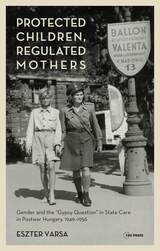 Protected Children, Regulated Mothers: Gender and the "Gypsy Question" in State Care in Postwar Hungary, 1949–1956
Eszter Varsa
Central European University Press, 2021 Protected Children, Regulated Mothers examines child protection in Stalinist Hungary as a part of twentieth-century East Central, Eastern, and Southeastern European history. Across the communist bloc, the prewar foster care system was increasingly replaced after 1945 by institutionalization in residential homes. This shift was often interpreted as a further attempt to establish totalitarian control. However, this study—based on hundreds of children's case files and interviews with institution leaders, teachers, and people formerly in state care—provides a new perspective. Rather than being merely a tool of political repression, state care in postwar Hungary was often shaped by the efforts of policy actors and educators to address the myriad of problems engendered by the social and economic transformations that emerged after World War II. This response built on, rather than broke with, earlier models of reform and reformatory education. Yet child protection went beyond safeguarding and educating children; it also focused on parents, particularly lone mothers, regulating not only their entrance to paid work but also their sexuality. In so doing, children's homes both reinforced and changed existing cultural and social patterns, whether about gendered division of work or the assimilation of minorities. Indeed, a major finding of the book is that state socialist child protection continued a centuries-long national project of seeking a “solution to the Gypsy question,” rooted in efforts to eliminate the perceived “workshyness” of Roma.
Protected cruiser Gelderland
Jantinus Mulder
Amsterdam University Press, 2023 Protected cruiser (Pantserdekschip) HNLMS Gelderland was a Holland-class cruiser of the Royal Netherlands Navy. This class, of six ships, was considered a modest, but well thought-out design. At a speed of 10 knots the radius of action would have been 8000 miles, while the two triple expansion engines could generate a maximum speed of 19,5 knots.
 Protecting American Health Care Consumers
Eleanor DeArman Kinney
Duke University Press, 2002 Despite the attention to the problem of protecting the health care interests of Americans, there is little consensus on what should be done politically or otherwise to address this problem. In Protecting American Health Care Consumers Eleanor DeArman Kinney, a nationally regarded expert on health policy and law, tackles the serious and ongoing debate among state and federal policymakers, health care providers, third-party payers, and consumers about how to provide procedural justice to patients in the present health care climate.
To promote and ensure consumer protection in an increasingly adversarial and complicated health-care culture, Kinney first analyzes the procedures by which consumer concerns are presently discerned and resolved and then explains why these systems are unsatisfactory. She also discusses problematic procedures for making coverage policy and quality standards and proposes reforms in a variety of processes that would enable all consumers, including the uninsured, to influence key policies and standards and also to raise concerns and obtain appropriate remedies.
As the first comprehensive treatment of administrative procedures in American health plans and other such institutions, Protecting American Health Care Consumers will be welcomed by state and federal policymakers, managed care executives, and lawyers charged with designing and implementing protections for consumers in public and private health plans.
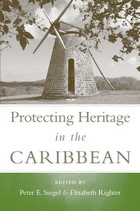 Protecting Heritage in the Caribbean
Peter E. Siegel
University of Alabama Press, 2011 Heritage preservation is a broad term that can include the protection of a wide range of human-mediated material and cultural processes ranging from specific artifacts, ancient rock art, and features of the built environment and modified landscapes. As a region of multiple independent nations and colonial territories, the Caribbean shares a common heritage at some levels, yet at the same time there are vast historical and cultural differences. Likewise, approaches to Caribbean heritage preservation are similarly diverse in range and scope. This volume addresses the problem of how Caribbean nations deal with the challenges of protecting their cultural heritages or patrimonies within the context of pressing economic development concerns. Is there formal legislation that requires cultural patrimony to be considered prior to the approval of development projects? Does legislation apply only to government-funded projects or to private ones as well? Are there levels of legislation: local, regional, national? Are heritage preservation laws enforced? For whom is the heritage protected and what public outreach is implemented to disseminate the information acquired and retained? In this volume, practitioners of heritage management on the frontline of their own islands address the current state of affairs across the Caribbean to present a comprehensive overview of Caribbean heritage preservation challenges. Considerable variability is seen in how determined and serious different nations are in approaching the responsibilities of heritage preservation. Packaging these diverse scenarios into a single volume is a critical step in raising awareness of the importance of protecting and judiciously managing an ever-diminishing fund of Caribbean heritage for all. Contributors Todd M. Ahlman / Benoît Bérard / Milton Eric Branford / Richard T. Callaghan / Kevin Farmer / R. Grant Gilmore III / Jay B. Haviser / Ainsley C. Henriques / William F. Keegan / Bruce J. Larson / Paul E. Lewis / Vel Lewis / Reg Murphy / Michael P. Pateman / Winston F. Phulgence / Esteban Prieto Vicioso / Basil A. Reid / Andrea Richards / Elizabeth Righter / Kelley Scudder-Temple / Peter E. Siegel / Christian Stouvenot / Daniel Torres Etayo
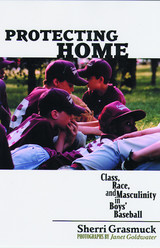 Protecting Home: Class, Race, and Masculinity in Boys' Baseball
Grasmuck, Sherri
Rutgers University Press, 2005 What can neighborhood baseball tell us about class and gender cultures, urban change, and the ways that communities value public space? Through a close exploration of a boys’ baseball league in a gentrifying neighborhood of Philadelphia, sociologist Sherri Grasmuck reveals the accommodations and tensions that characterize multicultural encounters in contemporary American public life. Based on years of ethnographic observation and interviews with children, parents, and coaches, Protecting Home offers an analysis of the factors that account for racial accommodation in a space that was previously known for racial conflict and exclusion. Grasmuck argues that the institutional arrangements and social characteristics of children’s baseball create a cooperative environment for the negotiation of social, cultural, and class differences. Chapters explore coaching styles, parental involvement, institutional politics, parent-child relations, and children’s experiences. Grasmuck identifies differences in the ways that the mostly white, working-class “old-timers” and the racially diverse, professional newcomers relate to the neighborhood. These distinctions reflect a competing sense of cultural values related to individual responsibility toward public space, group solidarity, appropriate masculine identities, and how best to promote children’s interests—a contrast between “hierarchical communalism” and “child-centered individualism.” Through an innovative combination of narrative approaches, this book succeeds both in capturing the immediacy of boys’ interaction at the playing field and in contributing to sophisticated theoretical debates in urban studies, the sociology of childhood, and masculinity studies.
 Protecting Human Rights: A Comparative Study
Todd Landman
Georgetown University Press, 2005 Ours has been called a global "age of rights," an era in which respect for human rights is considered the highest aspiration of the international democratic community. Since the United Nation's 1948 Universal Declaration of Human Rights, a wide variety of protections—civil, political, economic, social, and cultural—have been given legal validation as countries ratify treaties, participate in intergovernmental organizations, and establish human rights tribunals and truth and reconciliation commissions. Yet notable human rights failures have marred the post-Declaration era, including ongoing state violence toward citizens, the selectivity of humanitarian intervention (evidenced by the international community's failure to respond in Rwanda), and recent legislation in advanced democracies that trades some rights for protection against the threat of terrorism. How are we to reconcile the language of rights with the reality? Do we live in an age of rights after all? In Protecting Human Rights, Todd Landman provides a unique quantitative analysis of the marked gap between the principle and practice of human rights. Applying theories and methods from the fields of international law, international relations, and comparative politics, Landman examines data from 193 countries over 25 years (1976-2000) to assess the growth of the international human rights regime, the effect of law on actual protection, and global variation in human rights norms. Landman contends that human rights foreign policy remains based more on geo-strategic interest than moral internationalism. He argues that the influence human rights ideals have begun to have on states cannot be separated from the broader impact of socioeconomic changes that swept the globe in the late twentieth century. Landman concludes that international law alone will not suffice to fully protect human rights—it must be accompanied by democratic government, effective conflict resolution, and just economic systems.
 Protecting New Jersey's Environment: From Cancer Alley to the New Garden State
Belton, Thomas
Rutgers University Press, 2011 Contaminants in fish. Ocean dumping. Biological diversity/integrity and endangered species. Pinelands and forest preservation. Wetlands protection. Watersheds and headwaters. In Protecting New Jersey's Environment these concerns translate into real human interest stories about people and their surroundings not only in the state-a critical site for the growth of environmentalism-but all around the country as well.
And you can add even more to the list-ozone depletion, nuclear power, toxic waste, sprawl, racial inequity, brownfields remediation versus environmental justice concerns. Through a series of gripping accounts organized by geographic area, Thomas Belton considers key environmental issues in New Jersey and champions the ways common citizens have sought justice when faced with unseen health threats. Often, as people search for remedies in their neighborhoods, the challenges they face result in what Belton calls bare-knuckles environmental protection, replete with back-room political deals, infighting, criminals, and hapless victims.
With people as its focus, Protecting New Jersey's Environment explores the science underpinning environmental issues and the public policy infighting that goes undocumented behind the scenes and beneath the controversies. Belton demonstrates the ways that scientists, regulators, lobbyists, and politicians interact and offers the public a go-to guide on how to seek environmental protection in practical ways.
 Protecting Pollinators: How to Save the Creatures that Feed Our World
Jodi Helmer
Island Press, 2019 We should thank a pollinator at every meal. These diminutive creatures fertilize a third of the crops we eat. Yet half of the 200,000 species of pollinators are threatened. Birds, bats, insects, and many other pollinators are disappearing, putting our entire food supply in jeopardy. In North America and Europe, bee populations have already plummeted by more than a third and the population of butterflies has declined 31 percent.
Protecting Pollinators explores why the statistics have become so dire and how they can be reversed. Jodi Helmer breaks down the latest science on environmental threats and takes readers inside the most promising conservation initiatives. Efforts include famers reducing pesticides, cities creating butterfly highways, volunteers ripping up invasive plants, gardeners planting native flowers, and citizen scientists monitoring migration.
Along with inspiring stories of revival and lessons from failed projects, readers will find practical tips to get involved. They will also be reminded of the magic of pollinators—not only the iconic monarch and dainty hummingbird, but the drab hawk moth and homely bats that are just as essential. Without pollinators, the world would be a duller, blander place. Helmer shows how we can make sure they are always fluttering, soaring, and buzzing around us.
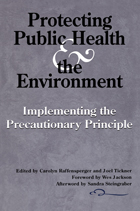 Protecting Public Health and the Environment: Implementing The Precautionary Principle
Edited by Carolyn Raffensperger and Joel Tickner; Foreword by Wes Jackson
Island Press, 1999 When an activity raises threats of harm to human health or the environment, precautionary measures should be taken even if some cause and effect relationships are not fully established scientifically. This idea, known as the "Precautionary Principle," is seen by environmentalists and public health experts as the key to protecting ecological and human health. In January 1998, the Science and Environmmental Health Network convened an international group of scientists, researchers, environmentalists, academics, and labor representatives to discuss ways of incorporating the precautionary approach into environmental and public health decision-making. Known as the Wingspread Conference on Implementing the Precautionary Principle, the workshop focused on understanding the contexts under which the principle developed, its basis, and how it could be implemented. Protecting Public Health and the Environment is an outgrowth of that conference. The book: - describes the history, specific content, and scientific and philosophical foundations of the principle of precautionary action
- explains the functions of the principle in activities as diverse as agriculture and manufacturing
- explains how to know when precautionary action is needed and who decides what action will (or will not) be taken
- attempts to show how the burden of proof of environmental harm can be shifted to proponents of a potentially hazardous activity
- provides specific structures and mechanisms for implementing the precautionary principl.
Throughout, contributors focus on the difficult questions of implementation and fundamental change required to support a more precautionary approach to environmental and public health hazards. Among the contributors are David Ozonoff, Nicholas Ashford, Ted Schettler, Robert Costanza, Ken Geiser, and Anderw Jordan. Public health professionals and academics, policymakers, environmental lawyers, sustainable agriculture proponents, economists, and environmental activists will find the book an enlightening and thought-provoking guide to a new way of thinking about ecosystem and public health protection.
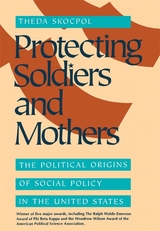 Protecting Soldiers and Mothers: The Political Origins of Social Policy in the United States
Theda Skocpol
Harvard University Press, 1992 It is a commonplace that the United States lagged behind the countries of Western Europe in developing modern social policies. But, as Theda Skocpol shows in this startlingly new historical analysis, the United States actually pioneered generous social spending for many of its elderly, disabled, and dependent citizens. During the late nineteenth century, competitive party politics in American democracy led to the rapid expansion of benefits for Union Civil War veterans and their families.
Some Americans hoped to expand veterans' benefits into pensions for all of the needy elderly and social insurance for workingmen and their families. But such hopes went against the logic of political reform in the Progressive Era. Generous social spending faded along with the Civil War generation.
Instead, the nation nearly became a unique maternalist welfare state as the federal government and more than forty states enacted social spending, labor regulations, and health education programs to assist American mothers and children. Remarkably, as Skocpol shows, many of these policies were enacted even before American women were granted the right to vote. Banned from electoral politics, they turned their energies to creating huge, nation-spanning federations of local women's clubs, which collaborated with reform-minded professional women to spur legislative action across the country.
Blending original historical research with political analysis, Skocpol shows how governmental institutions, electoral rules, political parties, and earlier public policies combined to determine both the opportunities and the limits within which social policies were devised and changed by reformers and politically active social groups over the course of the late nineteenth and early twentieth centuries.
By examining afresh the institutional, cultural, and organizational forces that have shaped U.S. social policies in the past, Protecting Soldiers and Mothers challenges us to think in new ways about what might be possible in the American future.
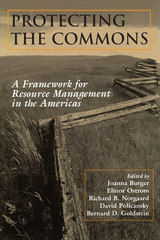 Protecting the Commons: A Framework For Resource Management In The Americas
Edited by Joanna Burger, Elinor Ostrom, Richard B. Norgaard, David Policansky, and Bernard D. Goldstein
Island Press, 2001 Commons—lands, waters, and resources that are not legally owned and controlled by a single private entity, such as ocean and coastal areas, the atmosphere, public lands, freshwater aquifers, and migratory species—are an increasingly contentious issue in resource management and international affairs. Protecting the Commons provides an important analytical framework for understanding commons issues and for designing policies to deal with them. The product of a symposium convened by the Scientific Committee on Problems of the Environment (SCOPE) to mark the 30th anniversary of Garrett Hardin's seminal essay “The Tragedy of the Commons” the book brings together leading scholars and researchers on commons issues to offer both conceptual background and analysis of the evolving scientific understanding on commons resources. The book: - gives a concise update on commons use and scholarship
- offers eleven case studies of commons, examined through the lens provided by leading commons theorist Elinor Ostrom
- provides a review of tools such as Geographic Information Systems that are useful for decision-making
- examines environmental justice issues relevant to commons
Contributors include Alpina Begossi, William Blomquist, Joanna Burger, Tim Clark, Clark Gibson, Michael Gelobter, Michael Gochfeld, Bonnie McCay, Pamela Matson, Richard Norgaard, Elinor Ostrom, David Policansky, Jeffrey Richey, Jose Sarukhan, and Edella Schlager. Protecting the Commons represents a landmark study of commons issues that offers analysis and background from economic, legal, social, political, geological, and biological perspectives. It will be essential reading for anyone concerned with commons and commons resources, including students and scholars of environmental policy and economics, public health, international affairs, and related fields.
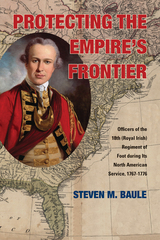 Protecting the Empire’s Frontier: Officers of the 18th (Royal Irish) Regiment of Foot during Its North American Service, 1767–1776
Steven M. Baule
Ohio University Press, 2013 Protecting the Empire’s Frontier tells stories of the roughly eighty officers who served in the 18th (Royal Irish) Regiment of Foot, which served British interests in America during the crucial period from 1767 through 1776. The Royal Irish was one of the most wide-ranging regiments in America, with companies serving on the Illinois frontier, at Fort Pitt, and in Boston, New York, and Philadelphia, with some companies taken as far afield as Florida, Spanish Louisiana, and present-day Maine. When the regiment was returned to England in 1776, some of the officers remained in America on staff assignments. Others joined provincial regiments, and a few joined the American revolutionary army, taking up arms against their king and former colleagues. Using a wide range of archival resources previously untapped by scholars, the text goes beyond just these officers’ service in the regiment and tells the story of the men who included governors, a college president, land speculators, physicians, and officers in many other British regular and provincial regiments. Included in these ranks were an Irishman who would serve in the U.S. Congress and as an American general at Yorktown; a landed aristocrat who represented Bath as a member of Parliament; and a naval surgeon on the ship transporting Benjamin Franklin to France. This is the history of the American Revolutionary period from a most gripping and everyday perspective. An epilogue covers the Royal Irish’s history after returning to England and its part in defending against both the Franco-Spanish invasion attempt and the Gordon Rioters. With an essay on sources and a complete bibliography, this is a treat for professional and amateur historians alike.
 Protecting the Land: Conservation Easements Past, Present, and Future
Edited by Julie Ann Gustanski and Roderick H. Squires; Foreword by Jean Hocker
Island Press, 2000 A conservation easement is a legal agreement between a property owner and a conservation organization, generally a private nonprofit land trust, that restricts the type and amount of development that can be undertaken on that property. Conservation easements protect land for future generations while allowing owners to retain property rights, at the same time providing them with significant tax benefits. Conservation easements are among the fastest growing methods of land preservation in the United States today. Protecting the Land provides a thoughtful examination of land trusts and how they function, and a comprehensive look at the past and future of conservation easements. The book: - provides a geographical and historical overview of the role of conservation easements
- analyzes relevant legislation and its role in achieving community conservation goals
- examines innovative ways in which conservation easements have been used around the country
- considers the links between social and economic values and land conservation
Contributors, including noted tax attorney and land preservation expert Stephen Small, Colorado's leading land preservation attorney Bill Silberstein, and Maine Coast Heritage Trust's general counsel Karin Marchetti, describe and analyze the present status of easement law. Sharing their unique perspectives, experts including author and professor of geography Jack Wright, Dennis Collins of the Wildlands Conservancy, and Chuck Roe of the Conservation Trust of North Carolina offer case studies that demonstrate the flexibility and diversity of conservation easements. Protecting the Land offers a valuable overview of the history and use of conservation easements and the evolution of easement-enabling legislation for professionals and citizens working with local and national land trusts, legal advisors, planners, public officials, natural resource mangers, policymakers, and students of planning and conservation.
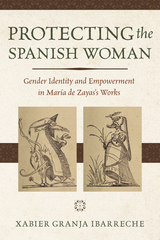 Protecting the Spanish Woman: Gender Identity and Empowerment in María de Zayas's Works
Xabier Granja Ibarreche
University of Nevada Press, 2023 An important contribution to the study of women writers.
María de Zayas is unique in the seventeenth century as the only Spanish woman to write a collection of exemplary novels whose quality is often compared to Miguel de Cervantes’ masterful works. Her two main collections of short stories, Novelas amorosas y ejemplares and Desengaños amorosos, encompass a social critique based on literary fiction that exposes flaws in the idealized archetypes of masculine identity in early modern Spain. Zayas’s stories redefine women’s patriarchal disadvantage as a tool to expose the ways in which early modern Spanish women could be empowered to counteract men’s discursive and political authority, which they use to unfairly maintain their own social privilege.
Xabier Granja Ibarreche explores how Zayas defies Spanish hegemony by manipulating and transforming the ideals of courtly masculinity that had been popularized by conduct manuals and the traits they specified for appropriate noble comportment. In doing so, Zayas elaborates a nonofficial discourse throughout plots that subvert patriarchal hierarchies: she rearticulates the existing ideological order to empower women who are no longer willing to remain silent and oppressed by masculine domination after centuries of failing to attain a sufficiently self-sufficient political position to ascend in the social hierarchy. By inverting the male gaze that assumes masculinity as a preeminent identity, Zayas subverts the patriarchal subject/masculine, object/feminine order and destabilizes manly superiority as a basic universal reality, thereby empowering and unshackling Spanish women to liberate Iberian culture from the repressive and pernicious future she forebodes.
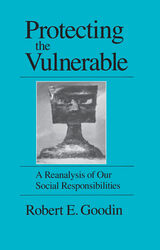 Protecting the Vulnerable: A Re-Analysis of our Social Responsibilities
Robert E. Goodin
University of Chicago Press, 1985 Our narrower obligations often blind us to larger social responsibilities. The moral claims arising out of special relationships—family, friends, colleagues, and so on—always seem to take priority. Strangers ordinarily get, and ordinarily are thought to deserve, only what is left over. Robert E. Goodin argues that this is morally mistaken. In Protecting the Vulnerable, he presents a comprehensive theory of responsibility based on the concept of vulnerability. Since the range of people vulnerable to our actions or choices extends beyond those to whom we have made specific commitments (promises, vows, contracts), we must recognize a much more extensive network of obligations and moral claims. State welfare services, for example, are morally on a par with the services we render to family and friends. The same principle widens our international, intergenerational, and interpersonal responsibilities as well as our duties toward animals and natural environments. This book, written with keen intelligence and unfailing common sense, opens up new perspectives on issues central to public policy and of critical concern to philosophers and social scientists as well as to politicians, lawyers and social workers.
 Protecting the Wild: Parks and Wilderness, the Foundation for Conservation
George Wuerthner, Eileen Crist, and Tom Butler
Island Press, 2015 Protected natural areas have historically been the primary tool of conservationists to conserve land and wildlife. These parks and reserves are set apart to forever remain in contrast to those places where human activities, technologies, and developments prevail. But even as the biodiversity crisis accelerates, a growing number of voices are suggesting that protected areas are passé. Conservation, they argue, should instead focus on lands managed for human use—working landscapes—and abandon the goal of preventing human-caused extinctions in favor of maintaining ecosystem services to support people. If such arguments take hold, we risk losing support for the unique qualities and values of wild, undeveloped nature.
Protecting the Wild offers a spirited argument for the robust protection of the natural world. In it, experts from five continents reaffirm that parks, wilderness areas, and other reserves are an indispensable—albeit insufficient—means to sustain species, subspecies, key habitats, ecological processes, and evolutionary potential. Using case studies from around the globe, they present evidence that terrestrial and marine protected areas are crucial for biodiversity and human well-being alike, vital to countering anthropogenic extinctions and climate change.
A companion volume to Keeping the Wild: Against the Domestication of Earth, Protecting the Wild provides a necessary addition to the conversation about the future of conservation in the so-called Anthropocene, one that will be useful for academics, policymakers, and conservation practitioners at all levels, from local land trusts to international NGOs.
 Protection of Electricity Distribution Networks
Juan M. Gers
The Institution of Engineering and Technology, 2011 High quality electrical service is everyday more stringent in utilities and industrial facilities around the world. One of the main players to achieve this is the protection system, which has to be reliable, fast and with a good cost/benefit ratio. This book refers to most aspects of electrical protections, with emphasis on Distribution Systems. Protection of generation and transmission systems are also treated in the text. References to modern topics such as the Distributed Generation, Smart Grid and Standard IEC 61850 have been introduced. Written by two well experienced engineers who combine a comprehensive theoretical background with examples and exercises, this book will allow the reader to easily follow the ideas explored. The book will be valuable to pre and postgraduate students, design, maintenance and consulting engineers as well as instructors looking for proper references.
Protection of Electricity Distribution Networks
Juan M. Gers
The Institution of Engineering and Technology, 2022 High quality electrical service is key to power systems around the world, particularly in utilities and industrial facilities. Both voltage and grid frequency must be kept within tight limits to maintain functioning of critical infrastructure. The growing use of renewable power of intermittent character is adding to that challenge.
 Protection of Electricity Distribution Networks, 2nd Edition
Juan M. Gers
The Institution of Engineering and Technology, 2004 Written by two practicing electrical engineers, this second edition of the bestselling Protection of Electricity Distribution Networks offers both practical and theoretical coverage of the technologies, from the classical electromechanical relays to the new numerical types, which protect equipment on networks and in electrical plants.
A properly coordinated protection system is vital to ensure that an electricity distribution network can operate within preset requirements for safety for individual items of equipment, staff and public, and the network overall. Suitable and reliable equipment should be installed on all circuits and electrical equipment and to do this, protective relays are used to initiate the isolation of faulted sections of a network in order to maintain supplies elsewhere on the system. This then leads to an improved electricity service with better continuity and quality of supply.
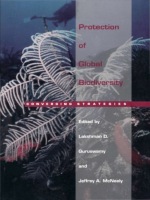 Protection of Global Biodiversity: Converging Strategies
Lakshman D. Guruswamy and Jeffrey A. McNeely, eds.
Duke University Press, 1998 The rate of extinction of biological species is greater today than at any time in the last 65 million years. Some predict that if this rate continues, two-thirds of all living species will disappear during the next century. Because reaching consensus on specific courses of action involves complex issues, any adequate response to this impending crisis must include coverage of many areas of inquiry and understanding. Protection of Global Biodiversity features essays by distinguished international experts who communicate with each other across disciplinary boundaries to address the challenge of formulating policies to protect biodiversity. Although the global community has recently adopted a Convention of Biological Diversity, the agreement sets forth only abstract goals. Contributors to this volume advance the Convention’s initial steps by providing workable solutions that can be implemented regionally, nationally, and locally. The contributors—including natural, social, and political scientists; economists; lawyers; and environmentalists; and decisionmakers in business, agriculture, and government—have united to create a common discourse and to evaluate and propose strategies for halting this alarming loss of biodiversity. In recognizing the diverse aspects of this task—scientific, economic, institutional, moral, and legal—this book presents a new picture of emerging action. Contributors. S. James Anaya, Gregory Benford, Graciela Chichilnisky, S. Todd Crider, Yvonne Cripps, Robert T. Fraley, Anil K. Gupta, Lakshman D. Guruswamy, G. M. Heal, Brent Hendricks, Robert B. Horsch, Laura L. Jackson, Annie Lovejoy, Ariel E. Lugo, Jeffrey A. McNeely, Brian G. Norton, Elinor Ostrom, Peter H. Raven, John W. Reid, Walter V. Reid, Mark Sagoff, Roger A. Sedgo, R. David Simpson, Ana Sittenfeld, Christopher D. Stone, Gary H. Toenniessen
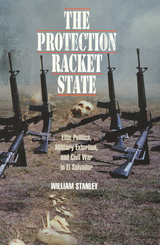 The Protection Racket State: Elite Politics, Military Extortion, and Civil War in El Salvador
William Stanley
Temple University Press, 1996 In 1932 security forces in El Salvador murdered 25,000 peasants and workers. Between 1978 and 1991 the Salvadoran government killed an additional 50,000 civilians. Death squads maimed and tortured their victims, who included labor organizers, priests, and teachers. By the later months of 1980, government forces were slaughtering 1,000 civilians a month. Most of those killed were poor or worked with the poor. In per capita terms Salvadoran state terror was among the worst in the hemisphere. States have killed more people than have rebellions, but we know very little about what factors influence this genocide. Why do states kill? In this provocative and chilling book, William Stanley demonstrates that the Salvadoran military state was essentially a protection racket. It offered protection to the elites from civilian uprising and in return received a concession to govern. This protection took the form of wide-scale murder. As Stanley puts it, "State violence was a currency of relations between state and non-state elites." There are valuable lessons in this book for all those concerned with state-sponsored terror. It indicts the United States for having strengthened the might of the Salvadoran military. It challenges conventional wisdom about governments and repression and shows state-sponsored violence as much more than just a response to opposition.
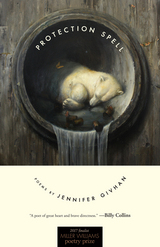 Protection Spell: Poems
Jennifer Givhan
University of Arkansas Press, 2017 Finalist, 2017 Miller Williams Poetry Prize, edited by Billy Collins “A poet of great heart and brave directness.” —Billy Collins In Protection Spell Jennifer Givhan explores the guilt, sadness, and freedom of relationships: the sticky love that keeps us hanging on for no reason other than love, the inky place that asks us to continue revising and reimagining, tying ourselves to this life and to each other despite the pain (or perhaps because of it). These poems reassemble safe spaces from the fissures cleaving the speaker’s own biracial home and act as witnesses speaking to the racial iniquity of our broader social landscape as well as to the precarious standpoint of a mother-woman of color whose body lies vulnerable to trauma and abuse. From insistent moments of bravery, a collection of poems arises that asks the impossible, like the childhood chant that palliates suffering by demanding nothing less than magical healing: sana sana colita de rana, si no sanas hoy, sanas mañana (the frog who loses his tail is commanded to grow another). In the end, Givhan’s verse offers a place where healing may begin.
 Protein: The Making of a Nutritional Superstar
Samantha King and Gavin Weedon
Duke University Press, 2026 Protein is everywhere—praised as a muscle builder, a weight-loss miracle, an anti-aging elixir, and the catch-all solution for everything from exercise recovery to global malnutrition. In Protein, Samantha King and Gavin Weedon argue that protein’s rise to nutritional superstardom has less to do with human dietary needs and more to do with how its indeterminate, adhesive qualities are marshalled towards commerce, scientific, and social imperatives. Tracing its path from nineteenth-century biochemistry to the status it enjoys today, they expose how protein has been marketed as a cure for global hunger, repackaged as an eco-friendly meat alternative, and wielded as a symbol of masculinity in the fitness industry. From whey waste in industrial farming to longevity drugs for aging bodies, Protein unpacks the myths behind the macronutrient and challenges what we think we know about food, health, and the forces that shape our diets.
Protest and Opportunities: A Theory of Social Movements and Political Change
Felix Kolb
Campus Verlag, 2007 Although grass-roots social movements are an important force of social and political change, they quite often fail to achieve their lofty goals. Similarly, the inability of research to systematically explain the impact of such movements stands in sharp contrast to their emotional appeal. Protest, Opportunities, and Mechanisms attempts to rejuvenate current scholarship by developing a comprehensive theory of social movements and political change.
In addition to reviewing the existing literature on the political outcomes of social movements, this volume analyzes the examples of the American civil rights movement and anti-nuclear energy efforts in eighteen countries to forge a new understanding of their momentous impact.
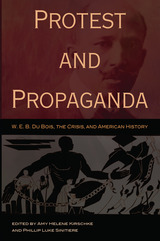 Protest and Propaganda: W. E. B. Du Bois, the CRISIS, and American History
Edited by Amy Helene Kirschke and Phillip Luke Sinitiere
University of Missouri Press, 2013 In looking back on his editorship of Crisis magazine, W. E. B. Du Bois said, “We condensed more news about Negroes and their problems in a month than most colored papers before this had published in a year.” Since its founding by Du Bois in 1910, Crisis has been the primary published voice of the NAACP. Born in an age of Jim Crow racism, often strapped for funds, the magazine struggled and endured, all the while providing a forum for people of color to document their inherent dignity and proclaim their definitive worth as human beings. As the magazine’s editor from 1910 until 1934, Du Bois guided the content and the aim of Crisis with a decisive hand. He ensured that each issue argued for civil rights, economic justice, and social equality, always framing America’s intractable color line in an international perspective. Du Bois benefited from a deep pool of black literary and artistic genius, whether by commissioning the visual creativity of Harlem Renaissance artists for Crisis covers or by publishing poems and short stories from New Negro writers. From North to South, from East to West, and even reaching across the globe, Crisis circulated its ideas and marshaled its impact far and wide. Building on the solid foundation Du Bois laid, subsequent editors and contributors covered issues vital to communities of color, such as access to resources during the New Deal era, educational opportunities related to the historic Brown decision, the realization of basic civil rights at midcentury, American aid to Africa and Caribbean nations, and the persistent economic inequalities of today’s global era. Despite its importance, little has been written about the historical and cultural significance of this seminal magazine. By exploring how Crisis responded to critical issues, the essays in Protest and Propaganda provide the first well-rounded, in-depth look at the magazine's role and influence. The authors show how the essays, columns, and visuals published in Crisis changed conversations, perceptions, and even laws in the United States, thereby calling a fractured nation to more fully live up to its democratic creed. They explain how the magazine survived tremendous odds, document how the voices of justice rose above the clamor of injustice, and demonstrate how relevant such literary, journalistic, and artistic postures remain in a twenty-first-century world still in crisis.
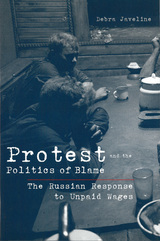 Protest and the Politics of Blame: The Russian Response to Unpaid Wages
Debra Javeline
University of Michigan Press, 2003 The wage arrears crisis has been one of the biggest problems facing contemporary Russia. At its peak, it has involved some $10 billion worth of unpaid wages and has affected approximately 70 percent of the workforce. Yet public protest in the country has been rather limited. The relative passivity of most Russians in the face of such desperate circumstances is a puzzle for students of both collective action and Russian politics. In Protest and the Politics of Blame, Debra Javeline shows that to understand the Russian public's reaction to wage delays, one must examine the ease or difficulty of attributing blame for the crisis.
Previous studies have tried to explain the Russian response to economic hardship by focusing on the economic, organizational, psychological, cultural, and other obstacles that prevent Russians from acting collectively. Challenging the conventional wisdom by testing these alternative explanations with data from an original nationwide survey, Javeline finds that many of the alternative explanations come up short. Instead, she focuses on the need to specify blame among the dizzying number of culprits and potential problem solvers in the crisis, including Russia's central authorities, local authorities, and enterprise managers. Javeline shows that understanding causal relationships drives human behavior and that specificity in blame attribution for a problem influences whether people address that problem through protest.
Debra Javeline is Assistant Professor of Political Science, Rice University.
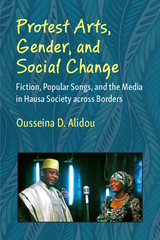 Protest Arts, Gender, and Social Change: Fiction, Popular Songs, and the Media in Hausa Society across Borders
Ousseina D. Alidou
University of Michigan Press, 2024 Protest Arts, Gender, and Social Change: Fiction, Popular Songs, and the Media in Hausa Society across Borders by Ousseina Alidou examines how a new generation of novelists, popular songwriters, and musical performers in contemporary Hausa society are using their creative works to effect social change. This book empathizes with the reality of the forms of oppression, social isolation, and marginalization that vulnerable and underprivileged communities in contemporary Hausa society in Northern Nigeria and the Niger Republic have been experiencing from the mid-1980s to the present. It also highlights the ways in which song performances produce an intertextual dialogue between their lyrics and visual dramatic narratives to raise awareness against social ills, including gender-based violence and social inequalities exposed by biomedical health pandemics such as HIV and COVID-19. In these creative Hausa narratives, the oppressed and marginalized have agency in articulating their own experiences.
While there is an abundance of social science studies giving voice to the dominant actors of hegemonic violence in Hausa society, there is a dearth of works that center the voices of the afflicted, unprivileged, and marginalized class, among whom are women and youth. One aim of this book is to examine the ways popular songs and fiction fill up the humanistic urgency to capture the dignity of the life of those dehumanized by local, national, and international hegemonic religious and secular forces. The book focuses on the resistance narratives of one female novelist and six song composers and performers that generate alternative counterhegemonic responses to dominant patriarchal discourses produced by cultural, religious, and political elites, thus reaching out to marginalized local and national communities and global audiences. Alidou interweaves the social, political, and biomedical epidemics with the concept of “Hausa interiority” to create a unique perspective on contemporary Hausa culture and politics through the lens of artistic productions.
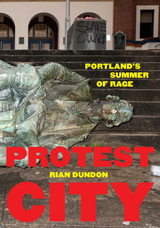 Protest City: Portland's Summer of Rage
Rian Dundon
Oregon State University Press, 2023 In the months leading up to the 2020 presidential election, Portland made national news with nightly social justice protests, often met with violent response by counter protestors and law enforcement. Though frequently regarded as a progressive hub, Portland has a long history of racial inequality and oppression, and the city’s entrenched divisions gained new attention during the Trump years. The photos in Protest City present a visceral visual record of this significant moment in Portland’s history. Rian Dundon, who has been photographing the rise of extreme politics on the West Coast since 2016, lived only a short walk from the protests that erupted after the murder of George Floyd. For one hundred days, Dundon enmeshed himself in the demonstrations with an unobtrusive point-and-shoot camera. The result is a graphic portrayal of how social movements become politicized, how spectacle serves as a subtext to change in the digital age, and how modern protests blur distinctions among performance, ritual, and surveillance. As he follows the progress of Portland’s conflicts, Dundon draws connections to Oregon’s legacy as a stronghold of white supremacist extremism and interrogates the role of whiteness in racial justice movements. Most of the photographs in the book were taken between May and October 2020, but the collection also includes photos from protests in late 2020 and 2021 around various related issues, including the Red House eviction blockade, rightwing demonstrations on January 6 and 17, and the one-year anniversary of George Floyd’s murder. Dundon’s striking photos recreate the immediacy and impact of the protests, while essays by historian Carmen Thompson and journalist Donnell Alexander contextualize the uprising’s sociopolitical background. A chronology and author’s note are also featured. The publisher and author would like to thank the Magnum Foundation, Documentary Arts, and the Economic Hardship Reporting Project for their generous support of this publication. Additional funding has been provided by Furthermore: a program of the J. M. Kaplan Fund.
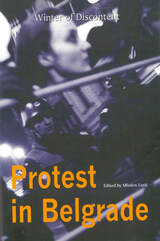 Protest In Belgrade: Winter of Discontent
Mladen Lazic
Central European University Press, 1999 Protest in Belgrade addresses one of the most important social movements of this decade - the civil and student peace demonstrations which took place in Belgrade during the winter of 1996/97. The demonstrations, the largest ever in history, were in response to Milošević’s nullifying of the results of local elections in fourteen towns in Serbia which created global media attention and attracted worldwide sympathy. This in-depth study of a society calling for democracy is based on interviews with over 1000 civilians and students. The book is unique because much of the research was carried out and completed while the demonstrations were still in progress and before the outcome of events was known. A chronology of events is also included. The book provides an abundance of valuable information for analysts of post-socialist transformation, researchers of social movements and social change, and for all those concerned with the tragic events in Southeast Europe.
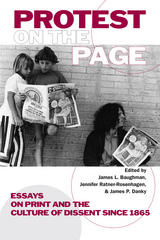 Protest on the Page: Essays on Print and the Culture of Dissent since 1865
Edited by James L. Baughman, Jennifer Ratner-Rosenhagen, and James P. Danky
University of Wisconsin Press, 2015 The use of print to challenge prevailing ideas and conventions has a long history in American public life. As dissenters in America sought social change, they used print to document, articulate, and disseminate their ideas to others. Protest always begins on the margins, but print is the medium that allows it to reach a larger audience. In Protest on the Page, scholars in multiple disciplines offer ten original essays that examine protest print culture in America since 1865. They explore the surprising range of dissidents who enlisted print in their causes—from vegetarians and anarchists at the advent of the twentieth century, to midcentury evangelicals and tween comic book readers, to GIs and feminists in the 1970s–80s. Together they demonstrate that print has never been a neutral medium, but rather has been instrumental in shaping the substance of protest and its audiences.
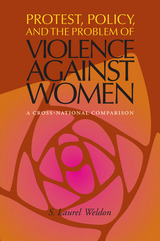 Protest, Policy, and the Problem of Violence against Women: A Cross-National Comparison
S. Laurel Weldon
University of Pittsburgh Press, 2002
Violence against women is one of the most insidious social ills facing the world today. Yet governmental response is inconsistent, ranging from dismissal to aggressive implementation of policies and programs to combat the problem. In her comparative study of thirty-six democratic governments, Laurel Weldon examines the root causes and consequences of the differences in public policy from Northern Europe to Latin America.
She reveals that factors that often influence the development of social policies do not determine policies on violence against women. Neither economic level, religion, region, nor the number of women in government determine governmental responsiveness to this problem. Weldon demonstrates, for example, that Nordic governments take no more action to combat violence against women than Latin American governments, even though the Swedish welfare state is often considered a leader in social policy, particularly with regard to women’s issues.
Instead, the presence of independently organized, active women’s movements plays a greater role in placing violence against women on the public agenda. The breadth and scope of governmental response is greatly enhanced by the presence of an office dedicated to promoting women’s status.
Weldon closes with practical lessons and insights to improve government action on violence against women and other important issues of social justice and democracy.
Protestant and Roman Catholic Ethics: Prospects for Rapprochement
James M. Gustafson
University of Chicago Press, 1978 "If Catholic and Protestant ethicians were asked to name a single theologian who was qualified to write a comprehensive overview of the historical divergences of Catholic and Protestant positions on ethical questions, the bases for those divergences in fundamentally different philosophical and theological perspectives, and the possibilities for future convergences of the traditions, my guess is that James Gustafson would be the one. . . . This brilliant and tightly argued book . . . will be the most important book on moral theology to appear this year."—John Coleman, National Catholic Reporter
 Protestant Diplomacy and the Near East: Missionary Influence on American Policy, 1810-1927
Joseph L. Grabill
University of Minnesota Press, 1971 Protestant Diplomacy and the Near East was first published in 1971. Minnesota Archive Editions uses digital technology to make long-unavailable books once again accessible, and are published unaltered from the original University of Minnesota Press editions. For understand of the Middle East today, it is essential to know something of the historical background of that region, traditionally known as the Near East. In tracing the influence of American Protestant missionary activities on American foreign policy and diplomacy in the Near East, Professor Grabill contributes significantly to an understanding of contemporary affairs. It becomes clear, in this account, that missionaries and philanthropists were the most influential force in the United States' relations with the Near East through the First World War and its aftermath. An important turning point in the history occurred in 1915 when officials of the Ottoman Empire massacred or deported several hundred thousand Turkish Armenians, among whom were the principal constituents of the American missionaries. This prompted the mission groups to shift their emphasis from evangelism and education to the development of the second largest relief organization in the United States history ) eventually called Near East Relief). Through powerful lobbying, the missionaries got their government to consider seriously a protectorate over Armenia or all of Asia Minor. Despite their political failure, the religionists succeeded as cultural frontiersmen through their colleges, such as the American University of Beirut, and their technical assistance programs, which showed the way for the Fulbright, foreign aid, and Peace Corps programs. The archives of the American Board of Commissioners for Foreign Missions (Congregational) and the Presbyterian Board of Missions provided rich source material for this book. The illustrations include photographs and maps.
The Protestant Ethic Revisited
Philip S. Gorski
Temple University Press, 2013 In The Protestant Ethic Revisited, pioneering sociologist Philip Gorski revisits the question raised by Max Weber in The Protestant Ethic and the Spirit of Capitalism about how the Christian West was reshaped by world-changing energies of the Calvinist movement. Gorski not only considers the perennial debate about religion and capitalism, but he also devotes particular attention to the influence of Calvinism on the political development of the West. The Protestant Ethic Revisited is a masterful new collection of Gorski's essays on religion and comparative historical sociology. Reflecting the aim of much of Gorski's work, this anthology shows how nationalism, secularism, politics, and religion in public life are either older—or less stable—than previously thought.
The Protestant Temperament: Patterns of Child-Rearing, Religious Experience, and the Self in Early America
Philip Greven
University of Chicago Press, 1988 Bringing together an extraordinary richness of evidence—from letters, diaries, and other intimate family records of the seventeenth and eighteenth centuries—Philip Greven explores the strikingly distinctive ways in which Protestant children were reared in America. In tracing the hidden continuities of religious experience, of attitudes toward God, children, the self, sexuality, pleasure, virtue, and achievement, Greven identifies three distinct Protestant temperaments prevailing among Americans at the time: the Evangelical, the Moderate, and the General. The Protestant Temperament is a powerful reassessment of the role of child-rearing and religion in early American life.
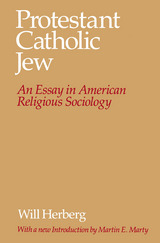 Protestant--Catholic--Jew: An Essay in American Religious Sociology
Will Herberg
University of Chicago Press, 1983 "The most honored discussion of American religion in mid-twentieth century times is Will Herberg's Protestant-Catholic-Jew. . . . [It] spoke precisely to the mid-century condition and speaks in still applicable ways to the American condition and, at its best, the human condition."—Martin E. Marty, from the Introduction
"In Protestant-Catholic-Jew Will Herberg has written the most fascinating essay on the religious sociology of America that has appeared in decades. He has digested all the relevant historical, sociological and other analytical studies, but the product is no mere summary of previous findings. He has made these findings the basis of a new and creative approach to the American scene. It throws as much light on American society as a whole as it does on the peculiarly religious aspects of American life. Mr. Herberg. . . illumines many facets of the American reality, and each chapter presents surprising, and yet very compelling, theses about the religious life of this country. Of all these perhaps the most telling is his thesis that America is not so much a melting pot as three fairly separate melting pots."—Reinhold Niebuhr, New Yorks Times Book Review
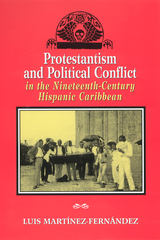 Protestantism and Political Conflict in the Ninteenth-Century Hispanic Caribbean
Martínez-Fernández, Luis
Rutgers University Press, 2001 Catholicism has long been recognized as one of the major forces shaping the Hispanic Caribbean (Cuba, Puerto Rico, and the Dominican Republic) during the nineteenth century, but the role of Protestantism has not been fully explored. Protestantism and Political Conflict in the Nineteenth-Century Hispanic Caribbean traces the emergence of Protestantism in Cuba and Puerto Rico during a crucial period of national consolidation involving both social and political struggle. Using a comparative framework, Martínez-Fernández looks at the ways in which Protestantism, though officially “illegal” for most of the century, established itself, competed with Catholicism, and took differing paths in Cuba and Puerto Rico.
One of the book’s main goals is to trace the links between religion and politics, particularly with regard to early Protestant activities. Protestants encountered a complex social, economic, and political landscape both in Cuba and in Puerto Rico and soon found that their very presence, coupled with their demands for freedom of worship and burial rights, involved them in a series of interrelated struggles in which the Catholic Church was embroiled along with the other main forces of the period—the peasantry, the agrarian bourgeoisie, the mercantile bourgeoisie, and the colonial state. While the established Catholic Church increasingly identified with the conservative, pro-slavery, and colonialist causes, newly arrived Protestants tended to be nationalistic and to pursue particular economic activities—such as cigar exportation in Cuba and the sugar industry in Puerto Rico. The author argues that the early Protestant communities reflected the socio-cultural milieus from which they emerged and were profoundly shaped by the economic activities of their congregants. This influence, in turn, shaped not only the congregations’ composition, but also their political and social orientations.
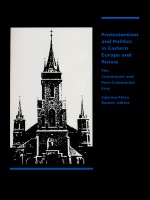 Protestantism and Politics in Eastern Europe and Russia: The Communist and Post-Communist Eras
Sabrina P. Ramet, ed.
Duke University Press, 1993 Coming at a time of enormous transformations in the one-time Communist bloc, this volume provides a much-needed perspective on the significance of church-state relations in the renaissance of civil society in the region. The essays collected here accentuate the peculiarly political character of Protestantism within Communist systems. With few identifiable leaders, a multiplicity of denominations, and a tendency away from hierarchical structures, the Protestant churches presents a remarkably diverse pattern of church-state relations. Consequently, the longtime coexistence of Protestantism and Communism in Eastern Europe and the former Soviet Union affords numerous examples of political accommodation and theological adaption that both reflect and foreshadow the dramatic changes of the 1990s. Based on extensive field research, including interviews with notable figures in the Protestant churches in the region, the essays in this volume address broad topics such as the church's involvment in environmentalism, pacifism, and other dissident movements, as well as issues particular to Russia, Poland, Czechoslovakia, East Germany, (1949–1989), Hungary, Yugoslavia (1945-1991), Bulgaria, and Romania. The final volume in the three-volume work "Christianity Under Stress," Protestantism and Politics in Eastern Europe and Russia will prove invaluable to anyone hoping to understand not only the workings of religion under Communism, but the historical and contemporary interactions of church and state in general. Contributors. Paul Bock, Lawrence Klippenstein, Paul Mojzes, Earl A. Pope, Joseph Pungur, Sabrina Petra Ramet, Walter Sawatsky, N. Gerald Shenk, Gerd Stricker, Sape A. Zylstra
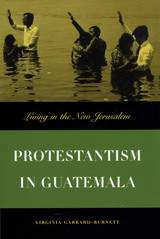 Protestantism in Guatemala: Living in the New Jerusalem
By Virginia Garrard-Burnett
University of Texas Press, 1998 Guatemala has undergone an unprecedented conversion to Protestantism since the 1970s, so that thirty percent of its people now belong to Protestant churches, more than in any other Latin American nation. To illuminate some of the causes of this phenomenon, Virginia Garrard-Burnett here offers the first history of Protestantism in a Latin American country, focusing specifically on the rise of Protestantism within the ethnic and political history of Guatemala. Garrard-Burnett finds that while Protestant missionaries were early valued for their medical clinics, schools, translation projects, and especially for the counterbalance they provided against Roman Catholicism, Protestantism itself attracted few converts in Guatemala until the 1960s. Since then, however, the militarization of the state, increasing public violence, and the "globalization" of Guatemalan national politics have undermined the traditional ties of kinship, custom, and belief that gave Guatemalans a sense of identity, and many are turning to Protestantism to recreate a sense of order, identity, and belonging.
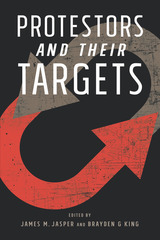 Protestors and Their Targets
James Jasper
Temple University Press, 2020 The strategic interactions between protestors and their targets shape the world around us in profound ways. The editors and contributors to Protesters and Their Targets—all leading scholars in the study of social movements—look at why movements do what they do and why their interactions with other societal actors turn out as they do. They recognize that targets are not stationary but react to the movement and require the movement to react back. This edited collection analyzes how social movements select their targets, movement-target interactions, and the outcomes of those interactions. Case studies examine school closures in Sweden, the U.S. labor movement, Bolivian water and Mexican corn, and other global issues to show the strategic thinking, shifting objectives, and various degrees of success in the actions and nature of these protest movements. Protesters and Their Targets seeks to develop a set of tools for the further development of the field’s future work on this underexplored set of interactions.
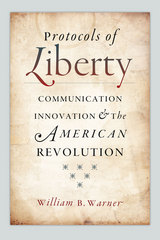 Protocols of Liberty: Communication Innovation and the American Revolution
William B. Warner
University of Chicago Press, 2013 The fledgling United States fought a war to achieve independence from Britain, but as John Adams said, the real revolution occurred “in the minds and hearts of the people” before the armed conflict ever began. Putting the practices of communication at the center of this intellectual revolution, Protocols of Liberty shows how American patriots—the Whigs—used new forms of communication to challenge British authority before any shots were fired at Lexington and Concord. To understand the triumph of the Whigs over the Brit-friendly Tories, William B. Warner argues that it is essential to understand the communication systems that shaped pre-Revolution events in the background. He explains the shift in power by tracing the invention of a new political agency, the Committee of Correspondence; the development of a new genre for political expression, the popular declaration; and the emergence of networks for collective political action, with the Continental Congress at its center. From the establishment of town meetings to the creation of a new postal system and, finally, the Declaration of Independence, Protocols of Liberty reveals that communication innovations contributed decisively to nation-building and continued to be key tools in later American political movements, like abolition and women’s suffrage, to oppose local custom and state law.
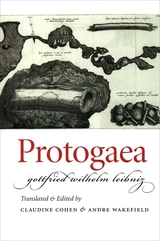 Protogaea
Gottfried Wilhelm Leibniz
University of Chicago Press, 2008 Protogaea, an ambitious account of terrestrial history, was central to the development of the earth sciences in the eighteenth century and provides key philosophical insights into the unity of Gottfried Wilhelm Leibniz’s thought and writings. In the book, Leibniz offers observations about the formation of the earth, the actions of fire and water, the genesis of rocks and minerals, the origins of salts and springs, the formation of fossils, and their identification as the remains of living organisms. Protogaea also includes a series of engraved plates depicting the remains of animals—in particular the famous reconstruction of a “fossil unicorn”—together with a cross section of the cave in which some fossil objects were discovered.
Though the works of Leibniz have been widely translated, Protogaea has languished in its original Latin for centuries. Now Claudine Cohen and Andre Wakefield offer the first English translation of this central text in natural philosophy and natural history. Written between 1691 and 1693, and first published after Leibniz’s death in 1749, Protogaea reemerges in this bilingual edition with an introduction that carefully situates the work within its historical context.
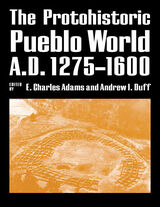 The Protohistoric Pueblo World, A.D. 1275-1600
Edited by E. Charles Adams and Andrew I. Duff
University of Arizona Press, 2004 In the centuries before the arrival of Europeans, the Pueblo world underwent nearly continuous reorganization. Populations moved from Chaco Canyon and the great centers of the Mesa Verde region to areas along the Rio Grande, the Little Colorado River, and the Mogollon Rim, where they began constructing larger and differently organized villages, many with more than 500 rooms. Villages also tended to occur in clusters that have been interpreted in a number of different ways. This book describes and interprets this period of southwestern history immediately before and after initial European contact, A.D. 1275-1600—a span of time during which Pueblo peoples and culture were dramatically transformed. It summarizes one hundred years of research and archaeological data for the Pueblo IV period as it explores the nature of the organization of village clusters and what they meant in behavioral and political terms. Twelve of the chapters individually examine the northern and eastern portions of the Southwest and the groups who settled there during the protohistoric period. The authors develop histories for settlement clusters that offer insights into their unique development and the variety of ways that villages formed these clusters. These analyses show the extent to which spatial clusters of large settlements may have formed regionally organized alliances, and in some cases they reveal a connection between protohistoric villages and indigenous or migratory groups from the preceding period. This volume is distinct from other recent syntheses of Pueblo IV research in that it treats the settlement cluster as the analytic unit. By analyzing how members of clusters of villages interacted with one another, it offers a clearer understanding of the value of this level of analysis and suggests possibilities for future research. In addition to offering new insights on the Pueblo IV world, the volume serves as a compendium of information on more than 400 known villages larger than 50 rooms. It will be of lasting interest not only to archaeologists but also to geographers, land managers, and general readers interested in Pueblo culture.
 Protohistoric Yamato: Archaeology of the First Japanese State
Gina Lee Barnes
University of Michigan Press, 1988 Nara is located in the center of what is known today as the Kinai region of Japan. The ancient name for the region was the Go-Kinai ("five-within the royal domain"), referring to the five provinces of which it was composed: Settsu, Kawachi, Izumi, Yamato and Yamashiro. The name Yamato, presented above variously as a provincial unit (corresponding to the present-day Nara Prefecture), or geographical unit (the Nara Basin only), is also sometimes expanded and applied on a regional scale to mean the Kinai region. This is particularly true in scholarship dealing with the fifth and sixth centuries when Yamato was in ascendance. Therefore, the Nara Basin and its archeology are the keys to unlocking the mysteries of the emergence of Japanese civilization and the early state in Japan. These mysteries are entailed in the earliest recorded history of Japan--references to Japanese island "countries" and "queens" in the Chinese dynastic histories of the third to fifth centuries A.D., and references to "kings" and "emperors" in two late fifth- to early sixth-century sword inscriptions and in the extant chronicles of Japan compiled in the early eighth century.
Protostars and Planets
Tom Gehrels
University of Arizona Press, 1979 Originally published in 1979, at the time of it's publication this work was a unique source book on star formation and the origin of planetary systems from some 35 distinguished authors. Topics include the formation of stars from the cloudy to the stellar to the planetary state. Special emphasis on stars believed capable of producing planets. This foundational work sought to define a new discipline and set the course for the University of Arizona Space Science series.
Protostars and Planets II
David C. Black
University of Arizona Press, 1985 Based on meetings held in Tucson, Arizona in 1984, this volume brought up-to-date recent advances and research on the cosmogony of stars and planets. This book presents the written thoughts of the principle speakers (and their colleagues) from the 1984 meeting. This work continued work started in 1978 to investigate the problems of star formation and the formation of the solar system.
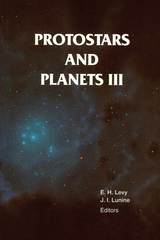 Protostars and Planets III
Eugene Levy
University of Arizona Press, 1993 Previous Space Science Series volumes Protostars and Planets (1978) and Protostars and Planets II (1985) were among the most timely offerings of this illustrious collection of technical works. Protostars and Planets III continues to address fundamental questions concerning the formation of stars and planetary systems in general and of our solar system in particular. Drawing from advances in observational, experimental, and theoretical research, it summarizes our understanding of these processes and addresses major open questions and research issues. Among the more notable subjects covered in the more than three dozen chapters are the collapse of clouds and the formation and evolution of stars and disks; nucleosynthesis and star formation; the occurrence and properties of disks around young stars; T Tauri stars and their accretion disks; gaseous accretion and the formation of the giant planets; comets and the origin of the Solar-System; and the long-term dynamical evolution and stability of the solar system.
Protostars and Planets III reflects the enormous progress made in understanding star and planet formation as a result of new observational capabilities and cooperative research among scientists from diverse fields.
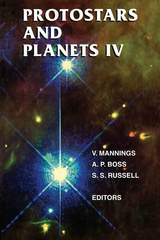 Protostars and Planets IV
Vince Mannings
University of Arizona Press, 2000 Atextbook and a status report for every facet of research into the formation of stars and planets, Protostars and Planets IV brings together 167 authors who report on the most significant advances in the field since the publication of the previous volume in 1993. Protostars and Planets IV reflects improvements in observational techniques and the availability of new facilities such as the Infrared Space Observatory, the refurbished Hubble Space Telescope, and the 10-m Keck telescopes. Advances in computer technology and modeling methods have benefited theoretical studies of molecular clouds, star formation, and jets and disks, while recent analyses of meteorites yield important insights into conditions and processes within our Sun's early protoplanetary disk. The 49 chapters describe context and progress for observational and theoretical studies of the structure, chemistry, and dynamics of molecular clouds; the collapse of cores and the formation of protostars; the formation and properties of young binary stars; the properties of winds, jets, and molecular outflows from young stellar objects; the evolution of circumstellar envelopes and disks; grain growth in disks and the formation of planets; and the properties of the early Solar nebula.
Protostars and Planets IV is also the first book to include chapters describing the discoveries of extrasolar planets, brown dwarfs, and Edgeworth-Kuiper Belt objects, and the first to include high-resolution optical and near-infrared images of protoplanetary disks. Protostars and Planets IV is an unsurpassed reference not only for established researchers but also for younger scientists whose imagination and work will lead to tomorrow's discoveries.
Protostars and Planets V
Edited by Bo Reipurth, David Jewitt, and Klaus Keil
University of Arizona Press, 2007 Increasing discoveries of new planets beyond our solar system are invigorating the quest for new knowledge and understanding of the birth of stars and planets. This new volume in the Space Science Series, with 249 contributing authors, builds on the latest results from recent advances in ground and space-based astronomy and in numerical computing techniques to offer the most detailed and up-to-date picture of star and planet formation, including the formation of our own solar system. This book emphasizes the cross-disciplinary aspects of the field, with a particular focus on the early evolution of our solar system. Protostars and Planets V is the new foundation for further advancement in the fields of stellar and planetary formation, making it an indispensable resource for researchers and students in astronomy, planetary science, and the study of meteorites.
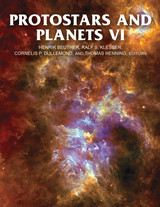 Protostars and Planets VI
Edited by Henrik Beuther, Ralf S. Klessen, Cornelis P. Dullemond, and Thomas Henning
University of Arizona Press, 2014 The revolutionary discovery of thousands of confirmed and candidate planets beyond the solar system brings forth the most fundamental
question: How do planets and their host stars form and evolve? Protostars and Planets VI brings together more than 250 contributing authors at the forefront of their field, conveying the latest results in this research area and establishing a new foundation for advancing our understanding of stellar and planetary formation.
Continuing the tradition of the Protostars and Planets series, this latest volume uniquely integrates the cross-disciplinary aspects of this broad field. Covering an extremely wide range of scales, from the formation of large clouds in our Milky Way galaxy down to small chondrules in our solar system, Protostars and Planets VI takes an encompassing view with the goal of not only highlighting what we know but, most importantly, emphasizing the frontiers of what we do not know.
As a vehicle for propelling forward new discoveries on stars, planets, and their origins, this latest volume in the Space Science Series is an indispensable resource for both current scientists and new students in astronomy, astrophysics, planetary science, and the study of meteorites.
 Prototyping Across the Disciplines: Designing Better Futures
Edited by Jennifer Roberts-Smith, Stan Ruecker, Milena Radzikowska
Intellect Books, 2020 Fields of study progress not by understanding more about what already exists, although that is a useful step, but by making guesses about possible better futures. The guesses consist of small forays into those futures, using strategies that are variously called learning through making, research through design, or more simply: prototyping. While traditionally associated primarily with industrial design, and more recently with software development, prototyping is now used as an important tool in areas ranging from materials engineering to landscape architecture to the digital humanities. This book collects current theories and methods of prototyping across a dozen disciplines and illustrates them through case studies of actual projects, whether in industry or the classroom.
Prototyping Across the Disciplines provides context, a theoretical framework, and a set of methodologies for interdisciplinary collaboration in design. Each chapter offers a different disciplinary perspective on prototyping and provides a case study as a point of comparison for identifying commonalities and divergences in current practices. In examining the central role of prototyping in design research, this edited collection demonstrates theoretical and methodological transferability across disciplines not typically thought to be related, including post-human design, theatre, tabletop game design, landscape architecture, and arts entrepreneurship.
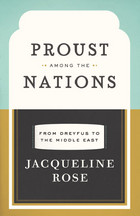 Proust among the Nations: From Dreyfus to the Middle East
Jacqueline Rose
University of Chicago Press, 2011 Known for her far-reaching examinations of psychoanalysis, literature, and politics, Jacqueline Rose has in recent years turned her attention to the Israel-Palestine conflict, one of the most enduring and apparently intractable conflicts of our time. In Proust among the Nations, she takes the development of her thought on this crisis a stage further, revealing it as a distinctly Western problem. In a radical rereading of the Dreyfus affair through the lens of Marcel Proust in dialogue with Freud, Rose offers a fresh and nuanced account of the rise of Jewish nationalism and the subsequent creation of Israel. Following Proust’s heirs, Beckett and Genet, and a host of Middle Eastern writers, artists, and filmmakers, Rose traces the shifting dynamic of memory and identity across the crucial and ongoing cultural links between Europe and Palestine. A powerful and elegant analysis of the responsibility of writing, Proust among the Nations makes the case for literature as a unique resource for understanding political struggle and gives us new ways to think creatively about the violence in the Middle East.
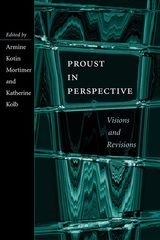 Proust in Perspective: VISIONS AND REVISIONS
Edited by Armine Kotin Mortimer and Katherine Kolb
University of Illinois Press, 2002 Marcel Proust speaks to us today as a contemporary and a classic. His great novel resonates across languages and time, summing up the past, interpreting the present, and envisioning the future. For Proust in Perspective, scholars from France, Italy, Belgium, Germany, Sweden, Japan, Canada, and the United States have drawn on rich new editions of Proust's novel and correspondence to bring us fresh views of his work.
In nineteen original essays, a foreword by Jean–Yves Tadié, and an introduction by editors Armine Kotin Mortimer and Katherine Kolb, this volume guides readers through the dense weave of Proust's fiction and correspondence. The essays take us into the realm of Proustian language–-as quotation, metaphor, and memory–-and into art history and musical ideology, connecting the art of words with the words of art. They explore the interface of history and fiction, the mysteries of the text's evolution, and the dilemmas of its publication. They present the revelations of genetic criticism and the surprises of gender analysis.
Taken together, these essays conjure a multifaceted profile of Proust–-his work, life, character, and influence–-and of new directions in Proust scholarship today. With compelling rigor and infectious enthusiasm, Proust in Perspective conveys the magnitude of Proust's continuing appeal.
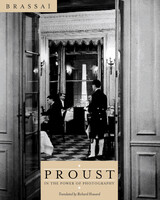 Proust in the Power of Photography
Brassaï
University of Chicago Press, 2001 One of the most original and memorable photographers of the twentieth century, Brassaï was also a journalist, sculptor, and writer. He took great pride in his writing, and he loved literature and language-French most of all. When he arrived in Paris in 1924, Brassaï began teaching himself French by reading Proust. Captured by the sensuality and visual strategies of Proust's writing, Brassaï soon became convinced that he had discovered a kindred spirit. Brassaï wrote: "In his battle against Time, that enemy of our precarious existence, ever on the offensive though never openly so, it was in photography, also born of an age-old longing to halt the moment, to wrest it from the flux of duration in order to 'fix' it forever in a semblance of eternity, that Proust found his best ally." He quoted Proust in his own writing, and from the annotated books in his library, we know that he spent a lifetime studying and dissecting Proust's prose, often line by line.
Drawing on his own experience as a photographer and author, Brassaï discovers a neglected aspect of Proust's interests, offering us a fascinating study of the role of photography both in Proust's oeuvre and in early-twentieth-century culture. Brassaï shows us how Proust was excessively interested in possessing portraits of his acquaintances and how the process by which he remembered and wrote was quite similar to the ways in which photographs register and reveal life's images. This book-beautifully translated by Richard Howard-features previously obscure photographs from Brassaï's High Society series and offers a rare glimpse into two of France's most fascinating artistic minds.
Proust, Mann, Joyce in the Modernist Context, Second Edition
Gerald Gillespie
Catholic University of America Press, 2010 The original version of Proust, Mann, Joyce in the Modernist Context strove to show how a kindred encyclopedic drive and sacramental sense informed their responses to the epochal trauma, yielding three distinct and monumental visions of the human estate by the 1920s.
Proust's Deadline
Christine M. Cano
University of Illinois Press, 2006 Marcel Proust’s multivolume masterpiece, À la recherche du temps perdu, began to appear in 1913. Over the next fifty years, it gained a reputation as one of the greatest literary works of the twentieth century. But the novel’s classic image as a completed work was later shattered by the discovery of unpublished drafts, and the “war of the Prousts” has kept scholars arguing over its definitive form ever since. Christine M. Cano’s Proust’s Deadline presents a concise history of the publishing and reception of À la recherche du temps perdu, and sorts out the most important issues that have arisen from the ensuing debates about the text. She ultimately shows how this quintessential “book about time” tells another story about time’s passage: the story of Proust’s mortal confrontation with the temporality of writing, publishing, and reading.
Provenance Research in Book History: A Handbook
David Pearson is a leading expert on provenance and historic books. He retired in 2017 from a career in libraries and now writes and teaches on book history.
Bodleian Library Publishing, 2019
Proverbs: An Eclectic Edition with Introduction and Textual Commentary
Michael V. Fox
SBL Press, 2015 A new critical text for Proverbs drawing from many manuscripts
This first volume of The Hebrew Bible: A Critical Edition series, features a critical text of Proverbs with extensive text-critical introductions and commentaries. This and future HBCE volumes bring together a scholar’s critical decisions into a single text. construct an eclectic text, drawing from many manuscripts or placing entirely variant texts side by side. A common approach for critical editions of other ancient books, including the New Testament, the eclectic approach and scope used in the HBCE is a first of its kind for the Hebrew Bible.
Features:
- Emendations set in context rather than singly and marginally
- Introduction that sets out the method and purpose of the volume
- Extensive list of abbreviations and sigla
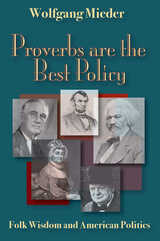 Proverbs Are The Best Policy: Folk Wisdom And American Politics
Wolfgang Mieder
Utah State University Press, 2005 Mieder introduces this survey with an examination of what characterizes American proverbs, what are their origins, and how they have spread internationally with the expansion of America's political role. He then turns to the origins and varied historical uses of what has become the defining proverb of American democracy, "government of the people, by the people, for the people." The employment of proverbs had no brighter exponent among the nation's founding generation than Abigail Adams, who was not without influence despite the exclusion from political office of women. As they have for so much, her abundant letters provide rich sources for politically charged proverbs. Though it is especially associated with Abraham Lincoln, "a house divided against itself cannot stand" is a biblical proverb that has proven of wide value as a political expression. Frederick Douglass's proverbial prowess paralleled that of his contemporary Lincoln, and he employed it effectively in his battle for civil rights. Given proverbs' enduring role in American politics, it is an interesting exercise to compare how United States presidents have employed them in their inaugural addresses, which have produced such gems as John F. Kennedy's "ask not" dictum. The bonds Franklin Roosevelt and Winston Churchill formed through the World War II alliance were expressed in the proverbial language that frequently enlivened their correspondence. Having addressed these aspects of the proverb in American politics, Mieder winds up by considering the sociopolitical significance of the ambiguous proverb "good fences make good neighbors."
 Proverbs, Sentences, and Proverbial Phrases from English Writings Mainly before 1500
Bartlett Jere Whiting
Harvard University Press This book is a collection of English proverbs, sentences, and proverbial phrases from the Middle Ages. The material is drawn from an exhaustive examination of the surviving texts, mainly printed ones but some still in manuscript. Certain books written later than 1500, usually by authors who were born twenty years or so before the turn of the century, are included, and John Heywood, the first great assembler of English proverbs, is represented by the sayings he compiled.
,"No matter how popular a saying may appear," Mr. Whiting points out in his Preface, "it comes to us at one remove or more from popular usage. The medieval proverbs which survive do so only because they were written down by educated men, none of them collectors from the field. In most cases the sayings were incorporated in literary works by authors who did not hesitate to make changes suggested by context, application, and meter. We sometimes forget that Heywood's Dialogue and Epigrams are poems, although Heywood's standards of prosody are such as to let him use proverbs without too drastic changes for rhyme and rhythm's sake. What we have in most quotations is the proverb, not as an author may have heard or read it, but in the form which suited his immediate convenience or whim."
The sayings are alphabetized by key words and the quotations are in chronological order. Cross-references link sayings of similar import, and the index is a guide to important words other than those by which the alphabetical order is established. References are given to the standard collections of English proverbs, so that the user can trace the later history of many of the sayings.
Filling a long-felt gap in the field, this work will be indispensable to students of Old and Middle English literature and of great value to everyone interested in the rich resources of proverb lore.
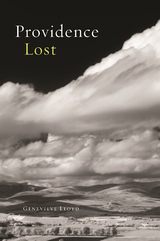 Providence Lost
Genevieve Lloyd
Harvard University Press, 2008 To the ancient Greeks, providence was the inherent purpose and rational structure of the world. In Christian thought, it became a benign will “providing” for human well-being. And in our own ever more secular times—is providence lost? Perhaps, but as Genevieve Lloyd makes clear in this illuminating work, providence still exerts a powerful influence on our thought and in our lives; and understanding how can help us clarify the functioning—or, increasingly, disfunctioning—of concepts of freedom and autonomy that define our modernity. Such an understanding is precisely the goal of this book, which traces a succession of transformations in the concept of providence through the history of Western philosophy.
Beginning with early versions of providence in ancient Greek thought, Lloyd follows the concept through its convergence with Christian ideas, to its role in seventeenth-century philosophical accommodations of freedom and necessity. Finally, she shows how providence was subsumed into the eighteenth-century ideas of progress that eventually rendered it philosophically superfluous. Incorporating rich discussions of thinkers from Euripides to Augustine, Descartes and Spinoza to Kant and Hegel, her lucid and elegantly written work clearly and forcefully brings the history of ideas to bear on our present confusion over notions of autonomy, risk, and responsibility. Exploring the interplay among philosophy, religion, and literature, and among intellect, imagination, and emotion in philosophical thought, this book allows intellectual historians and general readers alike to grasp what it actually means that providence can be lost but not escaped.
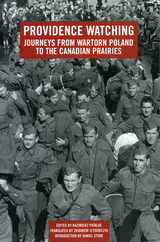 Providence Watching: Journeys from Wartorn Poland to the Canadian Prairies
Kazimierz Patalas
University of Manitoba Press, 2003 At the start of the Second World War, Poland was invaded by both the German and the Soviet armies. The country was unable to withstand the assaults and thousands of Polish soldiers and civilians were shipped to labour camps and prisons, where starvation, disease, and mistreatment were their daily expectations. With the signing of an amnesty between the Polish and Soviet governments in 1942, many of these soldiers were engaged in rebuilding the Polish army, and travelled through the Mideast to fight in the Italian campaign.After the war, Canada accepted over 4000 Polish immigrant soldiers and their families who did not want to return to a communist regime in their country. This book is a moving oral history of the experiences of forty-five individuals during that transition period between the outbreak of war and their eventual relocation in Canada. Their memories of those times remain clear, not so remarkably perhaps, as they recount how they struggled in labour and prison camps, refugee camps, and exile in freezing northern climates, often arriving with the clothes they wore and nothing else. There are stories here of families torn apart and reunited, courageous escapes, underground resistance, friendship and emnity, and above all of survival. To read these memoirs is to understand how the inhumanity of war is confronted and defied by the indomitable human spirit.
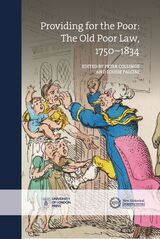 Providing for the Poor: The Old Poor Law, 1750-1834
Edited by Peter Collinge and Louise Falcini
University of London Press, 2022 A history of the Old Poor Law, which was the primary support for the poor in England and Wales from 1601 to 1834.
The Old Poor Law, which was established in 1601 in England and Wales and was in force until 1834, was administered by the local parish and dispensed goods and services to paupers, providing a uniquely comprehensive, premodern system of support for the poor. Providing for the Poor brings together academics and practitioners from across disciplines to reexamine the micropolitics of poverty in the long eighteenth century through the eyes of the poor, their providers, and enablers. Covering such topics as the providence of the parochial sixpence, which was given in order to get a beggar to move along to another parish, to coercive marriages, plebeian clothing, and the much broader implications of vagrancy toward the end of the long eighteenth century, this volume aims to bridge the gaps in our understanding of the experiences of people across the social spectrum whose lives were touched by the Old Poor Law. It brings together some of the wider arguments concerning the nature of welfare during economically difficult times and documents the rising bureaucracy inherent in the system to produce a radical new history of the Old Poor Law in astonishing detail.
 The Province of Affliction: Illness and the Making of Early New England
Ben Mutschler
University of Chicago Press, 2020 In The Province of Affliction, Ben Mutschler explores the surprising roles that illness played in shaping the foundations of New England society and government from the late seventeenth century through the early nineteenth century. Considered healthier than people in many other regions of early America, and yet still riddled with disease, New Englanders grappled steadily with what could be expected of the sick and what allowances were made to them and their providers. Mutschler integrates the history of disease into the narrative of early American social and political development, illuminating the fragility of autonomy, individualism, and advancement . Each sickness in early New England created its own web of interdependent social relations that could both enable survival and set off a long bureaucratic struggle to determine responsibility for the misfortune. From families and households to townships, colonies, and states, illness both defined and strained the institutions of the day, bringing people together in the face of calamity, yet also driving them apart when the cost of persevering grew overwhelming. In the process, domestic turmoil circulated through the social and political world to permeate the very bedrock of early American civic life.
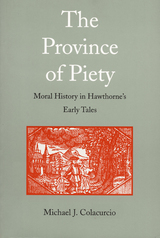 The Province of Piety: Moral History in Hawthorne's Early Tales
Michael J. Colacurcio
Duke University Press, 1995 In this celebrated analysis of Nathaniel Hawthorne, Michael J. Colacurcio presents a view of the author as America’s first significant intellectual historian. Colacurcio shows that Hawthorne’s fiction responds to a wide range of sermons, pamphlets, and religious tracts and debates—a variety of moral discourses at large in the world of provincial New England.
Informed by comprehensive historical research, the author shows that Hawthorne was steeped in New England historiography, particularly the sermon literature of the seventeenth century. But, as Colacurcio shows, Hawthorne did not merely borrow from the historical texts he deliberately studied; rather, he is best understood as having written history. In The Province of Piety, originally published in 1984 (Harvard University Press), Hawthorne is seen as a moral historian working with fictional narratives—a writer brilliantly involved in examining the moral and political effects of Puritanism in America and recreating the emotional and cultural contexts in which earlier Americans had lived.
 Province of Reason
Sam Bass Warner Jr.
Harvard University Press, 1984 This book is about some of the largest events of the twentieth century, about international war, economic collapse, new science and technologies, and about the transformation of an old mill town region into a modern American metropolis. But it sees those sweeping changes through the eyes of fourteen particular Bostonians, in an ambitious attempt to understand the disorienting experiences of recent history. These lives span the years from 1850 to 1980, a time when Boston, like all American cities, was being rebuilt according to the continually changing specifications of science, engineering, mass wealth, and big corporations.
From Boston Brahmins to self-made millionaires, Sam Warner, Jr., brings us into the diverse worlds of Robert Grant, judge and popular novelist; Mary Antin, mystic and advocate for immigrants; Fred Allen, radio comedian; Charles A. Stone and Edwin S. Webster, electrical engineers; Laura Elizabeth Richards, reformist clubwoman; Emily Greene Balch, economist and winner of the Nobel Peace Prize; William Madison Wood, textile magnate; Fred Erwin Beal, socialist labor organizer; Louise Andrews Kent, suburban housewife and writer; Vannevar Bush, science administrator; Laurence K. Marshall, electronics entrepreneur; James Bryant Conant, university president and educational reformer; and Rachel Carson, renowned science writer.
These varied lives have been deftly brought together to illuminate the many contradictory qualifies of today’s metropolitan life: ambitions for education and pervasive social neglect; conspicuous luxuries and endemic poverty; elaborate science and a poisoned environment; far-reaching cooperative networks of strangers and narrow, segregated neighborhoods; the multiplication of women’s roles and the entrapment of women in the home.
Individual experience—how one person lived as a child in a family and in a particular place, how people did their work—can bring renewed insight to the conflicts of modern life. This engrossing story speaks from an urge to recapture history through human lives and to examine its meaning as authentic experience. As Alfred Kazin expresses it, we are a nation of men and women who have endeavored to escape traditions, and therefore self-discovery is our preoccupation and delight.
Provincetown and Other Poems
Leo Connellan
Northwestern University Press, 1995 In Provincetown and Other Poems, Leo Connellan masterfully depicts the New England landscape while capturing the afflicted spirit of those filled “with wonder / and fear that we are being forever left yearning / malcontent.” In his accessible and characteristic style, Connellan empathizes with the impoverished and disparaged, as well as criticizes the roles big industries have in producing adverse circumstances for the region. With its focus on the working class, Provincetown offers a grim and unforgettable look at the place where “Death sings to life . . . where / life style has no code.”
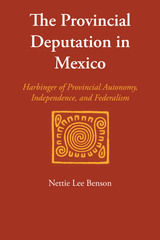 The Provincial Deputation in Mexico: Harbinger of Provincial Autonomy, Independence, and Federalism
By Nettie Lee Benson
University of Texas Press, 1992 Mexico and the United States each have a constitution and a federal system of government. This fact has led many historians to assume that the Mexican system of government, established in the 1820s, is an imitation of the U.S. model. But it is not. First published in Spanish in 1955 and now translated by the author and amplified with new material, this interpretation of the independence movement tells the true story of Mexico's transition from colonial status to federal state. Benson traces the Mexican government's beginning to events in Spain in 1808–1810, when provincial juntas, or deputations, were established to oppose Napoleon's French rule and govern the provinces of Spain and its New World dominions during the Spanish monarch's imprisonment. It was the provincial deputation, not the United States federal system, that provided the model for the state legislative bodies that were eventually formed after Mexico won its independence from Spain in 1821. This finding—the result of years of painstaking archival research—strongly confirms the independence of Mexico's political development from U.S. influence. Its importance to a study of Mexican history cannot be overstated.
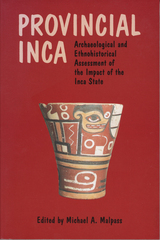 Provincial Inca: Archaeological and Ethnohistorical Assessment of the Impact of the Inca State
Michael A. Malpass
University of Iowa Press, 1993 The Inca empire of Tawantinsuyu spanned almost 2,000 miles of enormous environmental variety, from coastal deserts to high-altitude grasslands. In less than a century, without wheeled vehicles or animals that could be ridden, the Incas conquered cultures that differed as tremendously as their environments. From agriculture-based politics with an elaborate material foundation like the Chimu of the north coast of Peru to marginal communities of fisherfolk like the Uru of the Lake Titicaca region, all were incorporated into a strongly hierarchical system as the empire spread during the Late Horizon, from A.D. 1438 to 1532. The essays in this distinctive, multifaceted volume combine the two principal sources of information on the Incas and the peoples they conquered—ethnohistorical accounts and archaeological research—to produce a single vision of a flexible, heterogeneous empire. The essayists' analytical focus evaluates the means by which we understand the Inca empire and its relationships with its conquered peoples; their empirical focus provides specific archaeological ways of identifying the Inca presence in provincial areas. Important contributions include the presentation of new data on Inca administrative policies and the merging of ethnic groups into the empire and the documentation of the many ways used to differentiate Inca from non-Inca material remains. Encompassing a wide range of environmental conditions and many kinds of provinces,Provincial Inca tests archaeological data against ethnohistorical descriptions to illuminate the variability in Inca state policies with regard to the incorporation of different provinces. It should be read by anyone interested in Andean archaeology, ethnohistory, culture, ethnicity, and the formation of state.
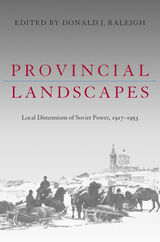 Provincial Landscapes: Local Dimensions Of Soviet Power 1917-1953
Donald J. Raleigh
University of Pittsburgh Press, 2001
The closed nature of the Soviet Union, combined with the West’s intellectual paradigm of Communist totalitarianism prior to the 1970s, have led to a one-dimensional view of Soviet history, both in Russia and the West. The opening of former Soviet archives allows historians to explore a broad array of critical issues at the local level. Provincial Landscapes is the first publication to begin filling this enormous gap in scholarship on the Soviet Union, pointing the way to additional work that will certainly force major reevaluations of the nation’s history.
Focusing on the years between the Revolution and Stalin’s death, the contributors to this volume address a variety of topics, including how political events and social engineering played themselves out at the local level; the construction of Bolshevik identities, including class, gender, ethnicity, and place; the Soviet cultural project; and the hybridization of Soviet cultural forms. In showing how the local is related to the larger society, the essays decenter standard narratives of Soviet history, enrich the understanding of major events and turning points in that history, and provide a context for the highly visible socio-political and cultural role individual Russian provinces began to play after the breakup of the Soviet Union.
 Provincial Magistrates and Revolutionary Politics in France, 1789-1795
Philip Dawson
Harvard University Press, 1972 It is commonly agreed that the history of France at the end of the eighteenth century was influenced powerfully, at times decisively, by collective interests and group actions. Yet, as Philip Dawson shows, this consensus has been the foundation of endless scholarly argument over the purposes of group actions and their effects on economic, political, and intellectual life, the accuracy of facts reported, the validity of different methods of analysis, and the significance of the whole topic for previous and subsequent human experience. In probing these questions, this monograph contributes research findings to the historical controversy over the political motives and conduct of the upper bourgeoisie during the French Revolution.
Chosen for study is a well-defined occupational group near the pinnacle of the bourgeoisie, the 2700 judicial officeholders in the bailliages and sénéchaussées--royal courts from which appeals were taken to the parlements. These lower-court magistrates were generally well-to-do and esteemed personages in the provincial bourgeoisie, who could potentially be drawn to either side in a political struggle between nobility and bourgeoisie. They constituted more than 20 percent of the bourgeois representation in the Estates General of 1789. Revolutionary legislation abolished their offices, but many of them remained active in politics even under the revolutionary republic.
Dawson makes use of a variety of manuscript materials pertinent to the magistrates as he treats their activities as members of corporate groups before 1790 and follows many of them as individuals through the revolutionary years to 1795. In part, the book is based on biographical data relating to 230 magistrates--all who were in office in the provinces of Burgundy and Poitou at the outbreak of the revolution.
By the end of 1789, the author concludes, most of the magistrates came to accept revolutionary change because alternative courses of action had been made more unacceptable to them. It was their support that helped to make possible the revolutionary process itself. "They were not the leaders of the revolutionary bourgeoisie. Before 1789, they had been in the highest rank of the bourgeoisie and they remained a notable part of it, but most of them had come to support revolution hesitantly, cautiously, with moderation and many a backward glance."
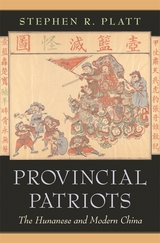 Provincial Patriots: The Hunanese and Modern China
Stephen R. Platt
Harvard University Press, 2007 From the Taiping Rebellion in the mid-nineteenth century to the Chinese Communist movement in the twentieth, no province in China gave rise to as many reformers, military officers, and revolutionaries as did Hunan. Stephen Platt offers the first comprehensive study of why Hunan wielded such disproportionate influence.
Covering a span of eight decades, this book portrays three generations of Hunanese scholar-activists who held their provincial loyalties above their allegiances to a questionable Chinese empire. The renaissance of Hunan centered around the revival of Wang Fuzhi, a local hermit scholar from the seventeenth century whose iconoclastic writings were deemed a remarkable match for "Western" ideas of progress, humanism, and nationalism. Advocates of reform and revolution thus framed their projects as the continuance of a local tradition--the natural destiny of the Hunanese people--creating a tradition of reform and nationalism that culminated in the 1920s with a Hunanese independence movement led by the young Mao Zedong.
By putting provincial Hunan at the center of this narrative, Platt uncovers an unexpected and surprising story of modern China that sheds light on the current resurgence of regionalism in the country.
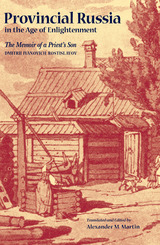 Provincial Russia in the Age of Enlightenment: The Memoir of a Priest's Son
Dmitrii Ivanovich Rostislavov
Northern Illinois University Press, 2002
The memoir of Dmitrii Ivanovich Rostislavov—a mathematician, teacher, and social critic—offers a rare firsthand view of provincial Russia in the late eighteenth and early nineteenth centuries. Translated into English for the first time, these extraordinary observations reveal much about daily village life and the cultural milieu of the time. An acute observer, Rostislavov discusses social and ethnic relationships as well as matters pertaining to education, law enforcement, religious practice, and folk beliefs.
Rostislavov's account of his own education is a harrowing description of coming of age in a Darwinian world of violence and cruelty. Coarse, impoverished schoolboys, brutal and corrupt teachers, and callous landlords formed a harsh environment characterized by sadistic corporal punishment and bitter class hatreds. Variously humorous, elegiac, and passionate, his narrative shows why even those from relatively privileged backgrounds came to detest the authoritarian order of the old regime.
In a probing analysis of the Russian national order, Rostislavov found the twin evils facing Russia to be the coarseness of traditional society and the authoritarianism and corruption of the regime and its representatives. Russia's hope for the future, he believed, lay with cultural changes that would ultimately raise the society's moral level. Illustrations, maps, and an introduction illuminating the historical context accompany this remarkable account of life in provincial Russia.
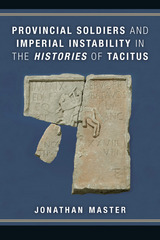 Provincial Soldiers and Imperial Instability in the Histories of Tacitus
Jonathan Master
University of Michigan Press, 2016 Tacitus’ narrative of 69 CE, the year of the four emperors, is famous for its description of a series of coups that sees one man after another crowned. Many scholars seem to read Tacitus as though he wrote only about the constricted world of imperial Rome and the machinations of emperors, courtiers, and victims of the principate; even recent work on the Histories either passes over or lightly touches upon civil unrest and revolts in the provinces. In Provincial Soldiers and Imperial Instability in the Histories of Tacitus, Jonathan Master looks beyond imperial politics and finds threats to the Empire’s stability among unassimilated foreign subjects who were made to fight in the Roman army. Master draws on scholarship in political theory, Latin historiography, Roman history, and ethnic identity to demonstrate how Tacitus presented to his contemporary audience in Trajanic Rome the dangerous consequences of the city’s failure to reward and incorporate its provincial subjects. Master argues that Tacitus’ presentation of the Vitellian and Flavian armies, and especially the Batavian auxiliary soldiers, reflects a central lesson of the Histories: the Empire’s exploitation of provincial manpower (increasingly the majority of all soldiers under Roman banners) while offering little in return, set the stage for civil wars and ultimately the separatist Batavian revolt.
 Provincialising nature: multidisciplinary approaches to the politics of the environment in Latin America
Edited by Michela Coletta and Malayna Raftopoulos
University of London Press, 2016 Provincialising Nature: Multidisciplinary Approaches to the Politics of the Environment in Latin America offers a timely analysis of some of the crucial challenges, contradictions and promises within current environmental discourses and practices in the region. This book shows both challenging scenarios and original perspectives that have emerged in Latin America in relation to the globally urgent issues of climate change and the environmental crisis. Two interconnected analytical frameworks guide the discussions in the book: the relationship between nature, knowledge and identity and their role in understanding recent and current practices of climate change and environmental policy. The different chapters in this volume contribute to this debate by offering multidisciplinary perspectives on particular aspects of these two frameworks and through a multidirectional outlook that links the local, national, regional and transnational levels of inquiry across a diverse geographical spectrum.
 Proving Grounds: Project Plowshare and the Unrealized Dream of Nuclear Earthmoving
Kirsch, Scott L
Rutgers University Press, 2005 Although unthinkable by today’s standards, the U.S. Atomic Energy Commission spent hundreds of millions of dollars between 1957 and 1974 studying the feasibility of using nuclear explosions for so-called “peaceful” purposes under a program called Project Plowshare. Nuclear earthmoving, promoted by the famed physicist, defense strategist, and anticommunist Edward Teller, was the most notorious of Plowshare’s experimental programs. Teller and his colleagues proposed using nuclear explosions to build canals, dig harbors, and create dams and quarries. Such “constructive” uses of atomic weaponry, they believed, would help defuse Americans’ fears about radioactive fallout and nuclear testing and would encourage continued support for nuclear research programs.
In Proving Grounds, Scott Kirsch traces the rise and fall of this astonishing cold war initiative. He examines the work that went into making “geographical engineering” or “earthmoving” an imminent possibility as well as the public controversy, scientific uncertainty, and political opposition that kept it—with the exception of several massive craters in the Nevada desert—out of the landscape.
On one level, Kirsch demonstrates how the history of Project Plowshare was shaped by the specific issues and sentiments that influenced American nuclear and environmental policy during the 1950s and 1960s. But Kirsch also argues that the lessons learned from this case continue to hold relevance today. By exploring key issues of science and risk, Proving Grounds warns that knowledge production and environmental politics are still very much intimately, and dangerously, related.
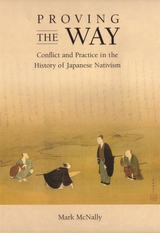 Proving the Way: Conflict and Practice in the History of Japanese Nativism
Mark McNally
Harvard University Press, 2005 Kokugaku, or nativism, was one of the most important intellectual movements from the seventeenth through the nineteenth century in Japan, and its worldview continues to be influential today. This scholarly endeavor represented an attempt to use Japanese antiquity to revitalize what many saw as a society in decline. One important figure in this movement was Hirata Atsutane (1776-1843), a center of controversy in his own lifetime. Even though Atsutane's version of nativism came to be the standard form, many modern scholars dismiss him because of his scholarly shortcomings.
The primary goal of this book is to restore historicity to the study of nativism by recognizing Atsutane's role in the creation and perpetuation of an intellectual tradition that remains a significant part of Japanese history and culture. Arguing that conflict among scholars and intellectuals begets ideas, Mark McNally shows that nativism was rife with internal competition. The mid-nineteenth-century suppression of this multiplicity of views led to the emergence of what we now think of as "nativism." By focusing on the competition among the rival strands of nativism, McNally demonstrates that nativism resulted not from Atsutane's conscious attempt to formulate a new intellectual tradition but from his greater political skills at putting his views across.
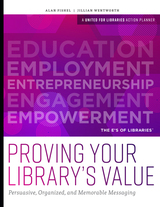 Proving Your Library's Value: Persuasive, Organized, and Memorable Messaging
Alan Fishel
American Library Association, 2020 You know the value of your library, but elected officials, donors, community leaders, funders, and other important stakeholders may not. How can you make the library a priority for these groups, who may have preconceived notions about what the library does, as you compete with other important community organizations for funding? In this book from United for Libraries, you’ll learn how to use The E’s of Libraries® (Education, Employment, Entrepreneurship, Engagement, and Empowerment) to quickly demonstrate why your library is essential and worthy of funding, using messaging that is organized, persuasive, and memorable. With the help of worksheets, charts, and prompts, you will learn how to - use language designed to win over stakeholders, funders, and partners;
- craft custom messaging in several formats that is easily accessible and memorable, including elevator speeches, budget presentations, and annual appeals; and
- create presentations and other materials tailored to any audience based on the sample documents included.
This book's innovative framework can be used by any size or type of library, and by any library advocate, including Friends groups, library staff, trustees, and foundations.
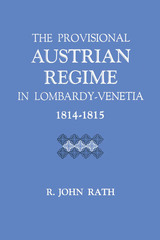 The Provisional Austrian Regime in Lombardy–Venetia, 1814–1815
By R. John Rath
University of Texas Press, 1969 When Austrian soldiers first set foot in Lombardy-Venetia in October, 1813, they were greeted everywhere as liberators and friends. In the spring of 1815, when Joachim Murat's efforts to establish a united Italy ended in miserable failure and when the Habsburgs announced the main features of the regime they intended to establish in their Italian provinces, the Venetians were still strongly pro-Austrian, but considerable anti-Habsburg feeling had developed among the Lombards. This carefully documented study of the first two years of Austrian reoccupation of Lombardy-Venetia examines all aspects of the Habsburg provisional regimes and draws some conclusions about the reasons for the different attitudes in the two provinces. In detailed sketches of the provisional governments of Venetia (Chapter I) and Lombardy (Chapter II) and an examination of Austrian economic policies and practices in both provinces (Chapter III), the author shows that although the governments of the two provinces shared many common traits, they differed in a number of significant ways. Actually, Venetia was much less efficiently governed than Lombardy; and the Lombards enjoyed at least a small measure of self-administration that was largely denied the Venetians. The Lombards were much more prosperous than their neighbors, yet they paid much less in taxes and were exempt from most of the burdensome military requisitions that the Austrians inflicted on the Venetians. In spite of these advantages, the relatively small nationalist movement in Austria's Italian provinces was almost entirely confined to Lombardy. The author examines public opinion in Lombardy-Venetia about liberal intrigues (Chapter IV); the relationship of secret societies to liberalism (Chapter V); the Brescian-Milanese conspiracy (Chapter VI) and the Austrian handling of that affair (Chapter VII); and the fiasco of Joachim Murat's "War of Italian Independence" (Chapter VIII).
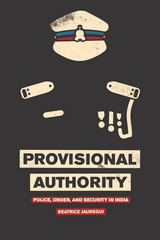 Provisional Authority: Police, Order, and Security in India
Beatrice Jauregui
University of Chicago Press, 2016 Policing as a global form is often fraught with excessive violence, corruption, and even criminalization. These sorts of problems are especially omnipresent in postcolonial nations such as India, where Beatrice Jauregui has spent several years studying the day-to-day lives of police officers in its most populous state, Uttar Pradesh. In this book, she offers an empirically rich and theoretically innovative look at the great puzzle of police authority in contemporary India and its relationship to social order, democratic governance, and security.
Jauregui explores the paradoxical demands placed on Indian police, who are at once routinely charged with abuses of authority at the same time that they are asked to extend that authority into any number of both official and unofficial tasks. Her ethnography of their everyday life and work demonstrates that police authority is provisional in several senses: shifting across time and space, subject to the availability and movement of resources, and dependent upon shared moral codes and relentless instrumental demands. In the end, she shows that police authority in India is not simply a vulgar manifestation of raw power or the violence of law but, rather, a contingent and volatile social resource relied upon in different ways to help realize human needs and desires in a pluralistic, postcolonial democracy.
Provocative and compelling, Provisional Authority provides a rare and disquieting look inside the world of police in India, and shines critical light on an institution fraught with moral, legal and political contradictions.
 The Provisional IRA: From Insurrection to Parliament
Tommy McKearney
Pluto Press, 2011 This book analyses the underlying reasons behind the formation of the Provisional Irish Republican Army (IRA), its development, where this current in Irish republicanism is at present and its prospects for the future.
Tommy McKearney, a former IRA member who was part of the 1980 hunger strike, challenges the misconception that the Provisional IRA was only, or even wholly, about ending partition and uniting Ireland. He argues that while these objectives were always the core and headline demands of the organisation, opposition to the old Northern Ireland state was a major dynamic for the IRA’s armed campaign. As he explores the makeup and strategy of the IRA he is not uncritical, examining alternative options available to the movement at different periods, arguing that its inability to develop a clear socialist programme has limited its effectiveness and reach.
This authoritative and engaging history provides a fascinating insight into the workings and dynamics of a modern resistance movement.
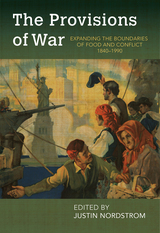 The Provisions of War: Expanding the Boundaries of Food and Conflict, 1840-1990
Justin Nordstrom
University of Arkansas Press, 2021 The Provisions of War examines how soldiers, civilians, communities, and institutions have used food and its absence as both a destructive weapon and a unifying force in establishing governmental control and cultural cohesion during times of conflict. Historians as well as scholars of literature, regional studies, and religious studies problematize traditional geographic boundaries and periodization in this essay collection, analyzing various conflicts of the nineteenth and twentieth centuries through a foodways lens to reveal new insights about the parameters of armed interactions. The subjects covered are as varied and inclusive as the perspectives offered—ranging from topics like military logistics and animal disease in colonial Africa, Indian vegetarian identity, and food in the counterinsurgency of the Malayan Emergency, to investigations of hunger in Egypt after World War I and American soldiers’ role in the making of US–Mexico borderlands. Taken together, the essays here demonstrate the role of food in shaping prewar political debates and postwar realities, revealing how dietary adjustments brought on by military campaigns reshape national and individual foodways and identities long after the cessation of hostilities
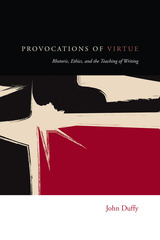 Provocations of Virtue: Rhetoric, Ethics, and the Teaching of Writing
John Duffy
Utah State University Press, 2018 In Provocations of Virtue, John Duffy explores the indispensable role of writing teachers and scholars in counteracting the polarized, venomous “post-truth” character of contemporary public argument. Teachers of writing are uniquely positioned to address the crisis of public discourse because their work in the writing classroom is tied to the teaching of ethical language practices that are known to moral philosophers as “the virtues”—truthfulness, accountability, open-mindedness, generosity, and intellectual courage.
Drawing upon Aristotle’s Nicomachean Ethics and the branch of philosophical inquiry known as “virtue ethics,” Provocations of Virtue calls for the reclamation of “rhetorical virtues” as a core function in the writing classroom. Duffy considers what these virtues actually are, how they might be taught, and whether they can prepare students to begin repairing the broken state of public argument. In the discourse of the virtues, teachers and scholars of writing are offered a common language and a shared narrative—a story that speaks to the inherent purpose of the writing class and to what is at stake in teaching writing in the twenty-first century.
This book is a timely and historically significant contribution to the field and will be of major interest to scholars and administrators in writing studies, rhetoric, composition, and linguistics as well as philosophers and those exploring ethics.
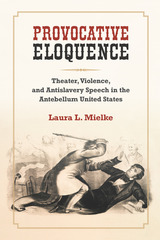 Provocative Eloquence: Theater, Violence, and Antislavery Speech in the Antebellum United States
Laura L. Mielke
University of Michigan Press, 2019 In the mid-19th century, rhetoric surrounding slavery was permeated by violence. Slavery’s defenders often used brute force to suppress opponents, and even those abolitionists dedicated to pacifism drew upon visions of widespread destruction. Provocative Eloquence recounts how the theater, long an arena for heightened eloquence and physical contest, proved terribly relevant in the lead up to the Civil War. As antislavery speech and open conflict intertwined, the nation became a stage. The book brings together notions of intertextuality and interperformativity to understand how the confluence of oratorical and theatrical practices in the antebellum period reflected the conflict over slavery and deeply influenced the language that barely contained that conflict. The book draws on a wide range of work in performance studies, theater history, black performance theory, oratorical studies, and literature and law to provide a new narrative of the interaction of oratorical, theatrical, and literary histories of the nineteenth-century U.S.
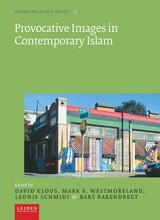 Provocative Images in Contemporary Islam
David Kloos
Amsterdam University Press, 2023 How do images provoke? And why? This volume aims to inspire thought by examining the relationship between images and Islam in a variety of social, political, and geographic settings.
Perhaps, the cover image of this book provokes you, the reader of this book. Does an image of a mural on the wall of Marcus Books in Oakland, California, represent contemporary images of Islam? Does the iconic image of El-Hajj Malik El-Shabazz, aka Malcolm X, photographed while holding a rifle in defense of his home, contribute to or complicate images in and of Islam? Does the cover unduly sensationalize the image or does it, rather, arouse pride in particular Muslim legacies of knowledge and liberation? To what extent does it confirm normative narratives? To what extent does it disrupt such narratives, allowing new imaginaries to take hold?
Moving beyond a common visual concern within Religious Studies with art, aesthetic value, and perceptions of beauty or coherence, this volume shows how, when, and why images dare, shock, terrorize, confront, challenge, mock, shame, taunt, or offend, either intentionally or unintentionally, and as such lead to both confrontation and affective religious engagement. Exploring and experimenting with the relationship between text and image, the contributions draw attention simultaneously to the messiness of everyday life and to highly targeted, disruptive interventions that mark religious contestation in an era of escalating mobility and digital multiplicity. The volume thus illuminates an insight that has received little attention so far: provocation is among religion’s most significant mediations.
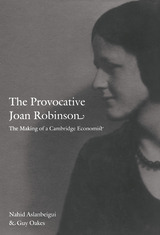 The Provocative Joan Robinson: The Making of a Cambridge Economist
Nahid Aslanbeigui and Guy Oakes
Duke University Press, 2009 One of the most original and prolific economists of the twentieth century, Joan Robinson (1903–83) is widely regarded as the most important woman in the history of economic thought. Robinson studied economics at Cambridge University, where she made a career that lasted some fifty years. She was an unlikely candidate for success at Cambridge. A young woman in 1930 in a university dominated by men, she succeeded despite not having a remarkable academic record, a college fellowship, significant publications, or a powerful patron. In The Provocative Joan Robinson, Nahid Aslanbeigui and Guy Oakes trace the strategies and tactics Robinson used to create her professional identity as a Cambridge economist in the 1930s, examining how she recruited mentors and advocates, carefully defined her objectives, and deftly pursued and exploited opportunities. Aslanbeigui and Oakes demonstrate that Robinson’s professional identity was thoroughly embedded in a local scientific culture in which the Cambridge economists A. C. Pigou, John Maynard Keynes, Dennis Robertson, Piero Sraffa, Richard Kahn (Robinson’s closest friend on the Cambridge faculty), and her husband Austin Robinson were important figures. Although the economists Joan Robinson most admired—Pigou, Keynes, and their mentor Alfred Marshall—had discovered ideas of singular greatness, she was convinced that each had failed to grasp the essential theoretical significance of his own work. She made it her mission to recast their work both to illuminate their major contributions and to redefine a Cambridge tradition of economic thought. Based on the extensive correspondence of Robinson and her colleagues, The Provocative Joan Robinson is the story of a remarkable woman, the intellectual and social world of a legendary group of economists, and the interplay between ideas, ambitions, and disciplinary communities.
 Provoking Agents: GENDER AND AGENCY IN THEORY AND PRACTICE
Edited by Judith Kegan Gardiner
University of Illinois Press, 1995 "A major contribution in women's studies and in other disciplines
dealing with issues of agency. The authors raise issues that are very
important . . . and they raise them as they must be raised--by bridging
theory and action." -- Kathryn Pine Addelson, author of Moral
Passages: Toward a Collectivist Moral Theory
Both the women's liberation movement and those who have studied it characterize
agency as the capacity to make change in individual consciousness, personal
lives, and society. The seventeen contributors to Provoking Agents
explore whether--and how--feminist theory, writing, and other social practices
can help readers move beyond seeing women as a powerless group to effecting
changes in their own lives and, ultimately, becoming social activists.
Topics in this multi-disciplinary collection range from maternal surrogacy
to writing, from consciousness-raising to AIDS activism, from pornography
to local organizing
Provoking Feminisms
Edited by Carolyn Allen and Judith A. Howard
University of Chicago Press, 2000
 Provoking the Field: International Perspectives on Visual Arts PhDs in Education
Edited by Rita Irwin and Anita Sinner
Intellect Books, 2019 Provoking the Field invites debate on, and provides an essential resource for, transnational arts-based scholars engaged in critical analyses of international visual arts education and its enquiry in doctoral research. Divided into three parts--doctoral processes, doctoral practices, and doctoral programs--the volume interrogates education in both formal and informal learning environments, ranging from schools to post-secondary institutions to community and adult education.
This book brings together a global range of authors to examine visual arts PhDs using diverse theoretical perspectives; innovative arts and hybrid methodologies; institutional relationships and scholarly practices; and voices from the field in the form of site-specific cases. A compendium of leading voices in arts education, Provoking the Field provides a diverse range of perspectives on arts enquiry, and a comprehensive study of the state of visual arts PhDs in education.
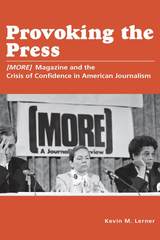 Provoking the Press: (MORE) Magazine and the Crisis of Confidence in American Journalism
Kevin M. Lerner
University of Missouri Press, 2023 At the beginning of the 1970s, broadcast news and a few newspapers such as The New York Times wielded national influence in shaping public discourse, to a degree never before enjoyed by the news media. At the same time, however, attacks from political conservatives such as Vice President Spiro Agnew began to erode public trust in news institutions, even as a new breed of college-educated reporters were hitting their stride. This new wave of journalists, doing their best to cover the roiling culture wars of the day, grew increasingly frustrated by the limitations of traditional notions of objectivity in news writing and began to push back against convention, turning their eyes on the press itself.
Two of these new journalists, a Pulitzer Prize—winning, Harvard-educated New York Times reporter named J. Anthony Lukas, and a former Newsweek media writer named Richard Pollak, founded a journalism review called (MORE) in 1971, with its pilot issue appearing the same month that the Times began publishing the Pentagon Papers. (MORE) covered the press with a critical attitude that blended seriousness and satire—part New York Review of Books, part underground press. In the eight years that it published, (MORE) brought together nearly every important American journalist of the 1970s, either as a writer, a subject of its critical eye, or as a participant in its series of raucous "A.J. Liebling Counter-Conventions"—meetings named after the outspoken press critic—the first of which convened in 1974. In issue after issue the magazine considered and questioned the mainstream press's coverage of explosive stories of the decade, including the Watergate scandal; the "seven dirty words" obscenity trial; the debate over a reporter's constitutional privilege; the rise of public broadcasting; the struggle for women and minorities to find a voice in mainstream newsrooms; and the U.S. debut of press baron Rupert Murdoch.
In telling the story of (MORE) and its legacy, Kevin Lerner explores the power of criticism to reform and guide the institutions of the press and, in turn, influence public discourse.
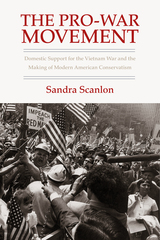 The Pro-War Movement: Domestic Support for the Vietnam War and the Making of Modern American Conservatism
Sandra Scanlon
University of Massachusetts Press, 2013 In the vast literature on the Vietnam War, much has been written about the antiwar movement and its influence on U.S. policy and politics. In this book, Sandra Scanlon shifts attention to those Americans who supported the war and explores the war's impact on the burgeoning conservative political movement of the 1960s and early 1970s.
Believing the Vietnam War to be a just and necessary cause, the pro-war movement pushed for more direct American military intervention in Southeast Asia throughout the Kennedy administration, lobbied for intensified bombing during the Johnson years, and offered coherent, if divided, endorsements of Nixon's policies of phased withdrawal. Although its political wing was dominated by individuals and organizations associated with Barry Goldwater's presidential bids, the movement incorporated a broad range of interests and groups united by a shared antipathy to the New Deal order and liberal Cold War ideology.
Appealing to patriotism, conservative leaders initially rallied popular support in favor of total victory and later endorsed Nixon's call for "peace with honor." Yet as the war dragged on with no clear end in sight, internal divisions eroded the confidence of pro-war conservatives in achieving their aims and forced them to reevaluate the political viability of their hardline Cold War rhetoric. Conservatives still managed to make use of grassroots patriotic campaigns to marshal support for the war, particularly among white ethnic workers opposed to the antiwar movement. Yet in so doing, Scanlon concludes, they altered the nature and direction of the conservative agenda in both foreign and domestic policy for years to come.
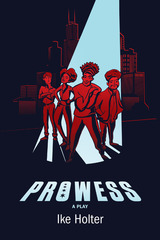 Prowess: A Play
Ike Holter
Northwestern University Press, 2019 Avenging Chicagoans form a league for justice in Ike Holter’s superhero-inspired play, Prowess. In this heartfelt yet fantastical homage to Chicago, award-winning playwright Ike Holter introduces us to a quartet of “average” citizens who have been the victims of violence and felt powerless because of it.
In the face of the city’s seemingly intractable ills, the play’s characters join forces to rescue Chicago—and themselves. But how? With heart, wit, and wisdom, Holter explores how one responds to violence. Does a person focus on self-defense and personal survival? Or fight back—with more violence? Pulsating and physical, Prowess is about vulnerability, vigilantism, heroism, and self-knowledge.
Prowess is one of seven plays in Holter’s Rightlynd Saga, all to be published by Northwestern University Press. The other plays in the cycle are Rightlynd, Exit Strategy, Sender, The Wolf at the End of the Block, Red Rex, and Lottery Day.
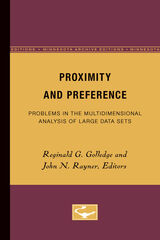 Proximity and Preference: Problems in the Multidimensional Analysis of Large Data Sets
Reginald Golledge
University of Minnesota Press, 1982
Proximity and Preference was first published in 1982.How does one design experiments for collecting large volumes of data such as those needed for marketing surveys, studies of travel patterns, and public opinion polls? This is a common problem for social and behavioral scientists. The papers in this collection address the problems of working with large data sets primarily from the perspectives of geography and psychology, two fields that share a common quantitative research methodology.After an introductory paper on substantive and methodological aspects of the interface between geography and psychology, the book is divided into three sections, experimental design and measurement problems, preference functions and choice behavior, and special problems of analyzing large data sets with multidimensional methods. Each paper is directed toward some fundamental problem such as those relating to experimental design, data reliability, and the selection of analytical methods which are appropriate for data sets of various sizes, completeness, and reliability.
Proxmire: Bulldog of the Senate
Jonathan Kasparek
Wisconsin Historical Society Press, 2019 Proxmire: Bulldog of the Senate is the first comprehensive biography of one of Wisconsin’s most important, and entertaining, political figures. Known for championing consumer-protection legislation and farming interests, Senator Proxmire also fought continuously against wasteful government spending, highlighting the most egregious examples with his monthly “Golden Fleece Award.” Remembered by many Wisconsinites as a friendly, hand-shaking fixture at sporting events and state fairs, Proxmire was one of the few politicians who voted his conscience and never forgot about the people he represented.
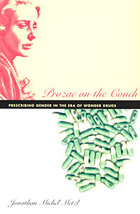 Prozac on the Couch: Prescribing Gender in the Era of Wonder Drugs
Jonathan Michel Metzl
Duke University Press, 2003 Pills replaced the couch; neuroscience took the place of talk therapy; and as psychoanalysis faded from the scene, so did the castrating mothers and hysteric spinsters of Freudian theory. Or so the story goes. In Prozac on the Couch, psychiatrist Jonathan Michel Metzl boldly challenges recent psychiatric history, showing that there’s a lot of Dr. Freud encapsulated in late-twentieth-century psychotropic medications. Providing a cultural history of treatments for depression, anxiety, and other mental illnesses through a look at the professional and popular reception of three “wonder drugs”—Miltown, Valium, and Prozac—Metzl explains the surprising ways Freudian gender categories and popular gender roles have shaped understandings of these drugs. Prozac on the Couch traces the notion of “pills for everyday worries” from the 1950s to the early twenty-first century, through psychiatric and medical journals, popular magazine articles, pharmaceutical advertisements, and popular autobiographical "Prozac narratives.” Metzl shows how clinical and popular talk about these medications often reproduces all the cultural and social baggage associated with psychoanalytic paradigms—whether in a 1956 Cosmopolitan article about research into tranquilizers to “cure” frigid women; a 1970s American Journal of Psychiatry ad introducing Jan, a lesbian who “needs” Valium to find a man; or Peter Kramer’s description of how his patient “Mrs. Prozac” meets her husband after beginning treatment. Prozac on the Couch locates the origins of psychiatry’s “biological revolution” not in the Valiumania of the 1970s but in American popular culture of the 1950s. It was in the 1950s, Metzl points out, that traditional psychoanalysis had the most sway over the American imagination. As the number of Miltown prescriptions soared (reaching 35 million, or nearly one per second, in 1957), advertisements featuring uncertain brides and unfaithful wives miraculously cured by the “new” psychiatric medicines filled popular magazines. Metzl writes without nostalgia for the bygone days of Freudian psychoanalysis and without contempt for psychotropic drugs, which he himself regularly prescribes to his patients. What he urges is an increased self-awareness within the psychiatric community of the ways that Freudian ideas about gender are entangled in Prozac and each new generation of wonder drugs. He encourages, too, an understanding of how ideas about psychotropic medications have suffused popular culture and profoundly altered the relationship between doctors and patients.
 The Prudent Mariner: A Novel
Leslie Walker Williams
University of Tennessee Press, 2008
“The land, the heat, the South's societal complexities (and perplexities) are all here. Utterly involving, wise and perceptive, this is a novel to remember. If you liked To Kill a Mockingbird, you will love The Prudent Mariner.”
-Kelly Cherry, judge of the Peter Taylor Prize for the Novel
In 1913, a young white girl in coastal Georgia fabricates a romance between her elder sister and an African American laborer, inadvertently leading to the man's lynching. A crowd gathers and a photographer records the event on picture postcards. In one of these, the young girl stands smiling beside the hung man.
More than fifty years later, nine-year-old Riddley Cross discovers these postcards amid her late grandfather's belongings. As she tries to make sense of why the postcards are in her family's possession, and why the photographed girl seems so familiar, Riddley becomes haunted by apparitions and dreams of lynchings. The postcards force her to question what she has been taught about the world, the South, and her family-and what she has not.
The mysteries of the lynching postcards start to unravel after her widowed grandmother, Adele, moves in with the family. Afflicted with Alzheimer's disease, Adele speaks only to murmur the occasional insult or curse. Nonetheless, she and Riddley become companions of a sort, based largely on their common affinity for silence, wandering, and the nearby river. When Riddley develops a friendship with her neighbor Carver, an artist and iconoclast, the connections between the postcards and Riddley's family gradually come to light, and a series of tragic events begins to unfold. In The Prudent Mariner, Williams offers a searing exploration of the legacies of complicity and violence, silence and regret, and the unforeseeable ways the past shapes and impinges upon the present.
Leslie Walker Williams was born and raised in Savannah, Georgia, and currently lives in Vancouver, British Columbia. Her short stories have appeared in The Iowa Review, The Madison Review, Harvard Review, and American Fiction. The Prudent Mariner, her first novel, was awarded the Peter Taylor Prize for the Novel, and the Morris Hackney Literary Award for the Novel.
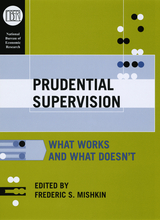 Prudential Supervision: What Works and What Doesn't
Edited by Frederic S. Mishkin
University of Chicago Press, 2001 Since banking systems play a crucial role in maintaining the overall health of the economy, the adverse effects of poorly supervised systems may be quite severe. Without some form of vigilant external oversight, banking systems could fall prey to excessive risk taking, moral hazard, and corruption. Prudential supervision provides that oversight, using government regulation and monitoring to ensure the soundness of the banking system and, by extension, the economy at large.
The contributors to this thoughtful volume examine the current state of prudential supervision, focusing on fundamental issues and key pragmatic concerns. Why is prudential supervision so important? What kinds of excess must it guard against? What particular forms does it take? Which of these are the most effective deterrents against mismanagement and system overload in today's rapidly shifting financial climate? The contributors foresee a continued movement beyond simple regulatory rules in banking and toward a more active evaluation and supervision of a bank's risk management practices.
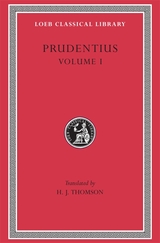 Prudentius, Volume I: Preface. Daily Round. Divinity of Christ. Origin of Sin. Fight for Mansoul. Against Symmachus 1
Prudentius
Harvard University Press Spirited verse.
Prudentius (Aurelius Prudentius Clemens) was born in AD 348 probably at Caesaraugusta (Saragossa) and lived mostly in northeastern Spain, but visited Rome between 400 and 405. His parents, presumably Christian, had him educated in literature and rhetoric. He became a barrister and at least once later on an administrator; he afterwards received some high honor from Emperor Theodosius. Prudentius was a strong Christian who admired the old pagan literature and art, especially the great Latin poets whose forms he used. He looked on the Roman achievement in history as a preparation for the coming of Christ and the triumph of a spiritual empire.
The Loeb Classical Library edition of the poems of Prudentius is in two volumes. Volume I presents: “Preface” (Praefatio); “The Daily Round” (Liber Cathemerinon); twelve literary and attractive hymns, parts of which have been included in the Breviary and in modern hymnals; “The Divinity of Christ” (Apotheosis), which maintains the Trinity and attacks those who denied the distinct personal being of Christ; “The Origin of Sin” (Hamartigenia) attacking the separation of the “strict” God of the Old Testament from the “good” God revealed by Christ; “Fight for Mansoul” (Psychomachia), which describes the struggle between (Christian) Virtues and (Pagan) Vices; and the first book of “Against the Address of Symmachus” (Contra Orationem Symmachi), in which pagan gods are assailed.
The second volume contains the second book of “Against the Address of Symmachus,” opposing a petition for the replacement of an altar and statue of Victory; “Crowns of Martyrdom” (Peristephanon Liber), fourteen hymns to martyrs mostly of Spain; “Lines To Be Inscribed under Scenes from History” (Tituli Historiarum), forty-nine four-line stanzas that are inscriptions for scenes from the Bible depicted on the walls of a church; and an Epilogue.
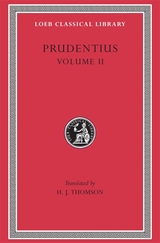 Prudentius, Volume II: Against Symmachus 2. Crowns of Martyrdom. Scenes From History. Epilogue
Prudentius
Harvard University Press Spirited verse.
Prudentius (Aurelius Prudentius Clemens) was born in AD 348 probably at Caesaraugusta (Saragossa) and lived mostly in northeastern Spain, but visited Rome between 400 and 405. His parents, presumably Christian, had him educated in literature and rhetoric. He became a barrister and at least once later on an administrator; he afterwards received some high honor from Emperor Theodosius. Prudentius was a strong Christian who admired the old pagan literature and art, especially the great Latin poets whose forms he used. He looked on the Roman achievement in history as a preparation for the coming of Christ and the triumph of a spiritual empire.
The Loeb Classical Library edition of the poems of Prudentius is in two volumes. Volume I presents: “Preface” (Praefatio); “The Daily Round” (Liber Cathemerinon); twelve literary and attractive hymns, parts of which have been included in the Breviary and in modern hymnals; “The Divinity of Christ” (Apotheosis), which maintains the Trinity and attacks those who denied the distinct personal being of Christ; “The Origin of Sin” (Hamartigenia) attacking the separation of the “strict” God of the Old Testament from the “good” God revealed by Christ; “Fight for Mansoul” (Psychomachia), which describes the struggle between (Christian) Virtues and (Pagan) Vices; and the first book of “Against the Address of Symmachus” (Contra Orationem Symmachi), in which pagan gods are assailed.
The second volume contains the second book of “Against the Address of Symmachus,” opposing a petition for the replacement of an altar and statue of Victory; “Crowns of Martyrdom” (Peristephanon Liber), fourteen hymns to martyrs mostly of Spain; “Lines To Be Inscribed under Scenes from History” (Tituli Historiarum), forty-nine four-line stanzas that are inscriptions for scenes from the Bible depicted on the walls of a church; and an Epilogue.
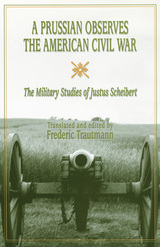 A Prussian Observes the American Civil War: The Military Studies of Justus Scheibert
Edited & Translated by Frederic Trautmann
University of Missouri Press, 2001
Prussia, like much of nineteenth-century Germany, was governed by the belief that knowledge, and thus understanding, was best derived from direct observation and communicated through documentation. Justus Scheibert, an officer in the Royal Prussian Engineers, was therefore sent to the United States for seven months to observe the Civil War and report the effects of artillery on fortifications. His interests, however, surpassed that limited assignment, and his observations, as well as the writings translated in this work, went on to include tactics, strategy, logistics, intelligence, combined operations, and the medical service.
Scheibert, an expert on warfare, had access to the Confederate high command, including such luminaries as Robert E. Lee, J. E. B. Stuart, and Stonewall Jackson. He brought to the war not only the fresh perspective of a foreigner, but also the insightful eye of a career military officer and a skillful author and correspondent. Although he was personally sympathetic to the South, Scheibert researched both sides of the conflict in order to write unbiased, informed commentary for his fellow Prussian officers. His firsthand account of many aspects of the Civil War included a theoretical discussion of every branch of service and the Confederate high command, illustrated with his personal observations.
Sheibert's narrative portrays soldiers, weaponry, and battles, including the first, and one of the few, studies of combined operations in the Civil War. Trautmann combines two of Scheibert's publications, The Civil War in the North American States: A Military Study for the German Officer (1874) and Combined Operations by Army and Navy: A Study Illustrated by the War on the Mississippi, 1861-1863 (ca. 1887), which for decades influenced German military writing. Trautmann's translations evince the grace and achieve the readability of Scheibert's intricate and complex works.
A Prussian Observes the American Civil War makes an important addition to Civil War studies and will appeal greatly to professional historians and those interested in, and dedicated to, Civil War and military studies.
A Pryor Commitment
David Pryor
Butler Center for Arkansas Studies, 2009 David Pryor’s career of public service is unparalleled in Arkansas history: he has been elected state representative, congressman, governor, and, alongside Dale Bumpers, U.S. senator (1979–1997). Through it all, Pryor’s curiosity, compassion, and concern for ordinary Americans draw the reader from one colorful vignette to another.
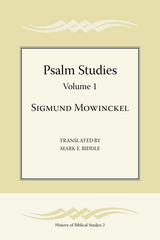 Psalm Studies, Volume 1
Sigmund Mowinckel
SBL Press, 2014 Sigmund Mowinckel is widely recognized as one of the leading forces in Psalms research during the twentieth century. Indeed, the culmination of Mowinckel’s thought and work, The Psalms in Israel’s Worship, continues to play a significant role in Psalms scholarship today. Not as well known are the seminal studies that prepared the ground for Mowinckel’s later work, the six Psalmenstudien that are translated here into English for the first time. In these studies Mowinckel explores with care and in detail such topics as: “'Awen and the Psalms of Individual Lament”; “YHWH’s Enthronement Festival and the Origin of Eschatology”; “Cultic Prophecy and Prophetic Psalms”; “The Technical Terms in the Psalm Superscriptions”; “Blessing and Curse in Israel’s Cult and Psalmody”; and “The Psalmists.” Anyone interested in Psalms study, especially the possible role of the New Year’s enthronement festival within Israel’s cult and its relation to the Psalter, will find much to consider in these classic works.
 Psalm Studies, Volume 2
Sigmund Mowinckel
SBL Press, 2014 Sigmund Mowinckel is widely recognized as one of the leading forces in Psalms research during the twentieth century. Indeed, the culmination of Mowinckel’s thought and work, The Psalms in Israel’s Worship, continues to play a significant role in Psalms scholarship today. Not as well known are the seminal studies that prepared the ground for Mowinckel’s later work, the six Psalmenstudien that are translated here into English for the first time. In these studies Mowinckel explores with care and in detail such topics as: “'Awen and the Psalms of Individual Lament”; “YHWH’s Enthronement Festival and the Origin of Eschatology”; “Cultic Prophecy and Prophetic Psalms”; “The Technical Terms in the Psalm Superscriptions”; “Blessing and Curse in Israel’s Cult and Psalmody”; and “The Psalmists.” Anyone interested in Psalms study, especially the possible role of the New Year’s enthronement festival within Israel’s cult and its relation to the Psalter, will find much to consider in these classic works.
Psalms
Julia Fiedorczuk
University of Wisconsin Press, 2023 Fiedorczuk was inspired by her readings of the original Hebrew Psalms, as well as by the process of learning to sing. In her poems she captures the heartache and joy of the Biblical Psalms, but in the context of modern life. She addresses climate change, loss of biodiversity, the upheavals of migration, and, in her most recent poems, the return of war to Europe: “Even when bombs are falling you ought to write / perhaps even especially when people lost / in the woods are saying cold, she is so cold.” Fiedorczuk writes of the natural world, the built environment, motherhood, brotherhood, and of vast and tiny passages of time. And as she does, she discovers a new voice, singing to soothe and inspire. whose flower made from a clod of pain will enfold
the milky way with its claws
of time, its pelt of stars?
—Excerpt from “Psalm XVII”
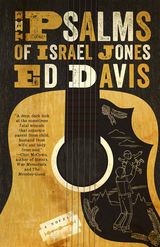 The Psalms of Israel Jones: A Novel
Ed Davis
West Virginia University Press, 2014 Secrets and snakes, rock and gospel, guilt and grace.
The Psalms of Israel Jones is the story of a father and son’s journey towards spiritual redemption. This novel tells the tale of a famous father trapped inside the suffocating world of rock and roll, and his son who is stranded within the bounds of conventional religion. When Reverend Thomas Johnson receives an anonymous phone call, he learns his Dylanesque rock star father is acting deranged on stage, where he’s being worshipped by a cult of young people who slash their faces during performances. In his declining years, Israel Jones has begun to incite his fans to violence. They no longer want to watch the show—they want to be the show. Eager to escape troubles with his congregation as well as gain an apology from his dad for abandoning his family, Reverend Johnson leaves town and joins Israel Jones’s Eternal Tour. This decision propels him to the center of a rock and roll hell, giving him one last chance to reconnect with his father, wife, congregation—and maybe even God. The Psalms of Israel Jones is the 2010 Hackney Literary Award winner for an unpublished manuscript.
The Psalms of Solomon: Language, History, Theology
Eberhard Bons
SBL Press, 2015 A fresh analysis of that sheds new light on the Psalms of Solomon Researchers whose work focuses on the Psalms of Solomon, experts on the Septuagint, and scholars of Jewish Hellenistic literature take a fresh look at debates surrounding the text. Authors engage linguistic, historical, and theological issues including the original language of the psalms, their historical setting, and their theological intentions with the goal of expanding our understanding of first-century BCE Jewish theology. Features: - New methods applied to open questions of authorship and historical context
- Focusd scholarly attention on a work of theological and literary importance
- Revised essays originally presented at the First International Meeting on the Psalms of Solomon
The Psalms of Solomon: Texts, Contexts, and Intertexts
Patrick Pouchelle
SBL Press, 2021 Explore new approaches to the Psalms of Solomon
The Psalms of Solomon: Texts, Contexts, and Intertexts explores a unique pseudepigraphal document that bears witness to the 63 BCE Roman conquest of Jerusalem. Essays address a variety of themes, notably their political, social, religious, and historical contexts, through the lens of anthropology of religion, cognitive science, socioeconomic theory, and more. Contributors include Kenneth Atkinson, Eberhard Bons, Johanna Erzberger, Angela Kim Harkins, G. Anthony Keddie, Patrick Pouchelle, Stefan Schreiber, Shani Tzoref, and Rodney A. Werline.
 Psellos and the Patriarchs: Letters and Funeral Orations for Keroullarios, Leichoudes, and Xiphilinos
Michael Psellos
University of Notre Dame Press, 2015 Psellos and the Patriarchs: Letters and Funeral Orations for Keroullarios, Leichoudes, and Xiphilinos contains translations of the funeral orations written by Michael Psellos, the leading Byzantine intellectual of the eleventh century, for the three ecumenical patriarchs of Constantinople whom he knew best: Michael Keroullarios (1043-1058), Konstantinos Leichoudes (1059-1063), and Ioannes Xiphilinos (1064-1075). The orations are significant sources for the lives and reputations of these patriarchs; they are also a prime source for the educational reforms made by the emperor Konstantinos IX Monomachos in the mid-1040s, and for many events of that turbulent century that Psellos witnessed, including popular uprisings, plots, civil wars, and the battle with the Catholic legates in 1054. Never before translated into English, the orations and letters are introduced by a detailed analysis of Psellos’ historical relationships with the patriarchs and an interpretation of the works.
The orations are not only important historical sources: they are crucial specimens of Byzantine rhetoric in a period of transition, as well as being key texts in the corpus of Psellos himself. Psellos used them to score important points in support of his own philosophical agenda and to make broader claims about ethics and metaphysics and the role of learning in political and ecclesiastical life. The orations are here accompanied by translations of a long letter that Psellos wrote to Keroullarios and a pair of letters to Xiphilinos, in which he defended key aspects of his philosophical project.
"This volume of translations, by two of the best contemporary experts on Psellos and his times, is an important addition to a growing body of scholarship on Byzantium in the eleventh century. Because of the four personalities involved, Psellos and the Patriarchs is an extremely valuable source for historians; it provides a wealth of material on such topics as the secular and ecclesiastical careers of leading intellectuals; relations between patriarch and emperor; the functioning of rhetoric at the highest levels in society; and not least, the personality, character, and literary prowess of Psellos himself." —John Duffy, Dumbarton Oaks Professor of Byzantine Philology and Literature, Emeritus, Harvard University
 Pseudo-Dionysius and the Metaphysics of Aquinas
Fran O'Rourke
University of Notre Dame Press, 2005 "This is one of the two or three most important books on Aquinas published in the last fifty years." —Alasdair MacIntyre, University of Notre Dame
Although Pseudo-Dionysius was, after Aristotle, the author whom Thomas Aquinas quoted most frequently, surprisingly little attention has been paid to the role of this Neoplatonist thinker in the formation of Aquinas' philosophy. Fran O'Rourke's book is the only available work that investigates the pervasive influence of Pseudo-Dionysius on Aquinas, while at the same time examining the latter's profound originality. Central themes discussed by O'Rourke include knowledge of the absolute, existence as the first and most universal perfection, the diffusion of creation, the hierarchy of creatures, and their return to God as final end. O'Rourke devotes special attention to the Neoplatonist element in Aquinas' notion of "being" as intensity or degree of perfection. He also considers the relation of being and goodness in light of Aquinas' nuanced reversal of Dionysius' theory of the primacy of the good, and Aquinas' arguments for the transcendental nature of goodness.
 Pseudo-Malesko: A Ukrainian Apocryphal Parliamentary Speech of 1615-1618
Bohdan A. Struminski
Harvard University Press Struminski's study concentrates on text-critical, biographical, and linguistic aspects of the Speech in order to demonstrate that the original (no longer extant) was in Ukrainian and that it was an actual speech delivered at the Warsaw Diet, not a parody of such a speech as has been assumed. The author has discovered hitherto unknown copies of the text and archival materials concerning the historical Meleško. With the use of this data Struminski was able to build a stemma for the interrelationship of the extant copies and to reconstruct the archetype of the text.
Further, the author has established little known facts of Meleško's life and connected them with the origin of the Speech. The study concludes with a full glossary to the text, with translation of all foreign words into English.
The work will be useful to experts and students in the field of Slavic languages and literature.
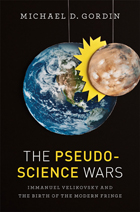 The Pseudoscience Wars: Immanuel Velikovsky and the Birth of the Modern Fringe
Michael D. Gordin
University of Chicago Press, 2012 Properly analyzed, the collective mythological and religious writings of humanity reveal that around 1500 BC, a comet swept perilously close to Earth, triggering widespread natural disasters and threatening the destruction of all life before settling into solar orbit as Venus, our nearest planetary neighbor. Sound implausible? Well, from 1950 until the late 1970s, a huge number of people begged to differ, as they devoured Immanuel Velikovsky’s major best-seller, Worlds in Collision, insisting that perhaps this polymathic thinker held the key to a new science and a new history. Scientists, on the other hand, assaulted Velikovsky’s book, his followers, and his press mercilessly from the get-go. In The Pseudoscience Wars, Michael D. Gordin resurrects the largely forgotten figure of Velikovsky and uses his strange career and surprisingly influential writings to explore the changing definitions of the line that separates legitimate scientific inquiry from what is deemed bunk, and to show how vital this question remains to us today. Drawing on a wealth of previously unpublished material from Velikovsky’s personal archives, Gordin presents a behind-the-scenes history of the writer’s career, from his initial burst of success through his growing influence on the counterculture, heated public battles with such luminaries as Carl Sagan, and eventual eclipse. Along the way, he offers fascinating glimpses into the histories and effects of other fringe doctrines, including creationism, Lysenkoism, parapsychology, and more—all of which have surprising connections to Velikovsky’s theories. Science today is hardly universally secure, and scientists seem themselves beset by critics, denialists, and those they label “pseudoscientists”—as seen all too clearly in battles over evolution and climate change. The Pseudoscience Wars simultaneously reveals the surprising Cold War roots of our contemporary dilemma and points readers to a different approach to drawing the line between knowledge and nonsense.
 The Psyche and Schizophrenia: The Bond between Affect and Logic
Luc Ciompi
Harvard University Press, 1988 The Psyche and Schizophrenia offers a remarkably clear and comprehensive treatment of biopsychosocial development and psychotic processes. This extraordinary work lays the theoretical foundation for understanding the relationships between feeling and thinking (affect and logic) in normal as well as in pathological conditions, especially schizophrenia. Ciompi's affective-cognitive theory integrates interpersonal, familial, and social interactions with intrapsychic mental structures and yields startling new insights into the origins of "schizophrenic alienation." While Ciompi acknowledges the important role that genetic and biological models play in schizophrenia, he maintains that it is largely the psychosocial factors that determine long-term prognosis. Thus, The Psyche and Schizophrenia elaborates a number of new therapeutic approaches to the management of biological as well as environmental influences.
Drawing upon Piaget, Freud, and systems theory, as well as advanced current research, Ciompi develops a new model of the normal and pathological functioning of the psyche. This model presents cognition and emotion, the structure of logic and the dynamics of affects, as a complementary system governed by "ubiquitous laws of equilibrium."
In this brilliant synthesis of theoretical and empirical research, Ciompi proposes his novel theory of an "affectlogic" that probes the affective structures of logic as well as the logical structures of the emotions. Original in its conception and elegantly written, The Psyche and Schizophrenia is a major contribution to research on schizophrenia, and its penetrating insights and thorough analysis are sure to enrich the field of psychiatry for years to come.
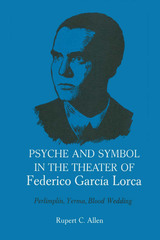 Psyche and Symbol in the Theater of Federico Garcia Lorca: Perlimplin, Yerma, Blood Wedding
By Rupert C. Allen
University of Texas Press, 1974 Symbol and psyche are twin concepts in contemporary symbological studies, where the symbol is considered to be a "statement" by the psyche. The psyche is a manifold of conscious and unconscious contents, and the symbol is their mediator. Because Lorca's dramatic characters are psychic entities made up of both conscious and unconscious elements, they unfold, grow, and meet their fate in a dense realm of shifting symbols. In Psyche and Symbol in the Theater of Federico García Lorca, Rupert Allen analyzes symbologically three dramatic works of Lorca. He has found Perlimplín to be a good deal more complex in both psyche and symbol than it has been admitted to be. Yerma involves psychological complications that have not been considered in the light of modern critical analysis, and the symbolic reaches ofBlood Wedding have until this book remained largely unexplored. Lorca was no stranger to the "agony of creation," and this struggle sometimes appears symbolically in the form of his dramatic characters. Both Yerma and Blood Wedding reflect specific problems underlying the creative act, for they are "translations" into the realm of sexuality of the creative turmoil experienced by Lorca the poet. Perlimplín portrays the paradoxical suicide as a self-murder born out of the futile attempt to create not a poem, but a self. Previous criticism of these three plays has been dominated by critical assumptions that are transcended by Lorca's own twentieth-century mentality. Allen's analysis provides a new view of Lorca as a dramatist and presents new material to students of symbology.
 Psyche Running: Selected Poems, 2005–2022
Durs Grünbein
Seagull Books, 2023 A dazzling selection of more than one hundred poems that trace the development of Durs Grünbein’s work over the past two decades.
Born in Dresden in 1962, Durs Grünbein is the most significant and successful poet of his generation in Germany. Since 1988, when the then-twenty-five-year-old burst onto the scene with his poetry collection Grauzone morgens—a mordant reckoning with the East Germany he grew up in—Grünbein has published more than thirty books of poetry and prose, which have been translated into dozens of languages.
In 2005 the volume Ashes for Breakfast introduced Grünbein to English-language readers for the first time by sampling poetry from his first four collections. Psyche Running picks up where that volume left off and offers a selection of poems from his nine subsequent collections, which shows how Grünbein has developed from his ironic take on the classical into an elegiac exploration of history through dream fragments and poems with a haunting existential unease.
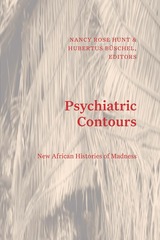 Psychiatric Contours: New African Histories of Madness
Nancy Rose Hunt and Hubertus Büschel, editors
Duke University Press, 2024 Psychiatric Contours investigates new histories of psychiatry, derangement, and agitated subjectivities in colonial and decolonizing Africa. The volume lets the multivalent term madness broaden perception, well beyond the psychiatric. Many chapters detect the mad or the psychiatric in unhinged persons, frantic collectives, and distressing situations. Others investigate individuals suffering from miscategorization. A key Foucauldian word, vivacity, illuminates how madness aligns with pathology, creativity, turbulence, and psychopolitics. The archives, patient-authored or not, speak to furies and fantasies inside asylums, colonial institutions, decolonizing missions, and slave ships. The frayed edges of politicized deliria open up the senses and optics of psychiatry’s history in Africa far beyond clinical spaces and classification. The volume also proposes fresh concepts, notably the vernacular, to suggest how to work with emic clues in a granular fashion and telescope the psychiatric within histories of madness. With chapters stretching across much of ex-British and ex-French colonial Africa, Psychiatric Contours attends to the words, autobiographies, and hallucinations of the stigmatized and afflicted as well as of the powerful. Expatriate psychiatrists with cameras, prying authorities, fearful missionaries, and colonial anthropologists enter these readings beside patients, asylums, and boarding schools via research on possession “hysteria” and schizophrenia. In brief, this book demonstrates novel ways of writing not only medical history but all subaltern and global histories.
Contributors. Hubertus Büschel, Raphaël Gallien, Matthew M. Heaton, Richard Hölzl, Nancy Rose Hunt, Richard C. Keller, Sloan Mahone, Nana Osei Quarshie, Jonathan Sadowsky, Romain Tiquet
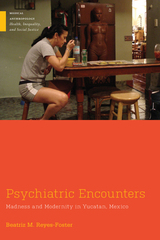 Psychiatric Encounters: Madness and Modernity in Yucatan, Mexico
Reyes-Foster, Beatriz M.
Rutgers University Press, 2019 Psychiatric Encounters presents an intimate portrait of a public inpatient psychiatric facility in the Southeastern state of Yucatan, Mexico. The book explores the experiences of patients and psychiatrists as they navigate the challenges of public psychiatric care in Mexico. While international reports condemning conditions in Mexican psychiatric institutions abound, Psychiatric Encounters considers the large- and small-scale obstacles to quality care encountered by doctors and patients alike as they struggle to live and act like human beings under inhumane conditions. Beatriz Mireya Reyes-Foster closely examines the impact of the Mexican state’s neoliberal health reforms on how patients access care and doctors perform their duties. Engaging with madness, modernity, and identity, Psychiatric Encounters considers the enduring role of colonialism in the context of Mexico's troubled contemporary mental health care institutions.
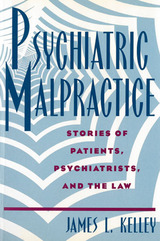 Psychiatric Malpractice: Stories of Patients, Psychiatrists, and the Law
Kelley, James L
Rutgers University Press, 1996 • Two weeks after Johnny Moore was discharged from a psychiatric hospital, the deeply troubled teenager took a lethal overdose of the antidepressant prescribed by his psychiatrist. • Dennis Gould suffered from paranoid schizophrenia. He let a streetcar cut off his right arm rather than carry out his divine mission to kill his ex-girlfriend, Shelley Rotman; three years later––while under psychiatric care and after several hospitalizations––Gould stabbed the young woman to death with his left arm. • After seven months of psychotherapy as his only treatment in a private psychiatric hospital, Raphael Osheroff’s symptoms of the agitated depression that had destroyed his medical practice and personal life were more severe than ever. At a second hospital, Osheroff was given the antidepressant drugs he had been asking for––and he rapidly improved. • Joan Barkley went to Dr. Jonathan Fox for help in overcoming her addiction to Darvon. After a year of therapy, the twice-weekly sessions turned into intense sexual encounters, which continued for two years. James Kelley tells the true stories of people who sought help from psychiatrists and ended up suing them for malpractice. These tales are compelling, tragic, and sometimes bizarre. They offer a unique view into a relationship that is normally confidential and caring––but can be catastrophic when it goes wrong. Kelley discusses several cases that received national attention: former Reagan administration press secretary James Brady's suit against the psychiatrist who had been treating John Hinckley; the Tarasoff decision that established the psychiatrist’s duty to warn potential victims of a patient’s threats; and the disciplinary proceedings against Dr. Margaret Bean-Bayog for her unusual “mothering” treatment of Paul Lozano. Kelley accompanies detailed accounts of courtroom clashes––based on court records––with clear, even-handed treatments of four kinds of psychiatric malpractice cases: a patient’s suicide, a patient’s violence against other people, a psychotherapist's sexual misconduct, and the use of unconventional treatments. With a wealth of examples, he explains the role of psychiatrists as expert witnesses against each other, the difficulties of predicting the outcomes of these suits, and the balances psychiatrists and judges have to strike between the duties owed to patients, on the one hand, and to society on the other. Whether you identify with the patients or the psychiatrists, you will find these tales unforgettable. Kelley writes in nontechnical language for the general reader, stressing the human elements. His lucid analyses of key, current issues make his book essential reading for professionals in mental health or law––and for anyone contemplating a malpractice suit.
 A Psychiatric Primer for the Veteran’s Family and Friends
Alexander G. Dumas and Grace Graham Keen
University of Minnesota Press, 1945 A Psychiatric Primer for the Veteran's Family and Friends was first published in 1945. Minnesota Archive Editions uses digital technology to make long-unavailable books once again accessible, and are published unaltered from the original University of Minnesota Press editions. For the individual as for the nation, war is not done with when the guns stop firing and the soldiers come home. Its continuing effects are easily recognized in the lives of the maimed and the disfigured; they are no less distressingly real for those whose injuries are of the mind and emotions and nerves. And of these a half million or more have been discharged from the armed services. What can families and friends do to help these men on their road back to health? A Psychiatric Primer answers this question in direct and practical terms. Affection and the best of intentions cannot alone tell one how to deal wisely and effectively with war torn nerves in a husband, son, friend, or fellow worker. One needs also intelligent understanding and a sound knowledge of the truly helpful attitude and behavior in a given situation. It is this understanding and this knowledge that A Psychiatric Primer offers to families and friends of returned servicemen.
Psychiatry and Behavioral Science: An Introduction and Study Guide for Medical Students
edited by David A. Baron and Ellen H. Sholevar
Temple University Press, 2008 This easy-to-read, unique format text combines introductory psychiatry content with board-style review questions written for first and second year medical students. The book is intended to be used as the required text for pre-clinical psychiatric education. The user-friendly split page format includes clinical vignettes, "fun facts," and relevant art work. Each chapter contains board review questions that prepare the medical student for USMLE Step 1 and COMLEX 1. By using a clinical approach consistent with the needs of today's medical students, the authors hope to prepare first and second year medical students for their exams and clinical rotations.
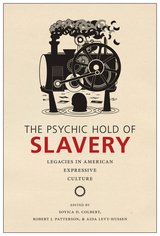 The Psychic Hold of Slavery: Legacies in American Expressive Culture
Soyica Diggs Colbert, Robert J. Patterson, and Aida Levy-Hussen
Rutgers University Press, 2016 What would it mean to “get over slavery”? Is such a thing possible? Is it even desirable? Should we perceive the psychic hold of slavery as a set of mental manacles that hold us back from imagining a postracist America? Or could the psychic hold of slavery be understood as a tool, helping us get a grip on the systemic racial inequalities and restricted liberties that persist in the present day? Featuring original essays from an array of established and emerging scholars in the interdisciplinary field of African American studies, The Psychic Hold of Slavery offers a nuanced dialogue upon these questions. With a painful awareness that our understanding of the past informs our understanding of the present—and vice versa—the contributors place slavery’s historical legacies in conversation with twenty-first-century manifestations of antiblack violence, dehumanization, and social death. Through an exploration of film, drama, fiction, performance art, graphic novels, and philosophical discourse, this volume considers how artists grapple with questions of representation, as they ask whether slavery can ever be accurately depicted, trace the scars that slavery has left on a traumatized body politic, or debate how to best convey that black lives matter. The Psychic Hold of Slavery thus raises provocative questions about how we behold the historically distinct event of African diasporic enslavement and how we might hold off the transhistorical force of antiblack domination.
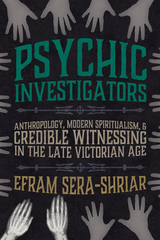 Psychic Investigators: Anthropology, Modern Spiritualism, and Credible Witnessing in the Late Victorian Age
Efram Sera-Schriar
University of Pittsburgh Press, 2022 Psychic Investigators examines British anthropology’s engagement with the modern spiritualist movement during the late Victorian era. Efram Sera-Shriar argues that debates over the existence of ghosts and psychical powers were at the center of anthropological discussions on human beliefs. He focuses on the importance of establishing credible witnesses of spirit and psychic phenomena in the writings of anthropologists such as Alfred Russel Wallace, Edward Burnett Tylor, Andrew Lang, and Edward Clodd. The book draws on major themes, such as the historical relationship between science and religion, the history of scientific observation, and the emergence of the subfield of anthropology of religion in the second half of the nineteenth century. For secularists such as Tylor and Clodd, spiritualism posed a major obstacle in establishing the legitimacy of the theory of animism: a core theoretical principle of anthropology founded in the belief of “primitive cultures” that spirits animated the world, and that this belief represented the foundation of all religious paradigms. What becomes clear through this nuanced examination of Victorian anthropology is that arguments involving spirits or psychic forces usually revolved around issues of evidence, or lack of it, rather than faith or beliefs or disbeliefs.
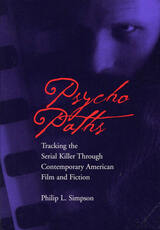 Psycho Paths: Tracking the Serial Killer Through Contemporary American Film and Fiction
Philip L. Simpson
Southern Illinois University Press, 2000 Philip L. Simpson provides an original and broad overview of the evolving serial killer genre in the two media most responsible for its popularity: literature and cinema of the 1980s and 1990s. The fictional serial killer, with a motiveless, highly individualized modus operandi, is the latest manifestation of the multiple murderers and homicidal maniacs that haunt American literature and, particularly, visual media such as cinema and television. Simpson theorizes that the serial killer genre results from a combination of earlier genre depictions of multiple murderers, inherited Gothic storytelling conventions, and threatening folkloric figures reworked over the years into a contemporary mythology of violence. Updated and repackaged for mass consumption, the Gothic villains, the monsters, the vampires, and the werewolves of the past have evolved into the fictional serial killer, who clearly reflects American cultural anxieties at the start of the twenty-first century. Citing numerous sources, Simpson argues that serial killers’ recent popularity as genre monsters owes much to their pliability to any number of authorial ideological agendas from both the left and the right ends of the political spectrum. Serial killers in fiction are a kind of debased and traumatized visionary, whose murders privately and publicly re-empower them with a pseudo-divine aura in the contemporary political moment. The current fascination with serial killer narratives can thus be explained as the latest manifestation of the ongoing human fascination with tales of gruesome murders and mythic villains finding a receptive audience in a nation galvanized by the increasingly apocalyptic tension between the extremist philosophies of both the New Right and the anti-New Right. Faced with a blizzard of works of varying quality dealing with the serial killer, Simpson has ruled out the catalog approach in this study in favor of in-depth an analysis of the best American work in the genre. He has chosen novels and films that have at least some degree of public name-recognition or notoriety, including Red Dragon and The Silence of the Lambs by Thomas Harris, Manhunter directed by Michael Mann, Henry: Portrait of a Serial Killer directed by John McNaughton, Seven directed by David Fincher, Natural Born Killers directed by Oliver Stone, Zombie by Joyce Carol Oates, and American Psycho by Bret Easton Ellis.
Psychoanalysis and Social Theory: The Limits of Sociology
Ian Craib
University of Massachusetts Press, 1989 Provides an introductory analysis of attempts to combine cycle analytical and social theory. Starting from a discussion of the work of Freud, the book goes on to look at more recent attempts to combine the two in the work of members of the Frankfurt school and others such as Christopher Badcock, Christopher Lasch, Talcott Parsons and Eric Erickson. The analysis also covers modern feminist approaches to Freud, notably through the writings of Nancy Chodorow and Juliet Mitchell. The author argues that there is no simple way of combining psychoanalytical and social theory, and that both approaches are limited in scope.
 Psychoanalysis and the Challenge of Islam
Fethi Benslama
University of Minnesota Press, 2009 Unveils the psychoanalytic undercurrents of contemporary Islam Fethi Benslama is a psychoanalyst who, although a secular thinker, identifies himself as a person of Muslim culture who rejects ready-made explanations for Islamic fundamentalism. In that spirit, Benslama demythifies both Islam and Western ideas of the religion by addressing the psychoanalytic root causes of the Muslim world’s clash with modernity and subsequent turn to fundamentalism. Tracing this ideological strain to its origins, Benslama shows that contemporary Islam consists of a fairly recent hybridization of Arab nationalism, theocracy, and an attempt (both naïve and deadly) to ground science in faith. Combining textual analysis and Lacanian and Freudian psychoanalysis, he examines Islam’s foundation, providing fresh readings of the book of Genesis, the Koran, The Arabian Nights, and the work of medieval Islamic philosophers.Refreshingly, Benslama writes without ideological bias and undoes the simplistic, Western view of Islam while refusing to romanticize terrorism or Muslim extremism. This is a penetrating work that reveals an alternate history of the Islamic religion and opens new possibilities for its future development.
Psychoanalysis--A Theory in Crisis
Marshall Edelson
University of Chicago Press, 1988 Marshall Edelson identifies the core theory of psychoanalysis and shows how free association and the case study method can provide rational grounds for believing its clinical inferences about the causal role of unconscious sexual fantasies. "Dr. Edelson has committed himself with gusto, persistence and intelligence [to] a spirited defense of psychoanalysis as science—not necessarily as it is, but as it can be in the best of hands as it should be. . . . It is a defense that I hope can resonate strongly in psychoanalytic ranks. It is also a message that I hope would receive a warm reception in that wider intellectual world where ideas matter and where enlightened social policy and cultural cachet are fostered."—Robert Wallerstein, New York Times Book Review
Psycho-Analytic Explorations
D.W. Winnicott
Harvard University Press, 1989 The editors of The Winnicott Trust have assembled into one volume ninety-two works by the brilliant writer, theoretician, and clinician. This fascinating volume includes, among many important topics, critiques of Melanie Klein's ideas and insights into the work of other psychoanalysts, as well as gems of thought on such concepts as play in the analytic situation, the fate of the transitional object, regression in psychoanalysis, and the use of silence in psychotherapy.
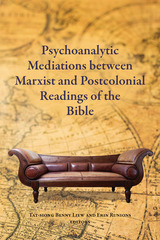 Psychoanalytic Mediations between Marxist and Postcolonial Reading of the Bible
Tat-siong Benny Liew
SBL Press, 2016 The first sustained conversation between Marxism, postcolonialism, and psychoanalysis in biblical studies
This volume pursues critical readings of the Bible that put psychoanalysis into conversation with Marxist and postcolonial criticism. In these essays psychoanalysis provides a way to mediate between Marxism's materialist groundings and postcolonialism's resistance against empire. The essays in the volume illuminate the way empire has shaped the biblical text by looking at the biblical texts' silences, ruptures, oversights, over-emphases, and inexplicable elements. These details are read as symptoms of a set of oppressive material relations that shaped and continue to haunt the text in the ascendancy of the text in the name of the West.
Features:
- Essays and responses from multiple perspectives and geographical locations, including Africa, Australia, Oceania, Latin America, and North America
- Psychoanalysis that considers how the traumas of colonialism manifest both materially and psychically
- Close readings of biblical texts
The Psychoanalytic Mind: From Freud to Philosophy
Marcia Cavell
Harvard University Press, 1993 Cavell elaborates the view, traceable from Wittgenstein to Davidson, that there is no thought, and thus no meaning, without language, and shows how this concurs with psychoanalytic theory and practice. Cavell's argument takes up several issues of continuing interest to both philosophers and psychoanalysts, including the explanation of action, especially irrational action, the concept of subjectivity, the minds of children, the genealogy of morals, and narration in "life stories."
The Psychoanalytic Movement: The Cunning of Unreason
Ernest Gellner
Northwestern University Press, 1996 How did psychoanalysis become so accepted by the public? This provocative book reconstructs the system of ideas upon which the theory and practice of psychoanalysis rests, describing a modern culture that has created a psychic or a spiritual void that psychoanalysis seems custom-made to fill. Gellner approaches the question as a sociologist and attains a broad perspective on the ideas of the psychoanalytic movement as a system of cultural beliefs.
 Psychoanalytic Theory: An Introduction
Anthony Elliott
Duke University Press, 2002 Anthony Elliott presents a comprehensive introduction to psychoanalytic theory and its applications in the social sciences and humanities in this new and fully revised second edition of Psychoanalytic Theory. Elliott provides lucid interpretations of key psychoanalytic theorists such as Freud, Klein, Winnicott, Lacan, Deleuze, Kristeva, and Zizek. This revised edition has much new material, including a survey of psychoanalytic approaches to race and postcolonialism from Fanon to Homi Bhabha, as well as a look at the reframing of sexuality studies by such feminist theorists as Judith Butler, Helene Cixous, and Luce Irigaray. The book follows major themes, highlighting the similarities and differences among influential thinkers and schools of thought. At the same time, Psychoanalytic Theory is structured so that the chapters can be read in any order. Each one includes an introductory overview and summary, as well as biographical and historical material for each theorist discussed. This book is an essential starting point for any exploration of the contribution of psychoanalysis to contemporary theory.
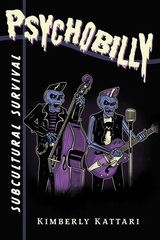 Psychobilly: Subcultural Survival
Kimberly Kattari
Temple University Press, 2020 “I got 1-2-3-4 psychobilly DNA”—Norm and the Nightmarez
Call it punk rockabilly with science-fiction horror lyrics. The outsider musical genre known as psychobilly, which began in 1980s Britain, fuses punk, heavy metal, new wave, and shock rock with carnivalesque elements. The participants in this underground scene sport coffin tattoos and 1950s fashions. Bands such as The Meteors, Nekromantix, and Demented Are Go play with a wild energy and a fast tempo. Sometimes fake blood runs down a performer’s mouth. Psychobilly is ethnomusicologist Kimberly Kattari’s fascinating, decade-long study of this little-known anti-mainstream genre. She provides a history and introduces readers to the core aspects of the music as she interviews passionate performers and fans. Kattari seeks to understand how psychobilly so strongly affects—and reflects—its participants’ lives and identities so strongly. She observes that it provides not only a sense of belonging but a response to feelings and experiences of socio-economic marginalization and stigmatization. Psychobilly shows how this subculture organized around music furnishes an outlet for members to resist normative expectations and survive; they adhere to their own rules by having a good time while going through a hard time.
 Psychobiography and Life Narratives
Dan P. McAdams and Richard L. Ochberg, eds.
Duke University Press, 1988 Psychobiography and Life Narratives explores a number of exciting new approaches to the psychological understanding of individual lives. Eleven prominent scholars in personality and social, developmental, and clinical psychology have contributed chapters presenting innovative perspectives on discerning and developing “the story of my life” that each person tells and lives by. Five chapters show how differing psychobiographical approaches can illuminate the lives of Richard Nixon, Nathaniel Hawthorne, Eleanor Marx (Karl Marx’s youngest daughter), author and feminist Vera Brittain, psychologist Henry Murray, and Sigmund Freud (whose peculiar relationship to Leonardo da Vinci shaped and distorted the first psychobiography every written). Two chapters concentrate on the analysis of life histories collected from contemporary American adults at mid-life crises, and the remaining three chapters provide bold new conceptual and methodological perspectives from which to view the study of individual lives and life stories. This landmark volume promises to make a major contribution to the growing literature on biography and personality. Contributors. Irving E. Alexander, James William Anderson, Leslie A. Carlson, Rae Carlson, Alan C. Elms, Carol Franz, Lynne Layton, Dan P. McAdams, Richard L. Ochberg, George C. Rosenwald, William McKinley Runyan, Abigail G. Stewart, Jacquelyn Wiersma, David G. Winter
Psychodynamics and Cognition
Edited by Mardi J. Horowitz
University of Chicago Press, 1988 Psychodynamics and Cognition outlines ways that methods and ideas from cognitive and information science can be used to reformulate psychoanalytic concepts and to test them outside the psychoanalytic situation. Based on a 1984 conference sponsored by the Health Program of the John D. and Catherine T. MacArthur Foundation, this book presents a series of papers by distinguished scholars in psychoanalysis, cognitive psychology, neuroscience, and linguistics.
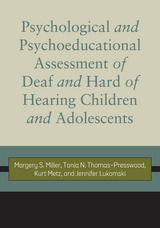 Psychological and Psychoeducational Assessment of Deaf and Hard of Hearing Children and Adolescents
Margery S. Miller
Gallaudet University Press, 2015 The obstacles to valid and meaningful assessment of deaf and hard of hearing children and adolescents are great, yet professionals are regularly asked to conduct comprehensive evaluations to determine resource and program eligibility, test modifications in school, classroom and home recommendations, and referrals. In this important new text, the authors define the skills required of the examiners, explain the complex nature of these assessments, and describe ways to intelligently use existing tests.
Authors Margery S. Miller, Tania Thomas-Presswood, Kurt Metz, and Jennifer Lukomski bring a wealth of knowledge and experience to this in-depth treatment of topics essential to educators and school psychologists. They cover such critical areas as test construction and measurement; the diversity in American Deaf culture; the role of parents in the assessment process; neuropsychological assessments; nonverbal methods for assessing intelligence; and the need for sign language competency when testing cognitive and language skills.
The text concludes with recommendations for the development of valid and reliable tests for all students who are deaf and hard of hearing.
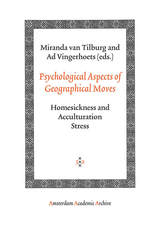 Psychological Aspects of Geographical Moves
Miranda van Tilbug and Ad Vingerhoets
Amsterdam University Press, 2006 Mobility of mankind has increased enormously in the past few decades. People leave their homes and native countries for business and study, for vacation or to flee from unsafe conditions like wars and natural disasters. In all cases the sojourner faces a dual challenge of breaking with the familiar home environment and adjusting to new surroundings. This book deals with the psychological and health consequences of leaving the familiar home and the process of creating a new one. The focus is mainly on acculturation stress and homesickness, which both are relevant to those who travel. Acculturation refers to the process and outcome of a person’s encounter with, and adaptation to, a culturally new and different environment. Homesickness is defined as a depression-like reaction to leaving one’s home. The contributions in this book present empirical data as well as theoretical and conceptual discussions. Causes, consequences, moderating variables, and theoretical explanations are discussed. Both short-term (e.g., vacations) and long-term (e.g. immigration) separations from home receive attention. By combining these different but related topics, this book provides a valuable overview for researchers, teachers, students and professionals working with people who present with problems related to migration or traveling.
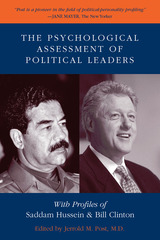 The Psychological Assessment of Political Leaders: With Profiles of Saddam Hussein and Bill Clinton
Jerrold M. Post, Editor
University of Michigan Press, 2005 In an age when world affairs are powerfully driven by personality, politics require an understanding of what motivates political leaders such as Hussein, Bush, Blair, and bin Laden. Through exacting case studies and the careful sifting of evidence, Jerrold Post and his team of contributors lay out an effective system of at-a-distance evaluation. Observations from political psychology, psycholinguistics and a range of other disciplines join forces to produce comprehensive political and psychological profiles, and a deeper understanding of the volatile influences of personality on global affairs. Even in this age of free-flowing global information, capital, and people, sovereign states and boundaries remain the hallmark of the international order -- a fact which is especially clear from the events of September 11th and the War on Terrorism. Jerrold M. Post, M.D., is Professor of Psychiatry, Political Psychology, and International Affairs, and Director of the Political Psychology Program at George Washington University. He is the founder of the CIA's Center for the Analysis of Personality and Political Behavior.
|
|
